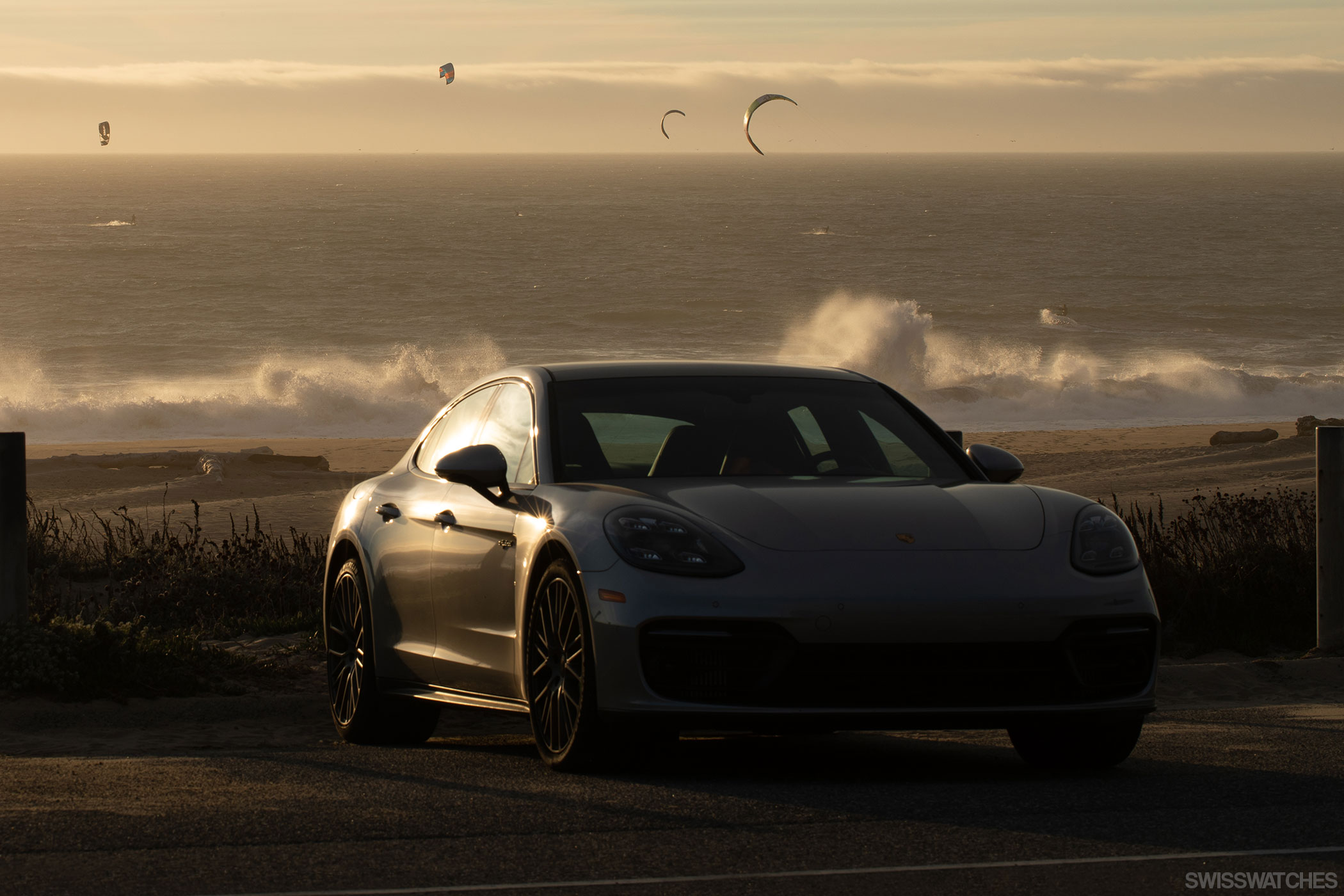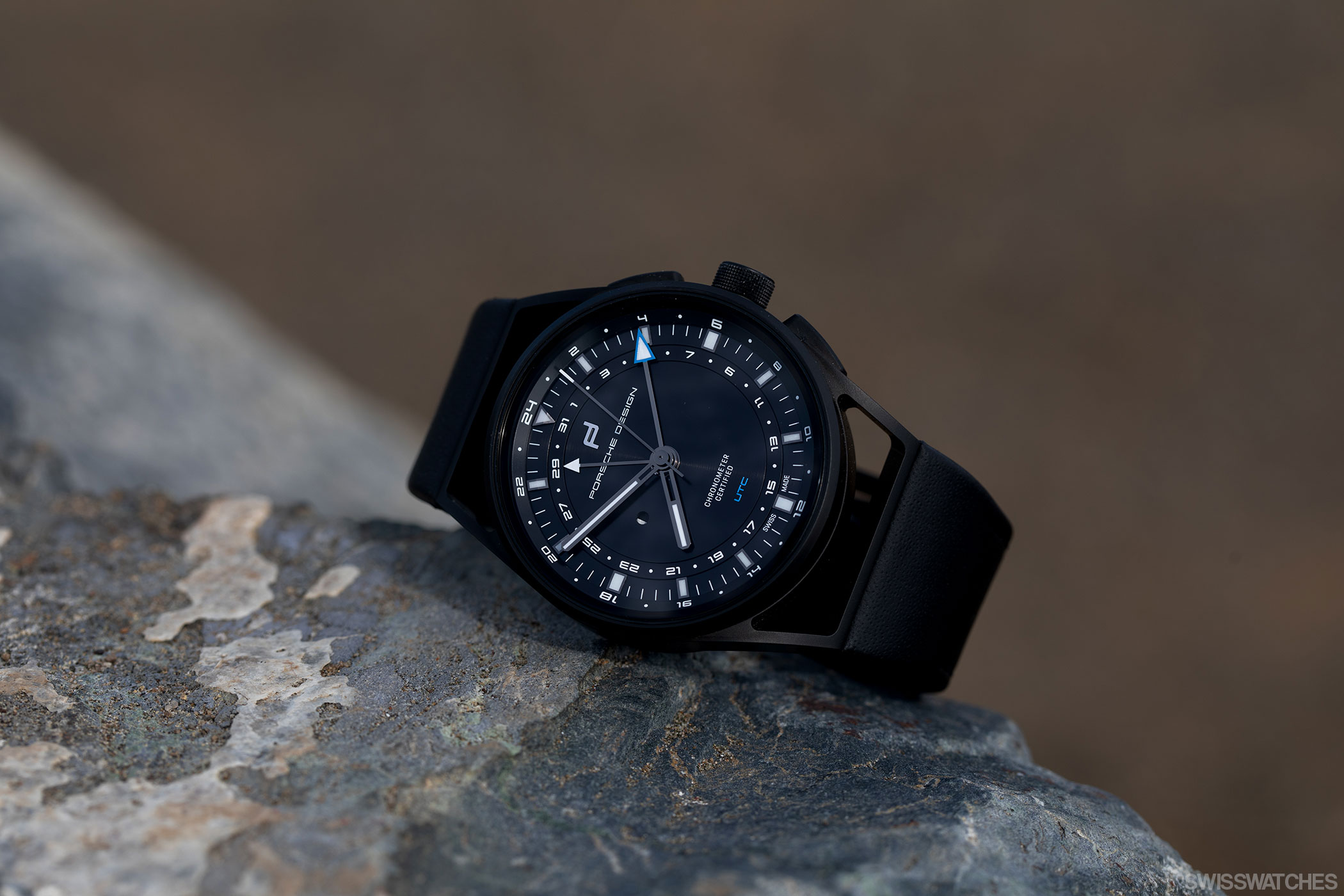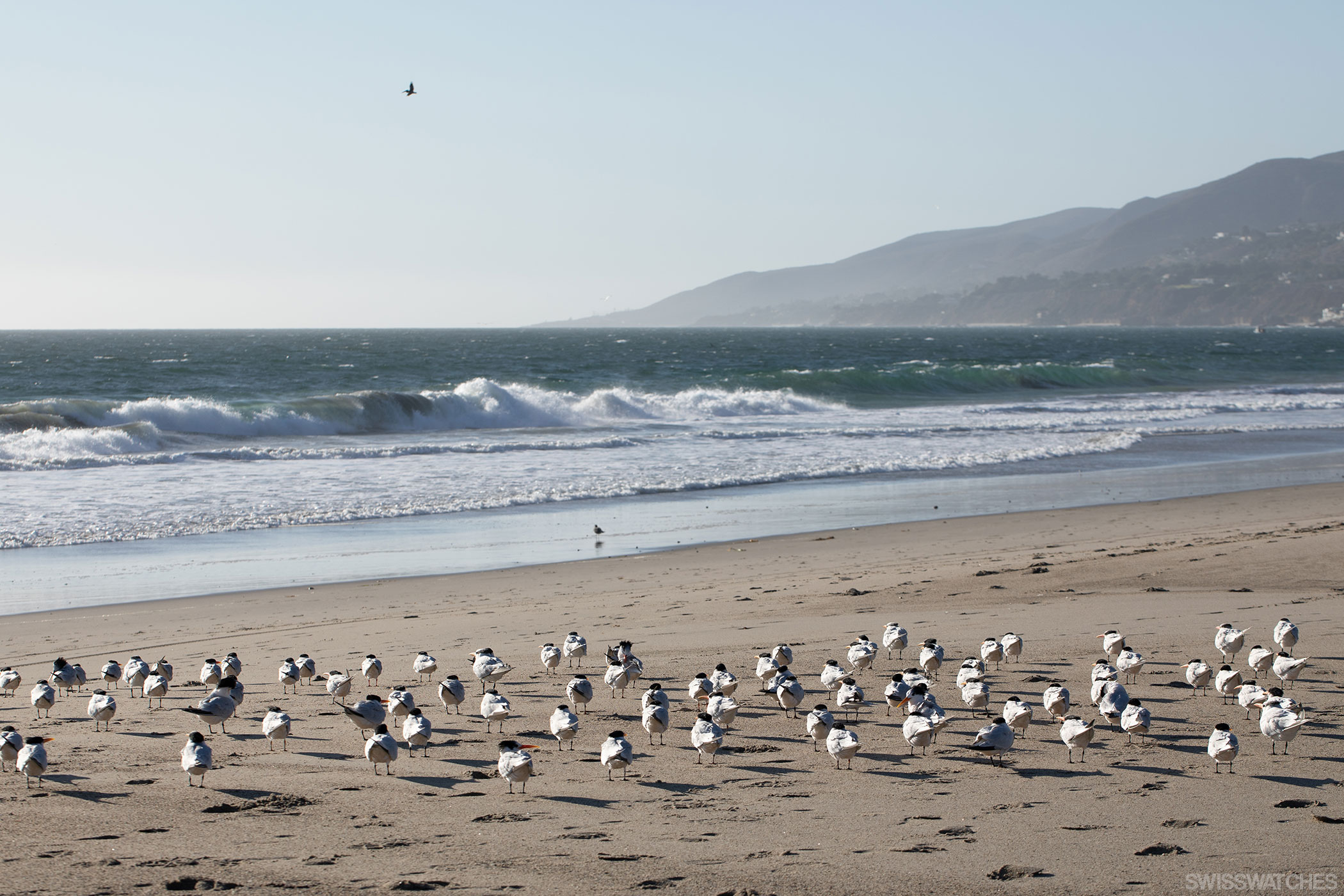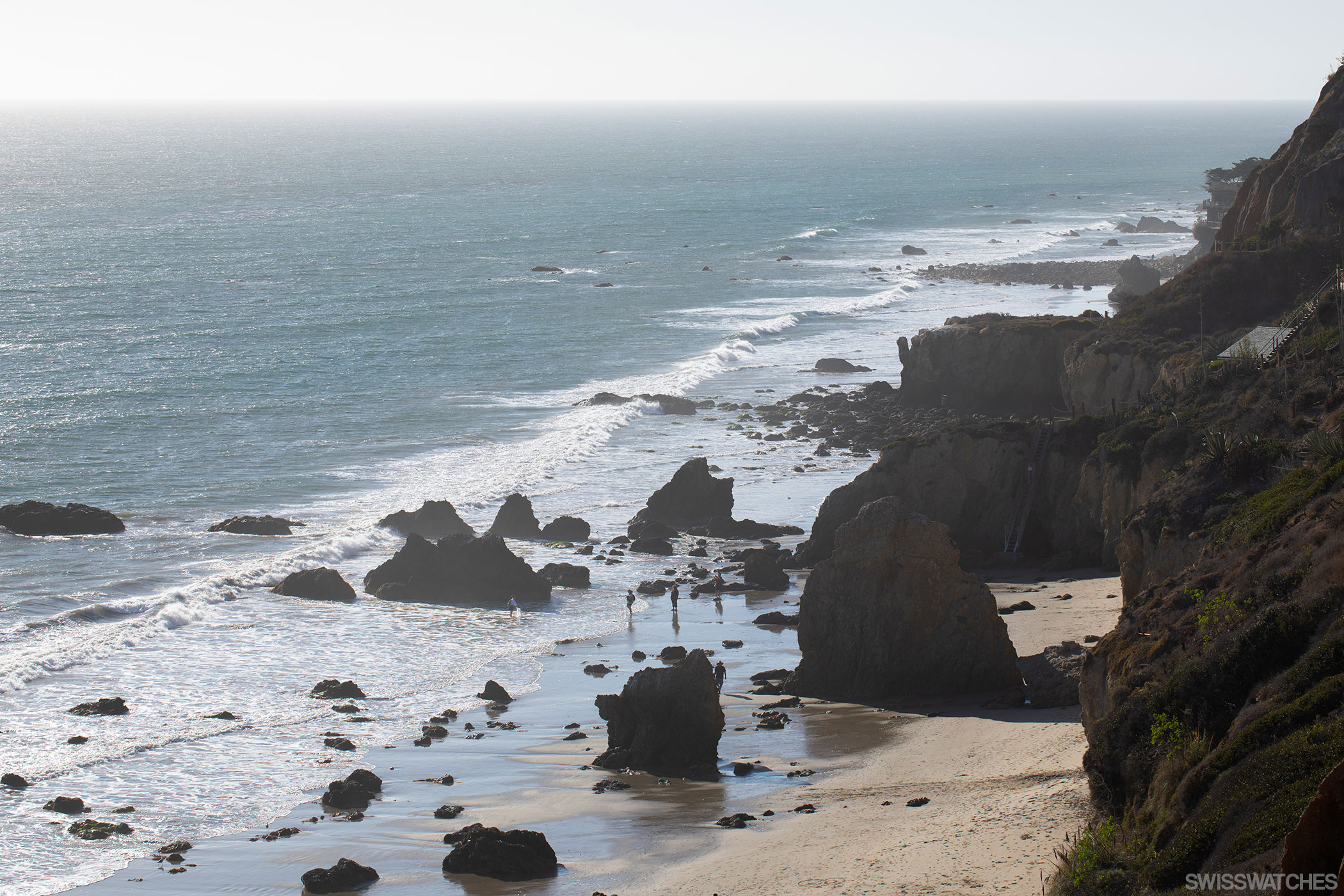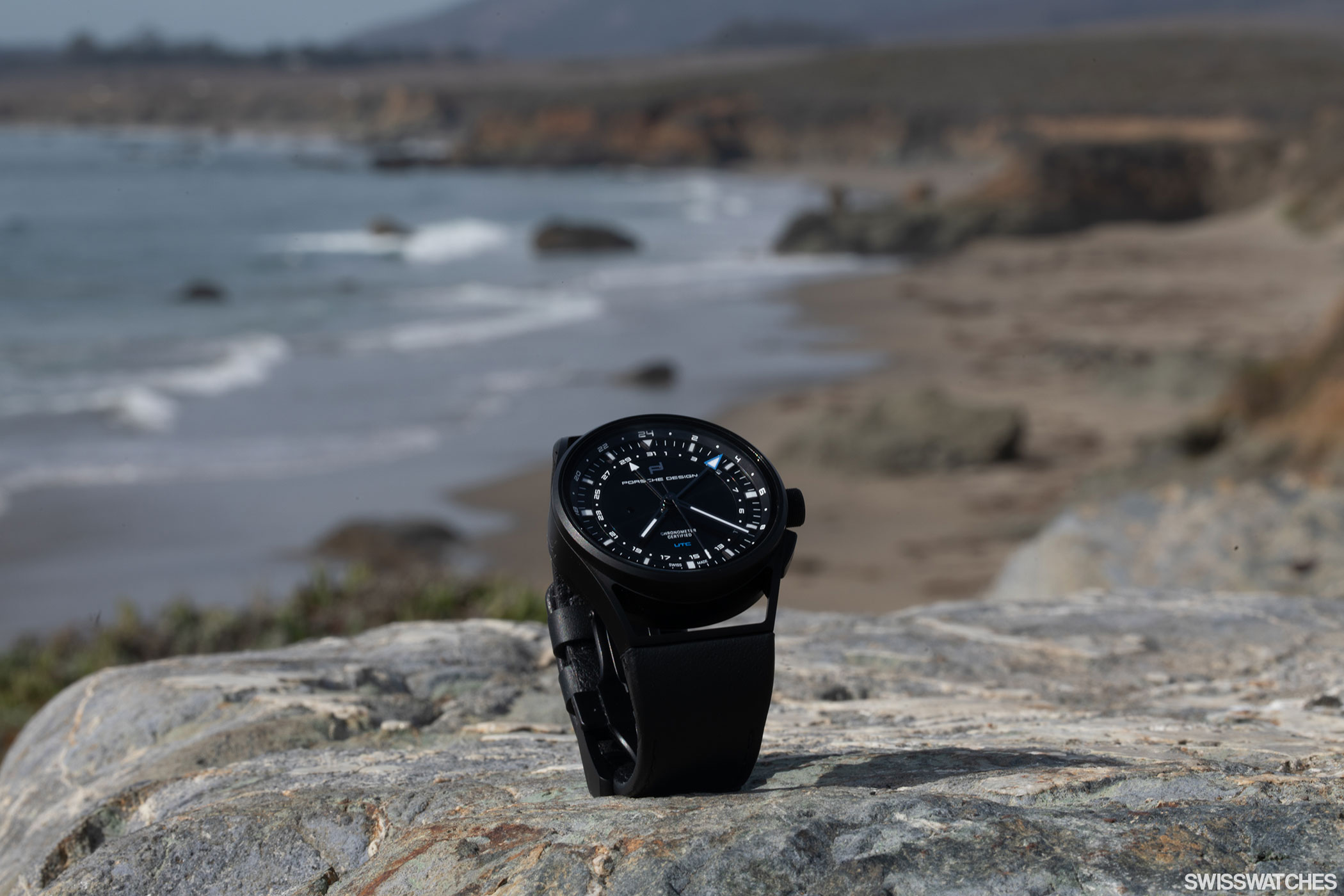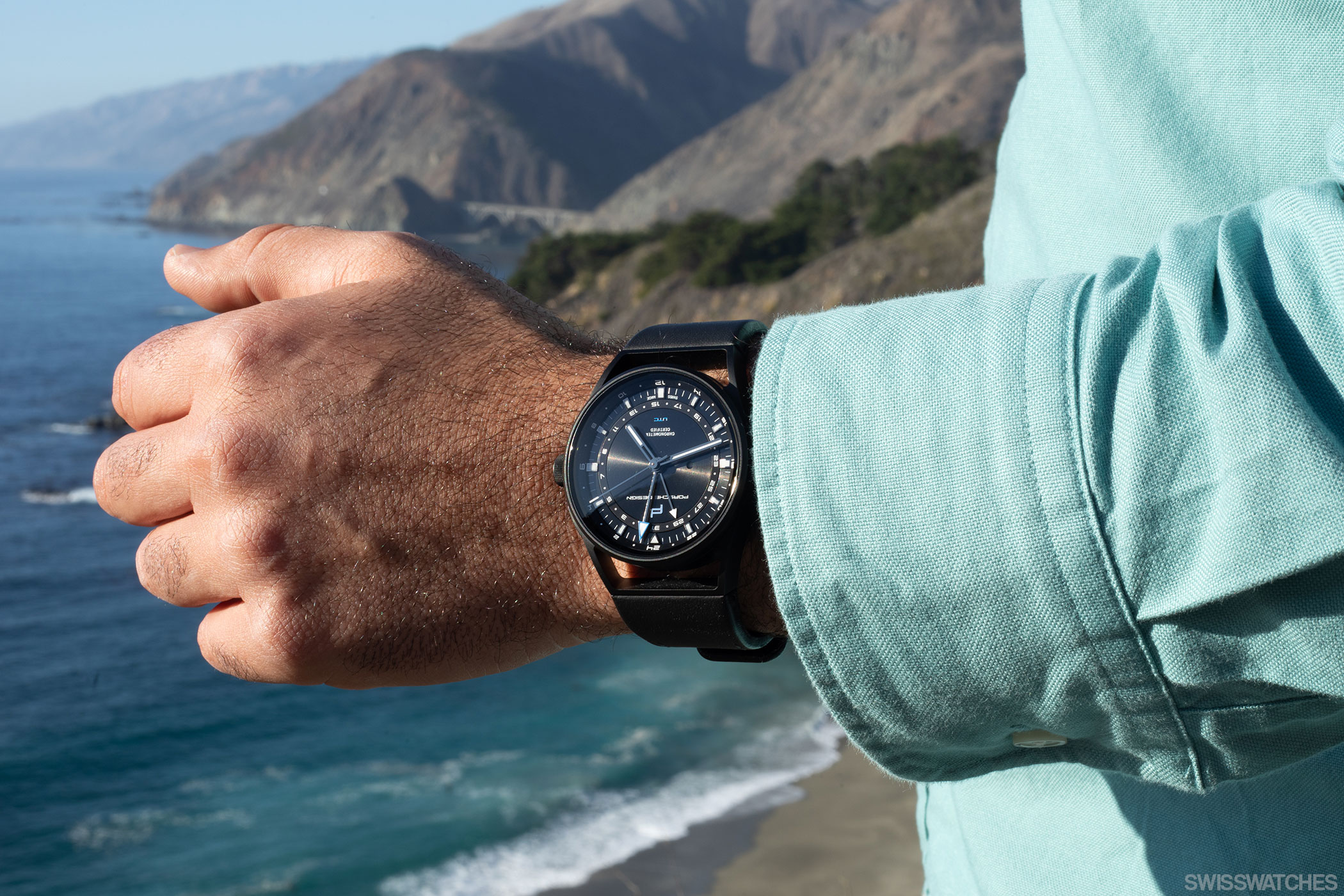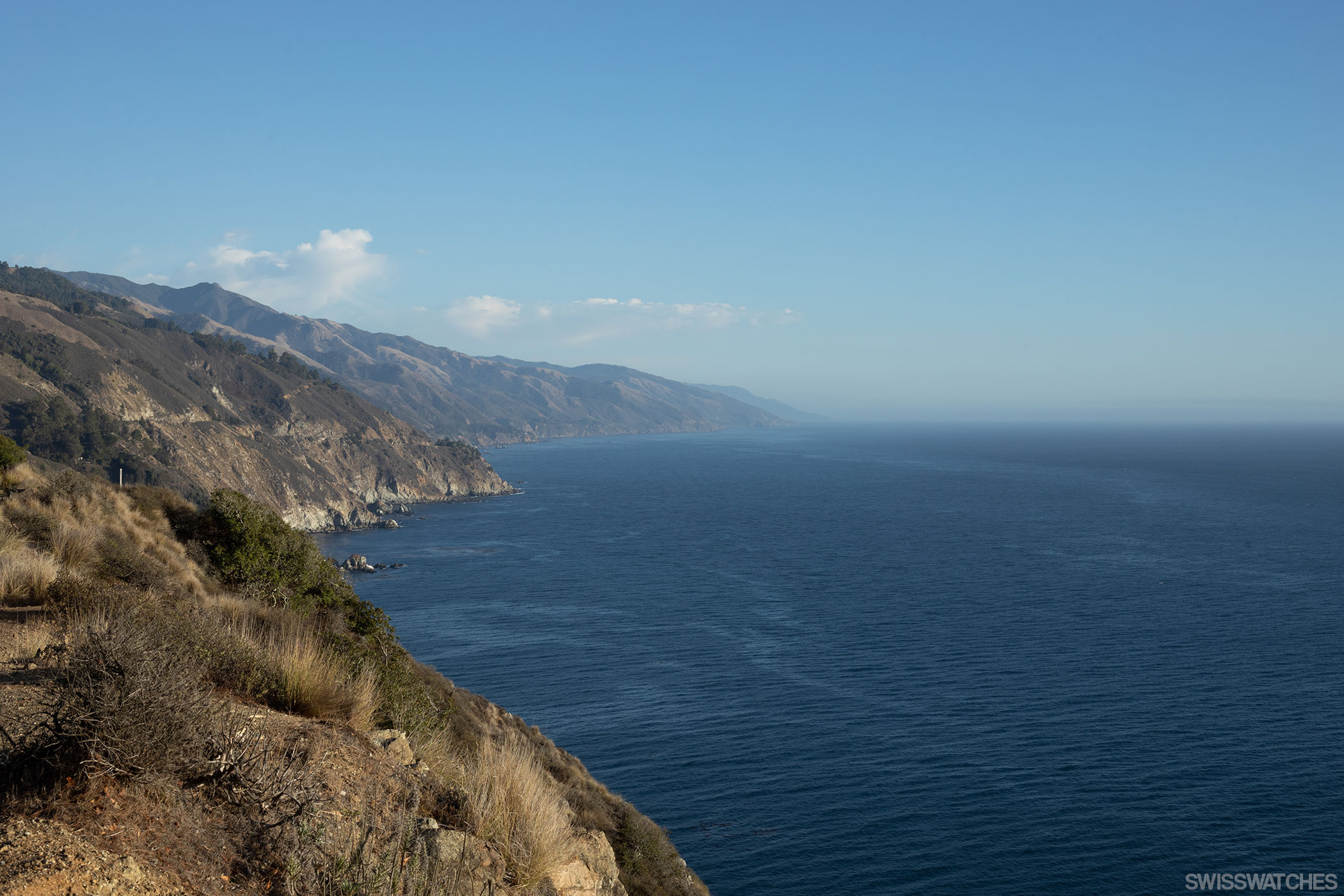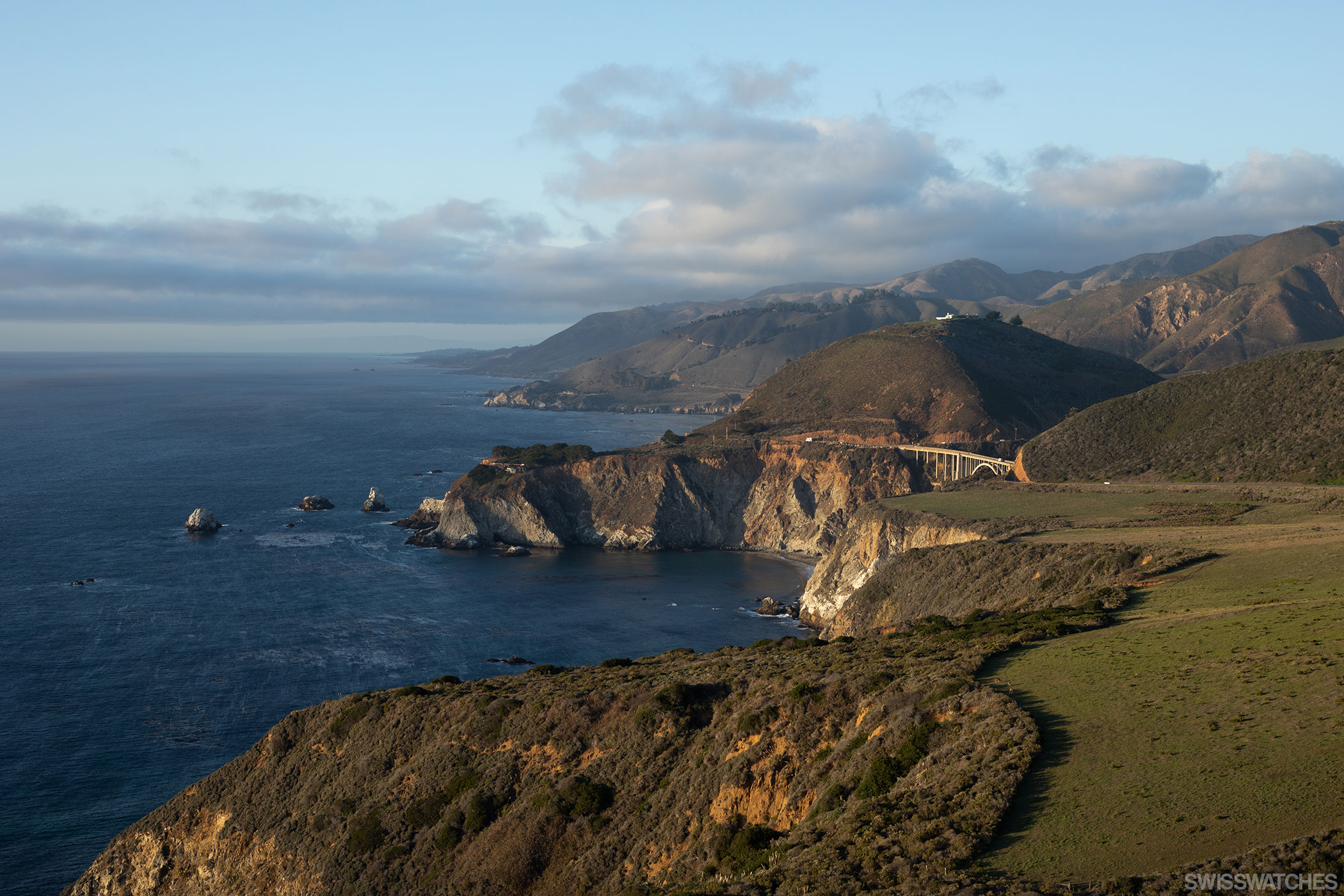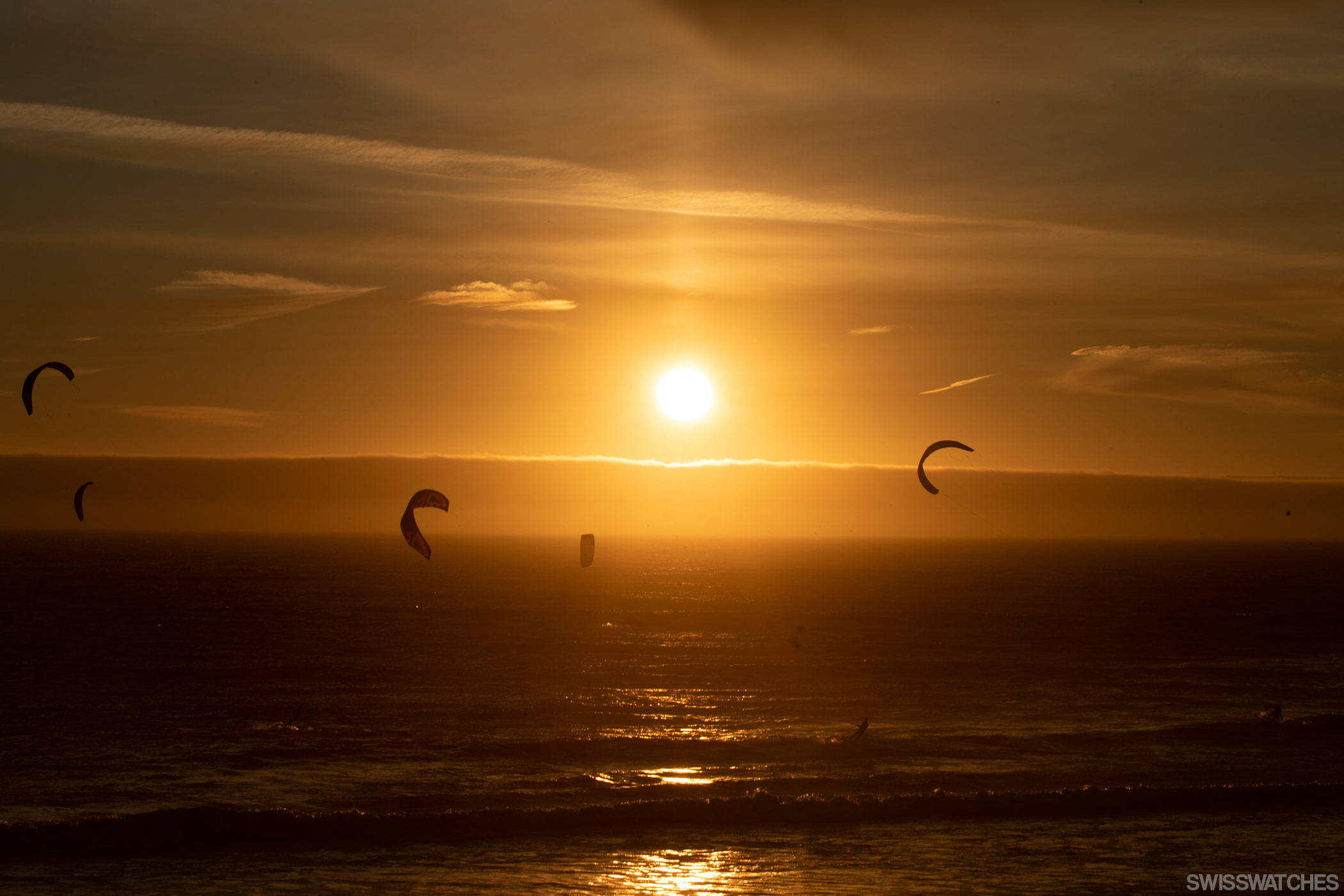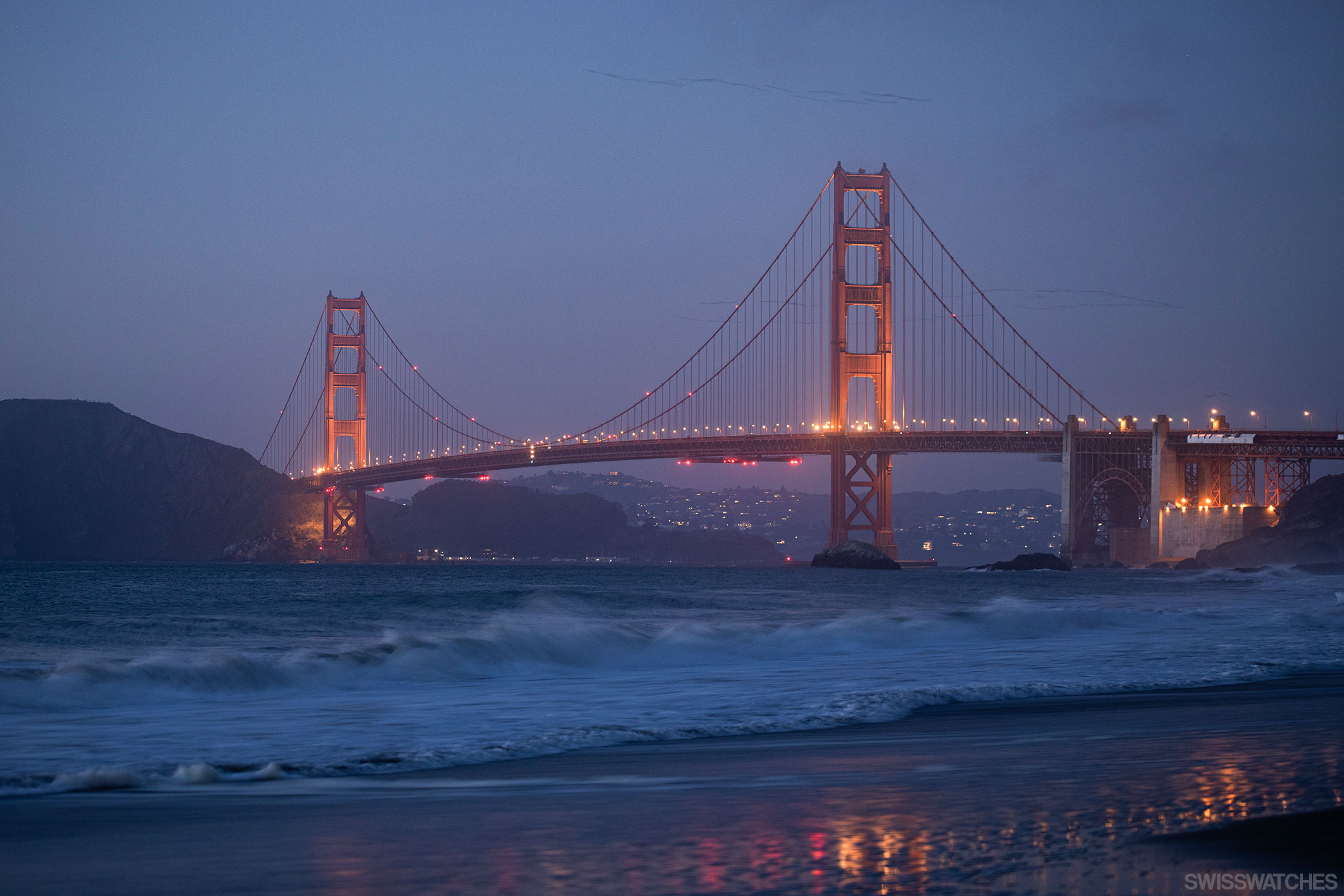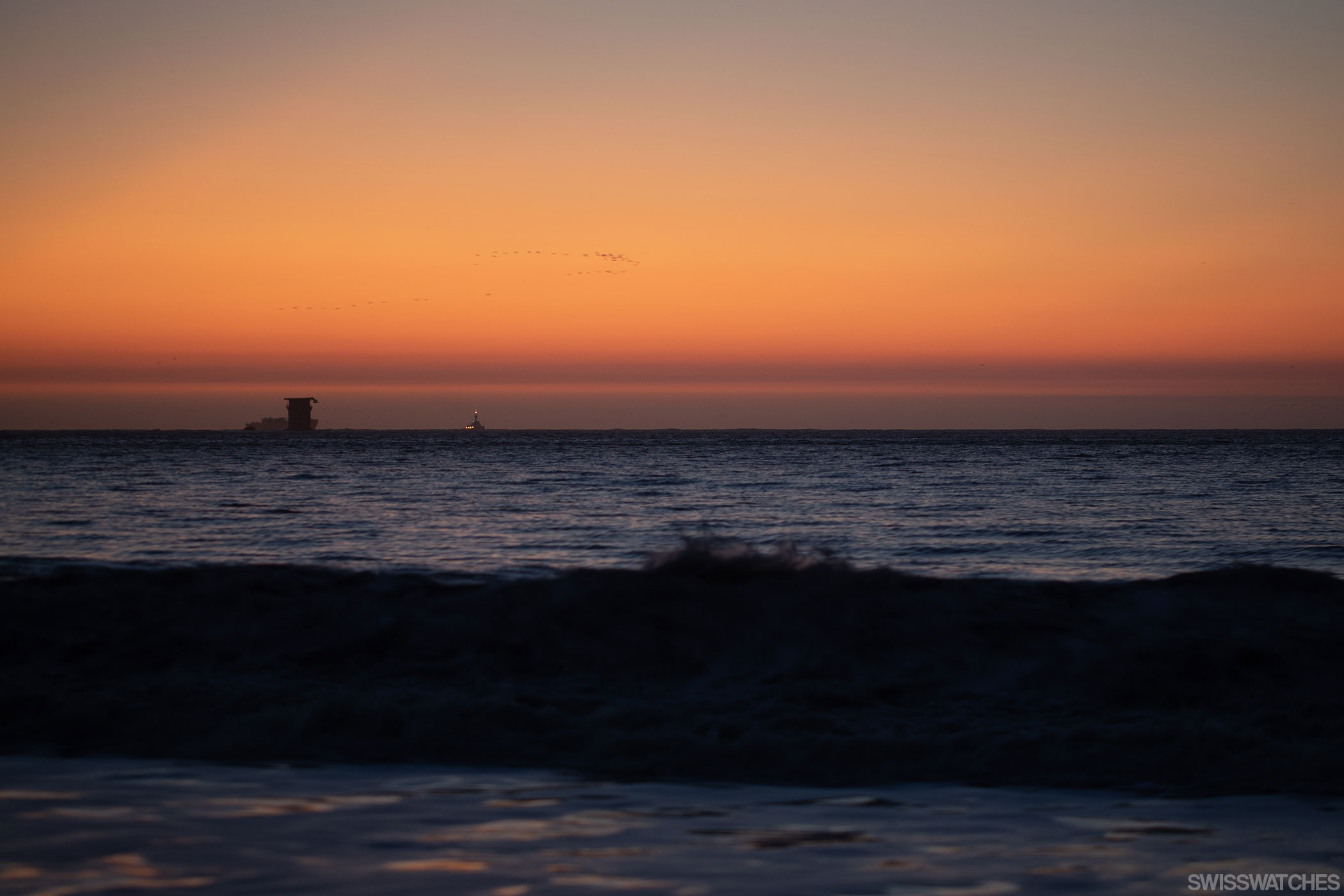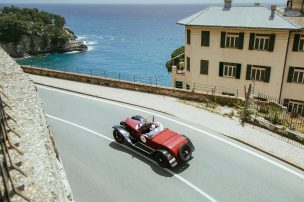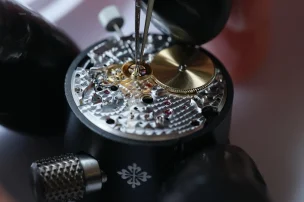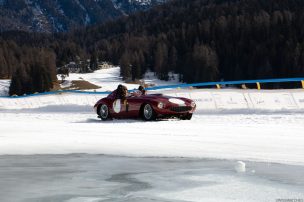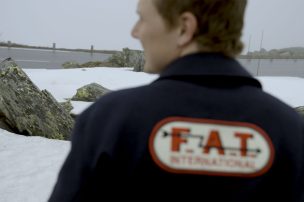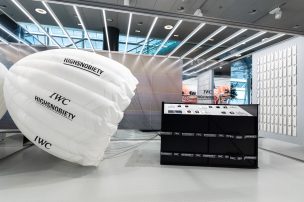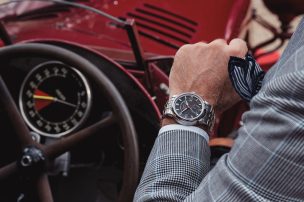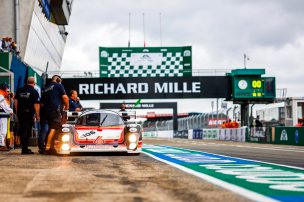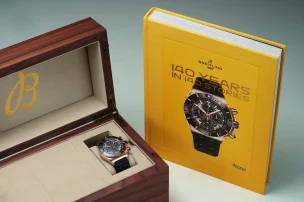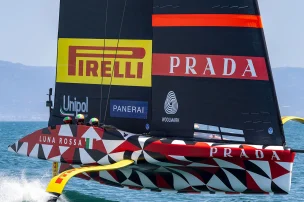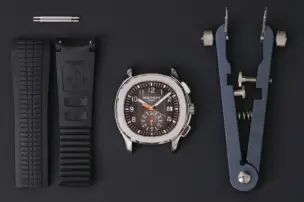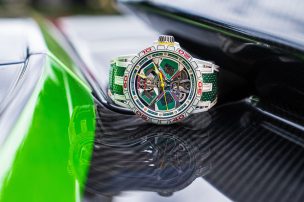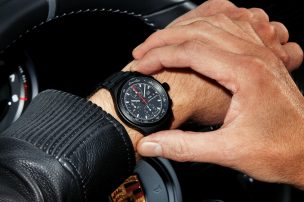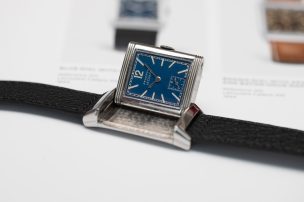
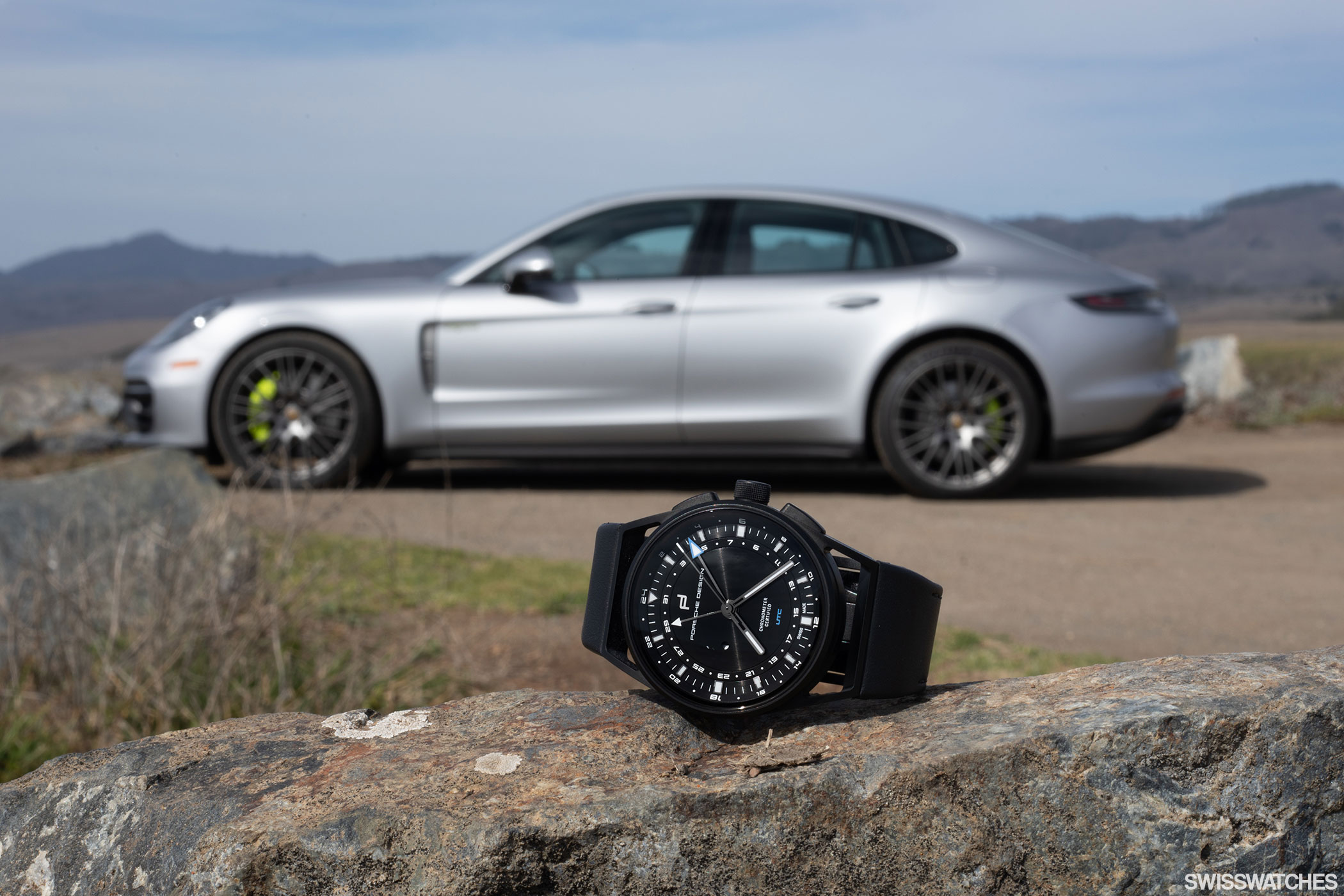
From Los Angeles to San Francisco with the Porsche Design 1919 Globetimer UTC and the Porsche Panamera 4 E-Hybrid
A travel diary in a watch magazine? I admit, this article deviates somewhat from our norm – but with good reason. In October 2022, Porsche and Porsche Design provided me with two products of their best luxury technology, the Porsche Panamera 4 E-Hybrid (launched in 2022) and the Porsche Design 1919 Globetimer UTC, both of which I tested to the max. I also took the opportunity to set off on a journey I had dreamed of ever since childhood.
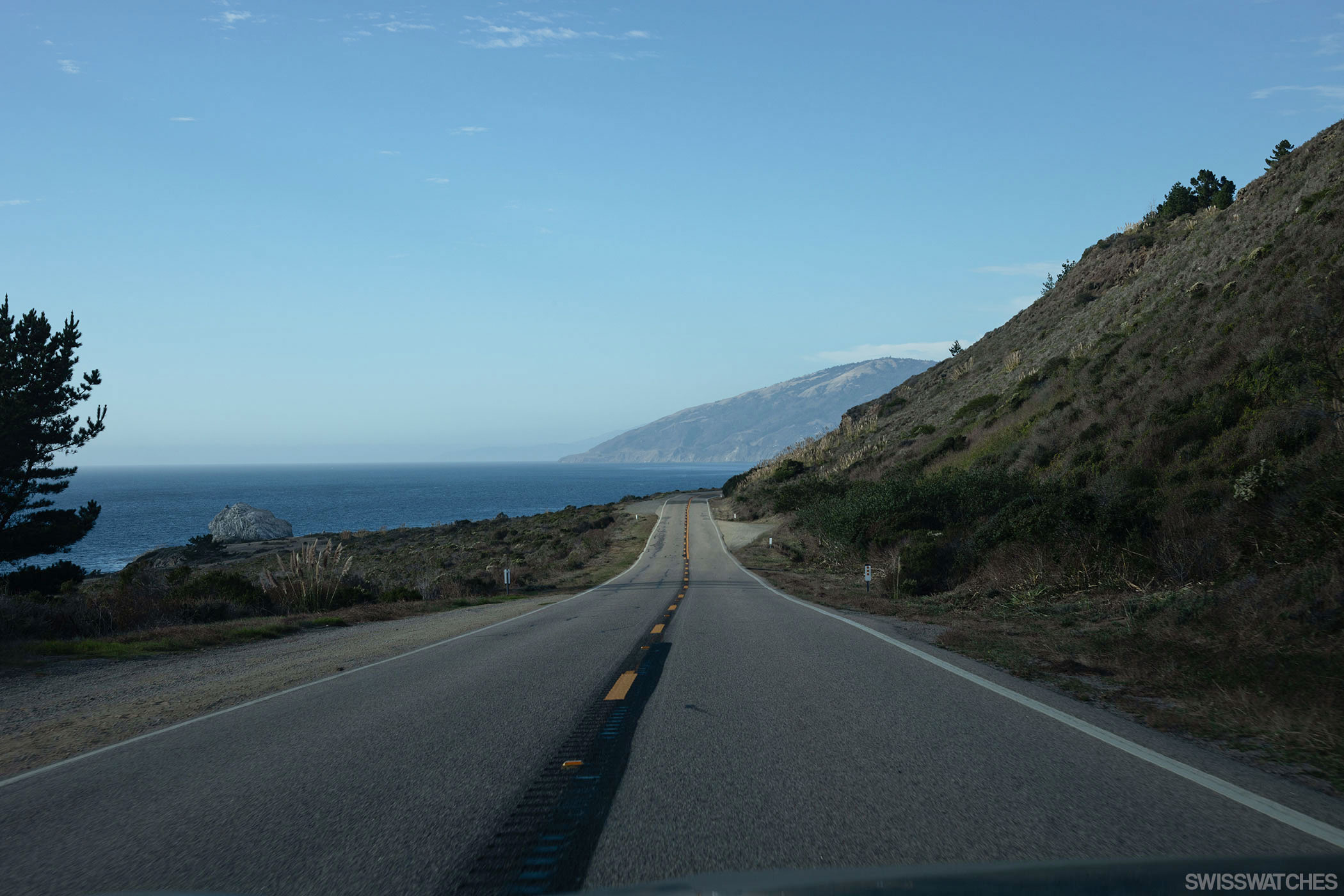
On Highway 1 from L.A. to San Francisco
Driving from Los Angeles to San Francisco and back, I was to cover a total of 1,770.45 km, conquering winding coastal roads, passing through some 40 towns, all while observing the interplay between the motorised elegance and functionality of Porsche’s horological likeness firsthand. It makes for a somewhat different travel diary along the Pacific coast, with two ever-reliable companions by my side.
Panamera 4 E-Hybrid & 1919 Globetimer UTC
Day 1: First stop Hollywood: Arrival in Los Angeles
26.10.2022
PST – 13:05 | UTC – 21:05 | CEST – 22:05
My journey starts in LA on 10/26, where it’s not a break-out career as a movie star that awaits me, but the Porsche Panamera 4 E-Hybrid.It’s a sports car with such an enormous presence that, with a width of 1.937 meters and a length of 5.049 meters, it left me momentarily speechless. I get the Panamera in the optional Platinum Edition, which gives the Porsche some exclusive design highlights such as design taillights and black sport tailpipes, while the overall look is rounded off by a classy metallic paint finish. A Panamera never looked so good. As I get behind the wheel, I quickly realise that the interior of my Panamera is just as attractive as its exterior design. The dark Bordeaux red of the leather harmonises beautifully with the deep black wood elements of the trim.
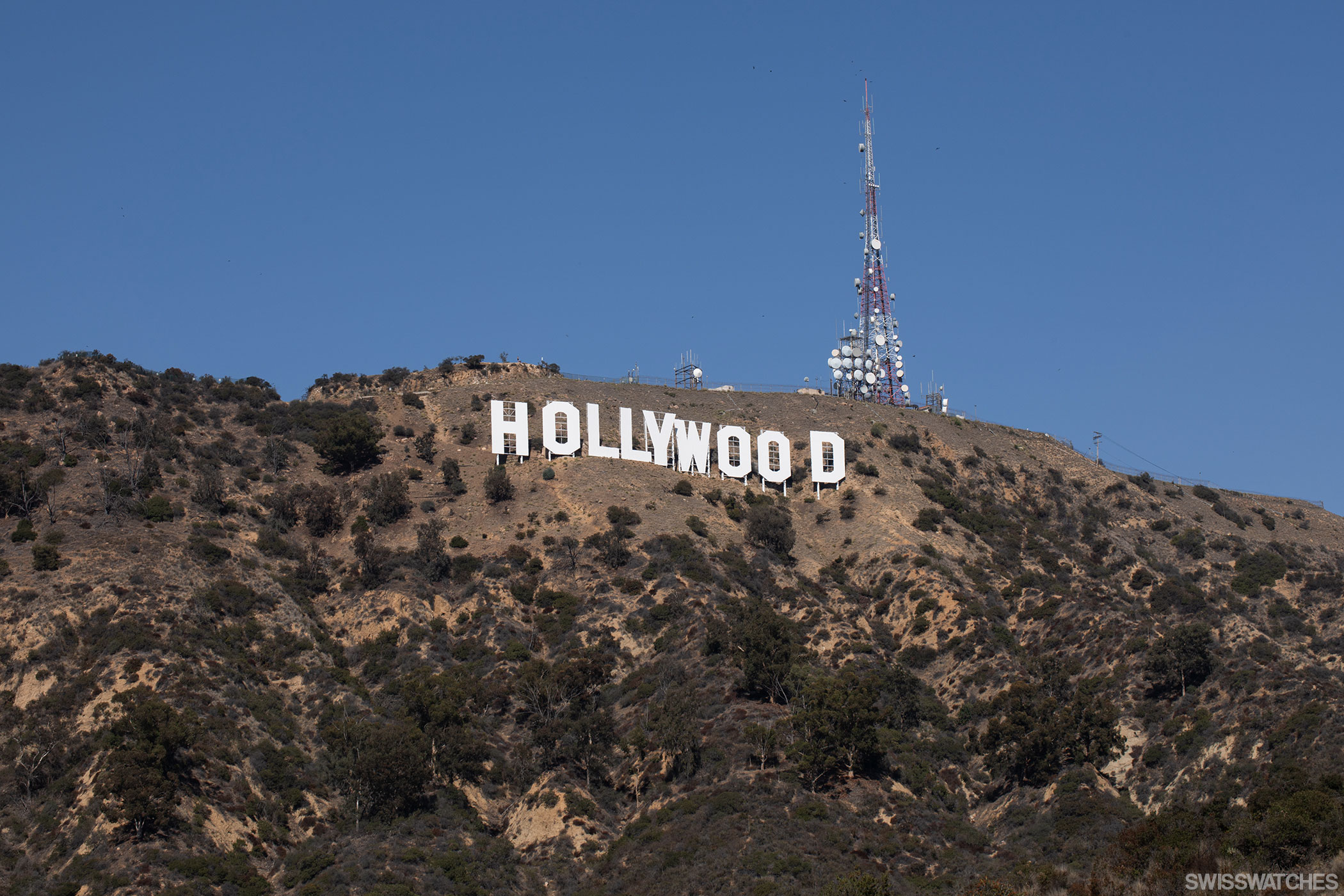
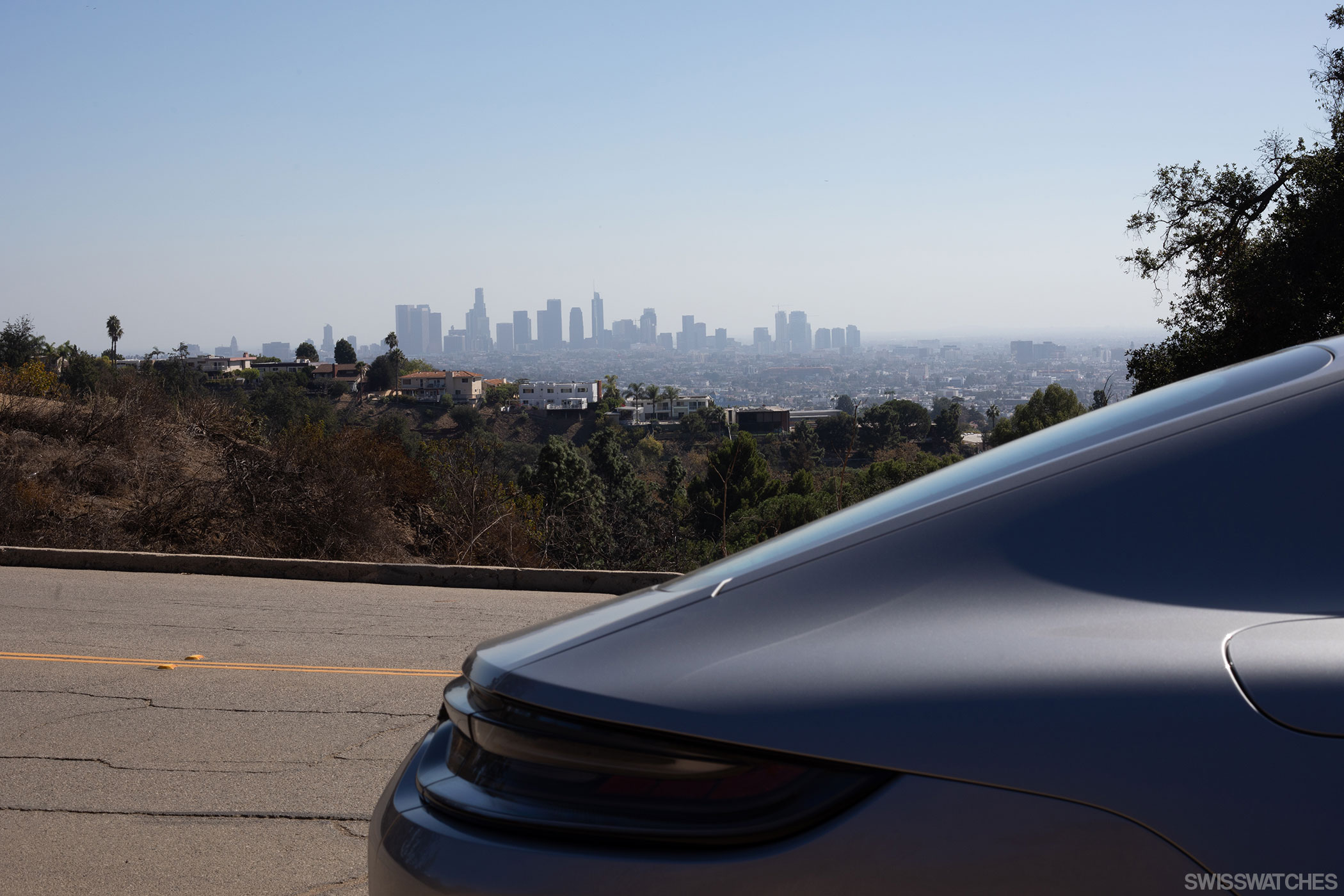
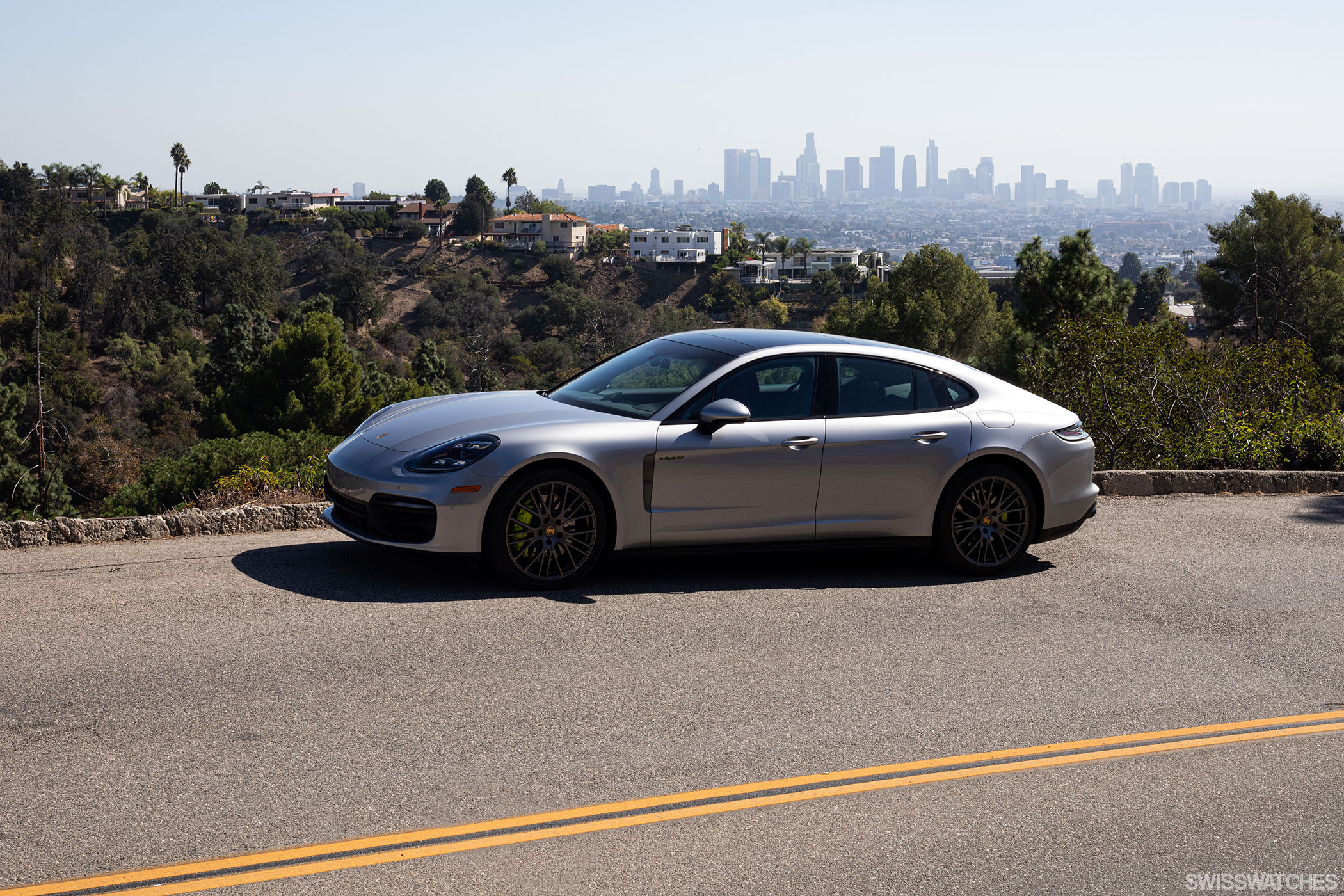
Recovering from my initial stupor, I get the sports car out on the road. Before I know it, I’m part of the gridlocked L.A. traffic that seems to take an eternity. But the first destination of my trip is clear: the Walk of Fame on Hollywood Boulevard. I don’t miss the opportunity to immortalise Swisswatches – at least for a few minutes.
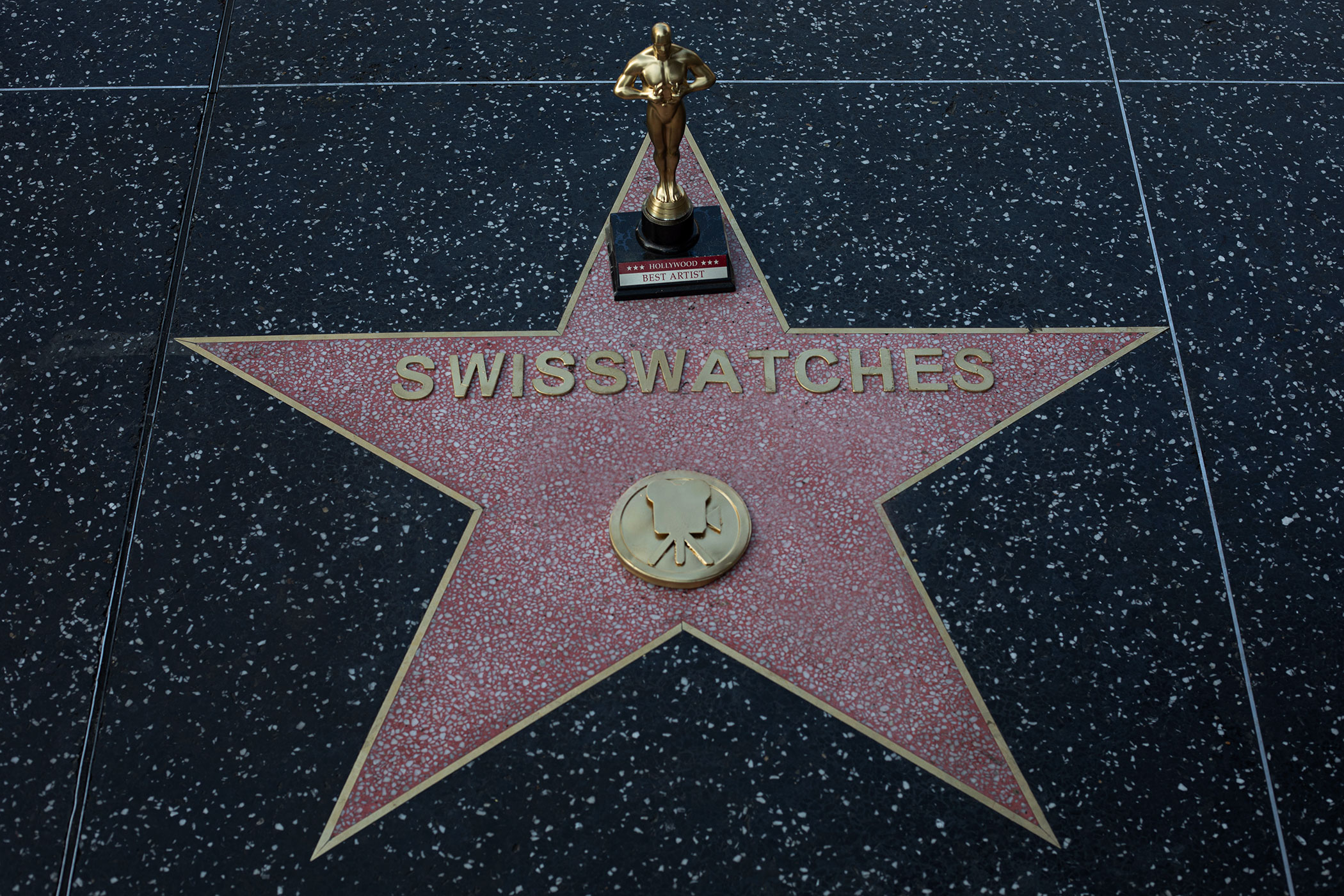
The best of both worlds – the Porsche Panamera 4 E-Hybrid
The Porsche Panamera 4 E-Hybrid, named after the Mexican endurance race Carrera Panamericana, brings out the best of both worlds of mobility. Refined steering response, driving pleasure beyond the straights, German high quality, powerful acceleration of 4.4 seconds – but a quiet sound when needed. All rounded off with impressive efficiency of 2.5 – 2.1 litres per 100 kilometres, provided the battery is fully charged.
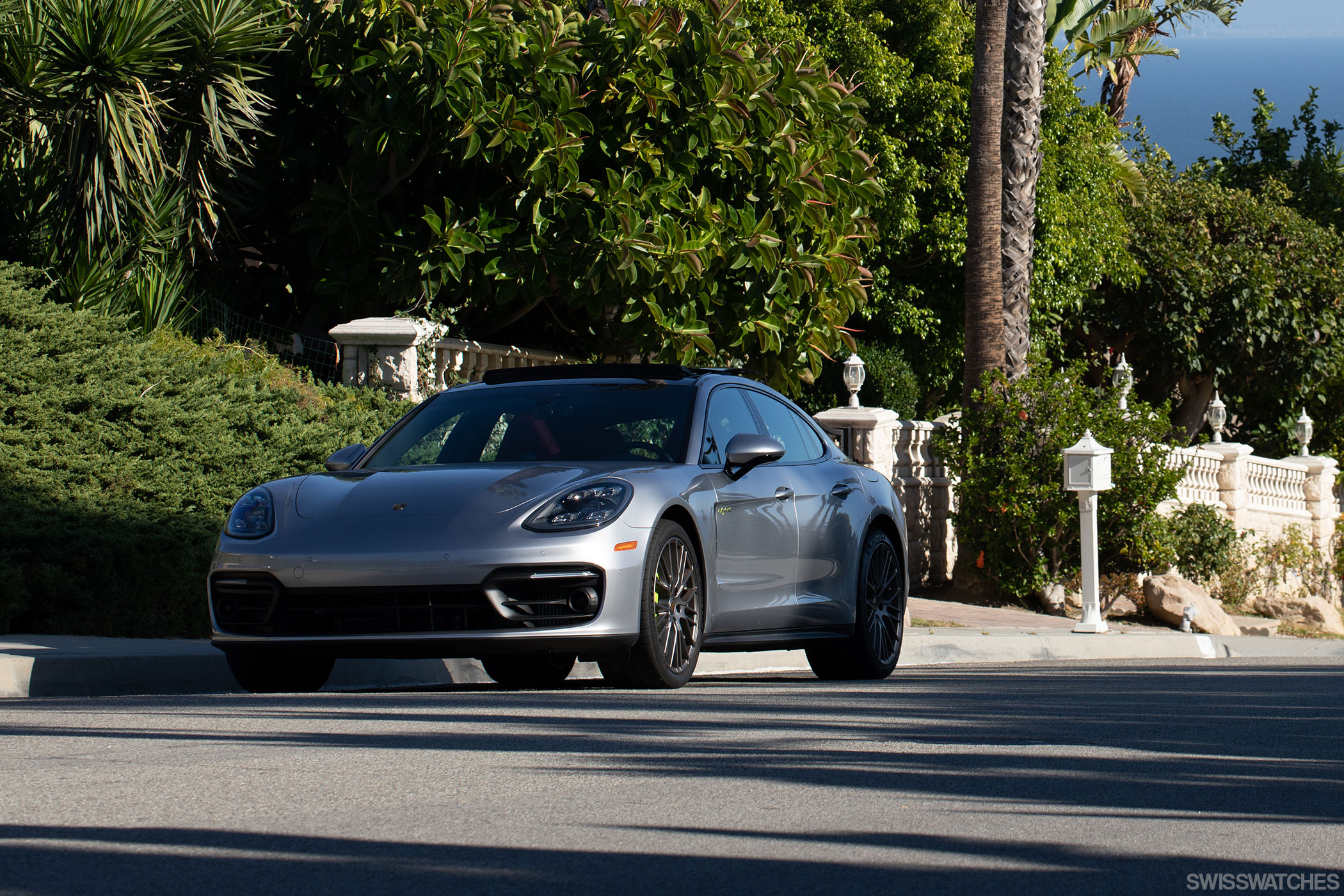
This is thanks to the interaction between the electric motor and the combustion engine. As soon as the 2.9-litre V6 bi-turbo engine with 330 horsepower cools down, the whirring electric motor with its 100 kW (136 horsepower) takes over and ensures a relatively long electric range of 49 to 54 kilometres. The energy for this comes from the 17.9 kWh lithium-ion battery. This sits behind the rear axle and charges in six hours (two and a half hours for 7.2 kWh) at a standard household 230-volt outlet. On my trip, I benefited a lot from the extensive network of public charging stations, of which there are 13,809 in California alone. This meant I never had to go out of my way to find a charging station or even plan my route in advance.
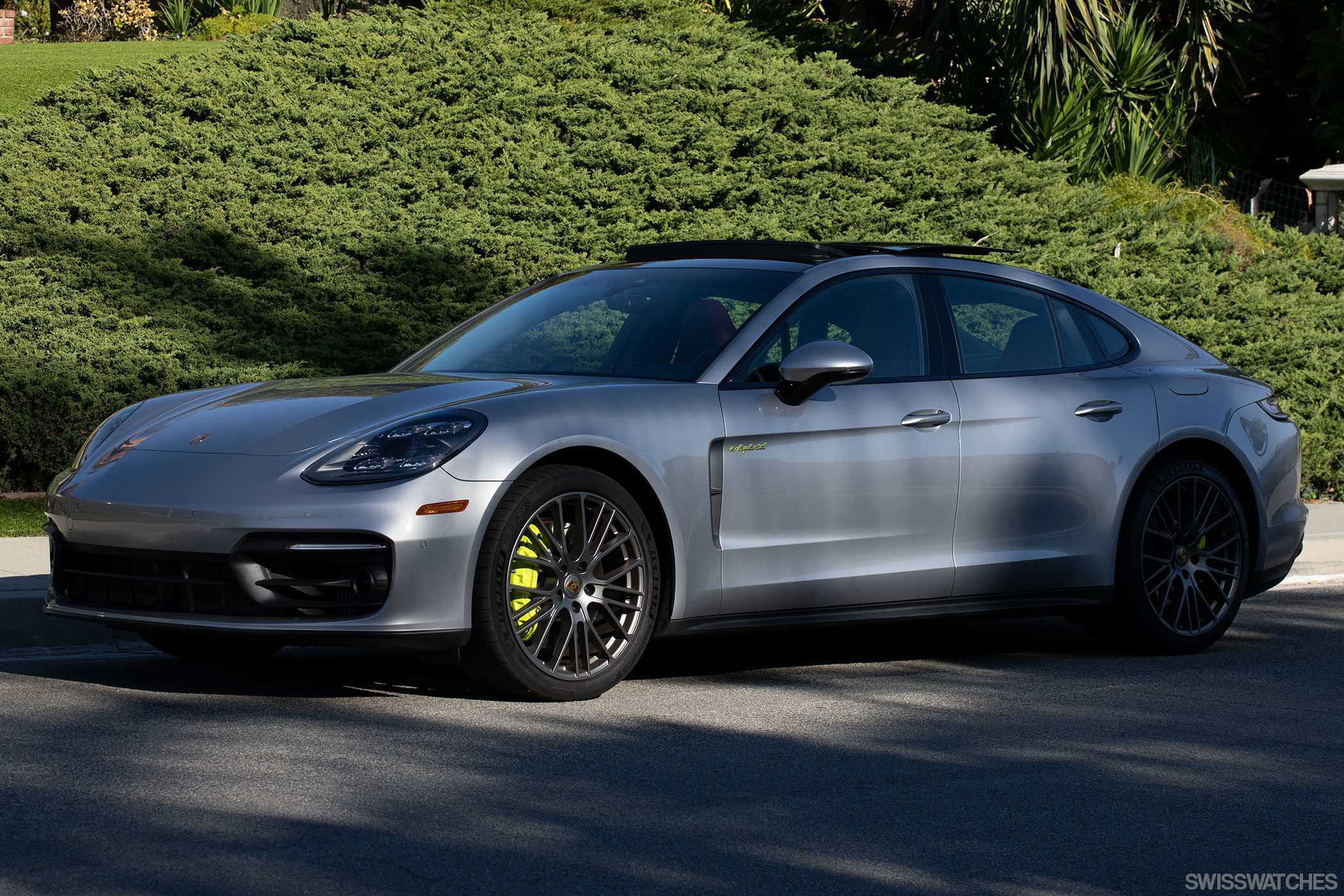
The interior of the Panamera offers some remarkable features such as full leather surfaces, four-zone automatic climate control, 14-way adjustable and air-conditioned front seats with memory function that internalise the shape of the lower back as well as the position – perfect for long drives. And behind them? A large trunk with a volume of 403 litre plus a wide-opening tailgate.
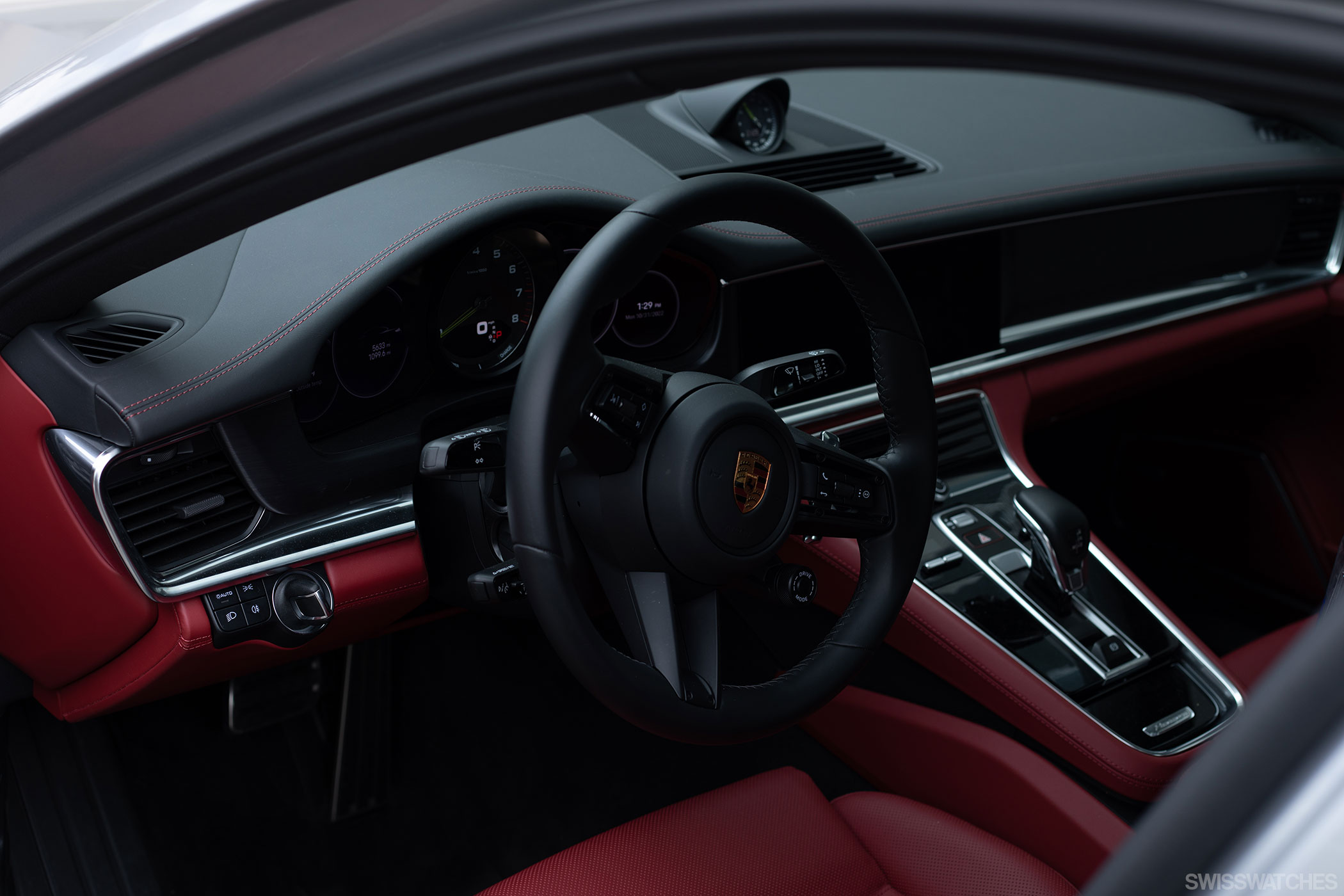
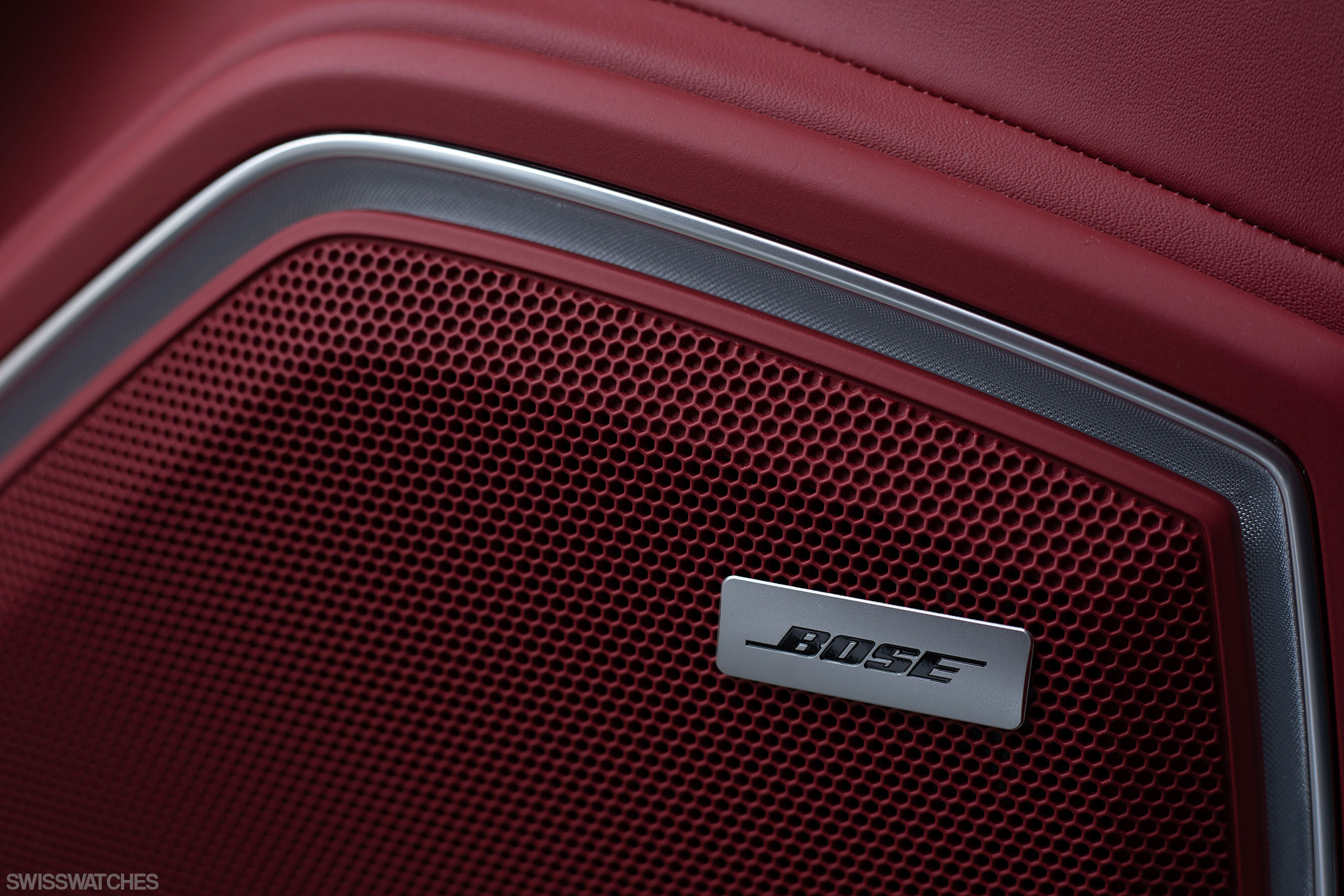
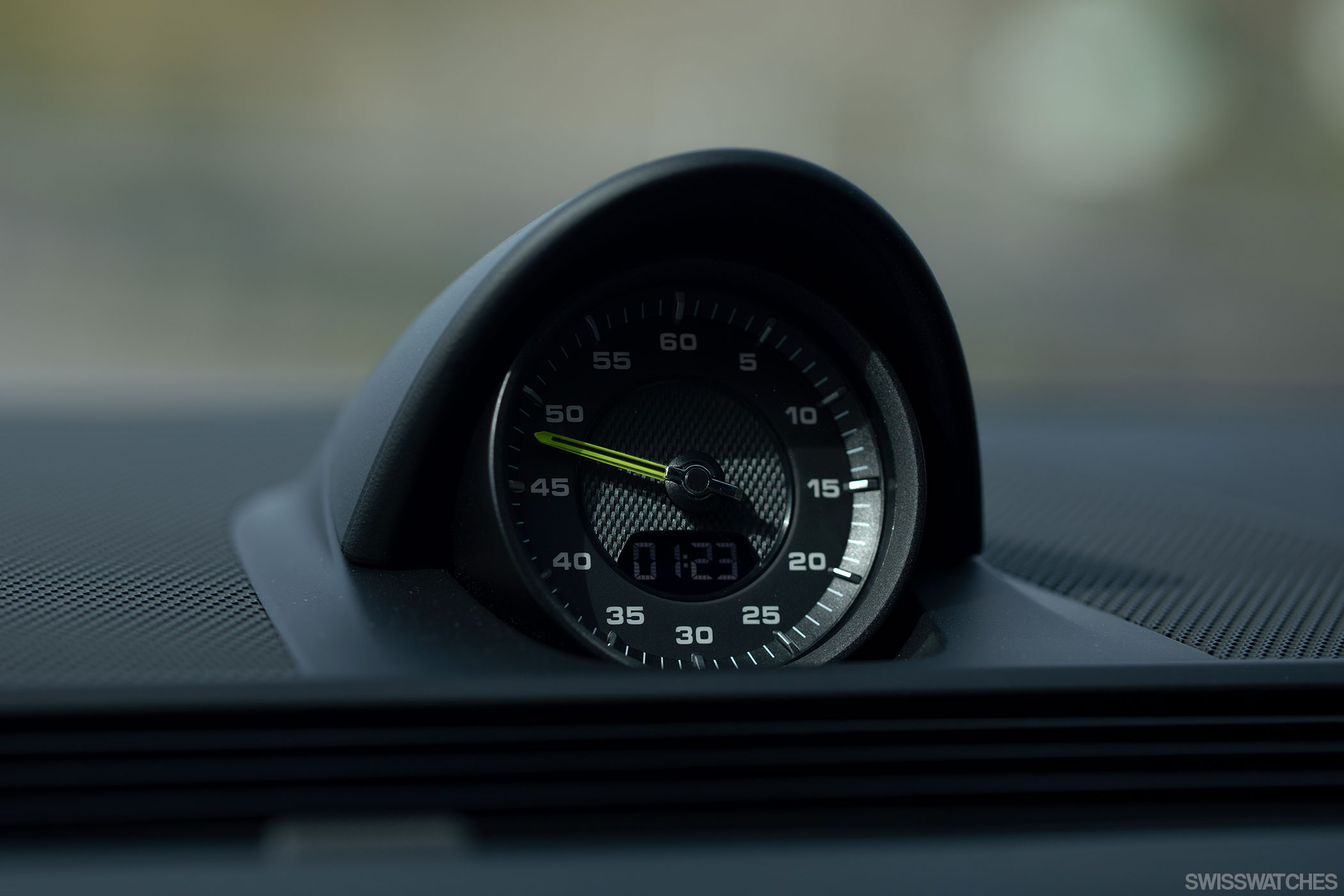
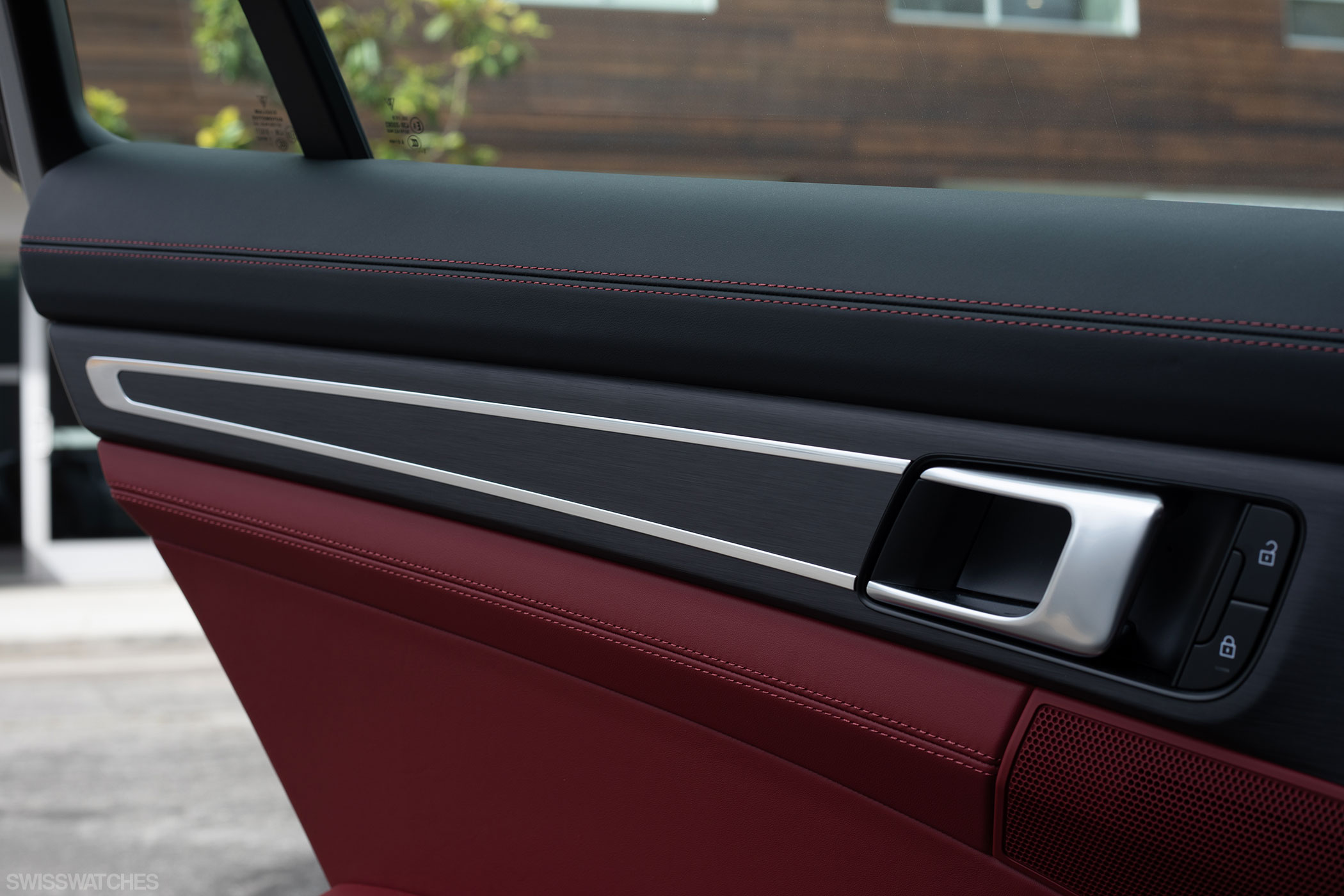
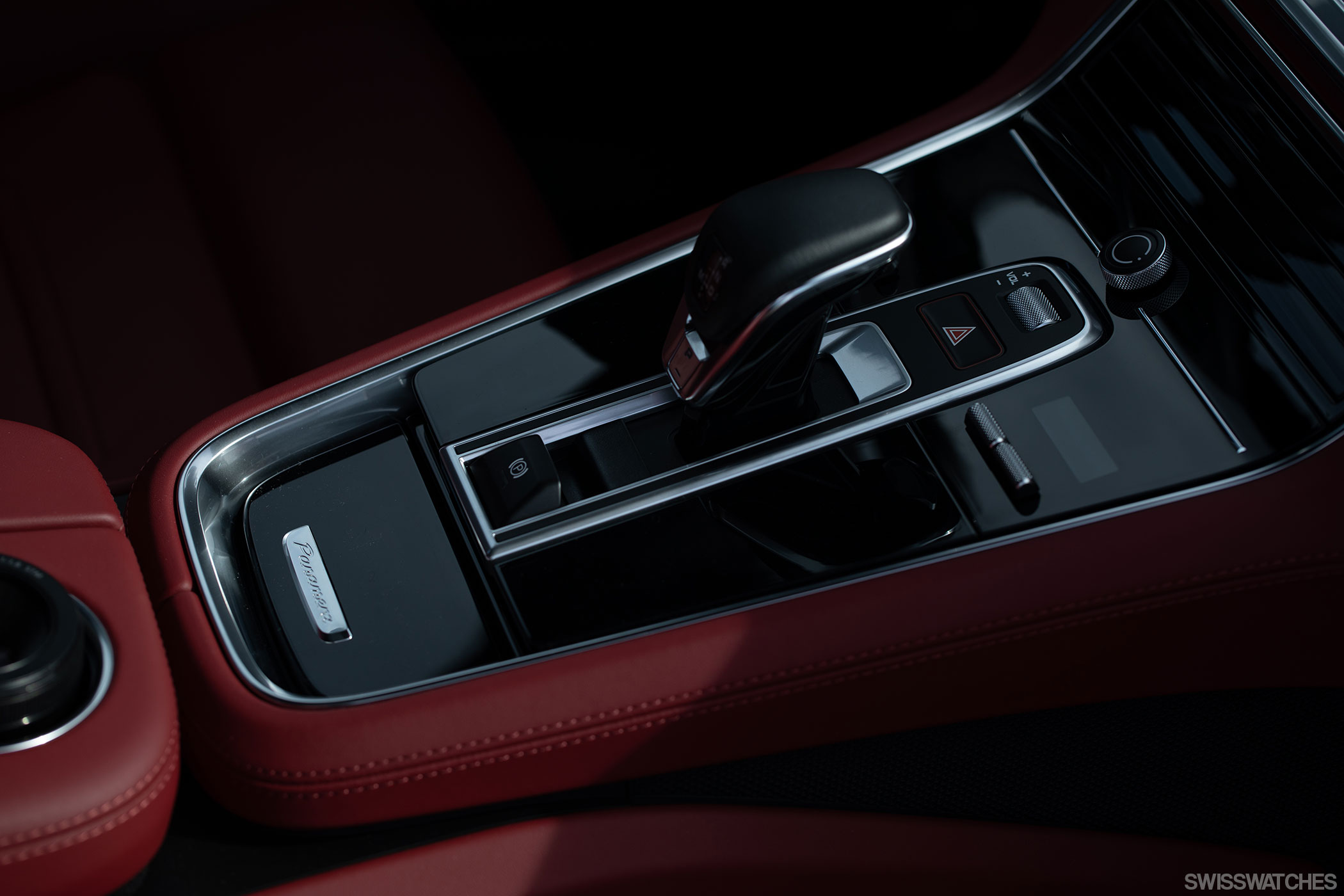
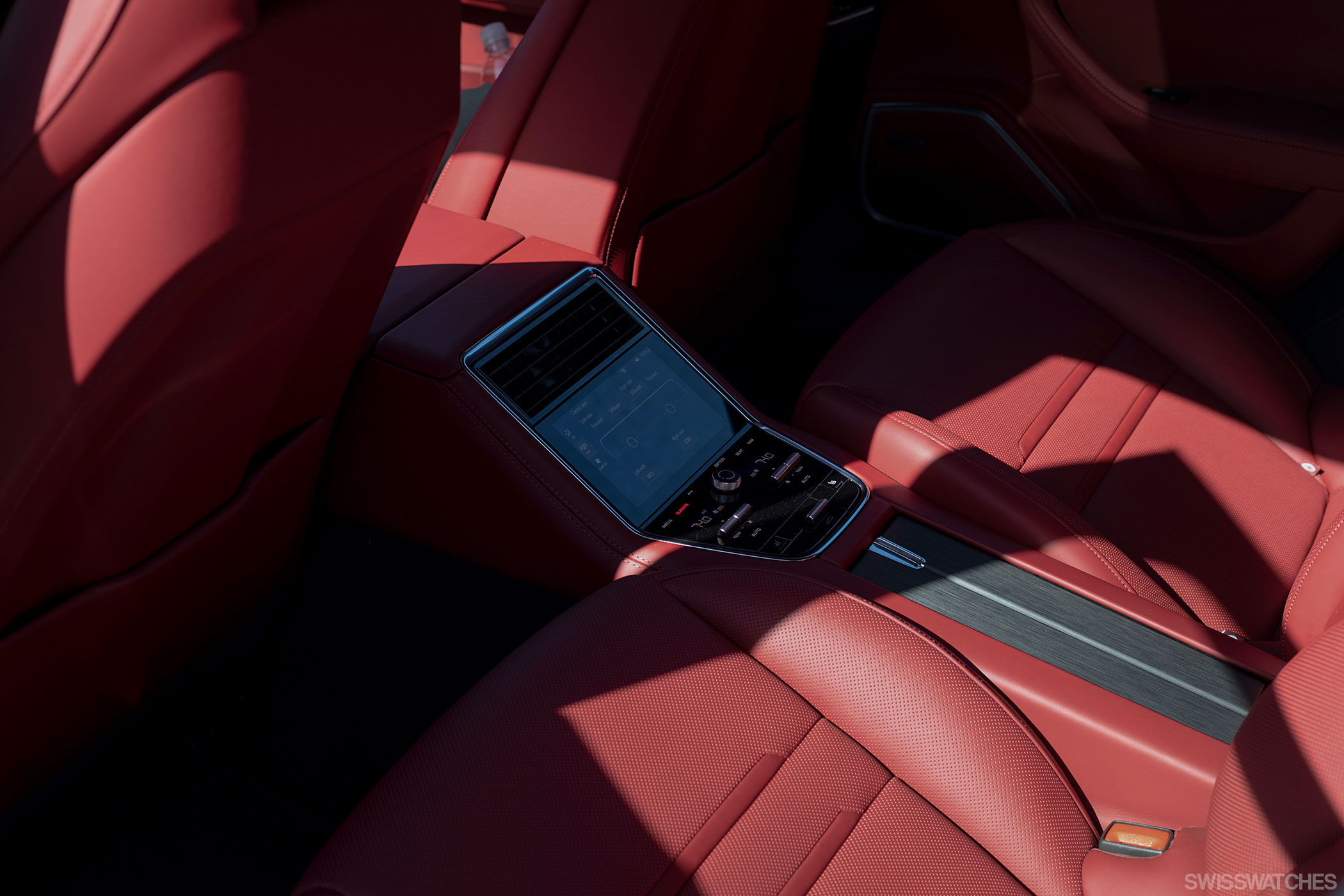
The Panamera was Porsche’s first step into the world of plug-in hybrids and has come a remarkable way since its introduction. Because let’s call it how it is; the design of the first Panamera did take some getting used to. One fear Porsche fans had when the manufacturer ventured into the world of hybrids and electric mobility was that Porsche would lose its soul. But as I found out on my trip, that’s certainly not the case. Porsche stands for luxury, performance, and style – and the Porsche Panamera 4 E-Hybrid loses none of that.

PST – 14:20 | UTC – 22:05 | CEST – 23:05
A little further on, I am drawn to the town of the rich and beautiful, Beverly Hills. Quietly, unobtrusively, using the electric motor, I slink through the streets of the city that we already know so well from our television screens. I roll through Rodeo Drive, the strolling mile of Los Angeles so to speak, where every brand of rank and name proudly resides. To get a better overview of the city and its spectacle, I drive up to the high Griffith Observatory. With that, the first day is already slowly drawing to a close.
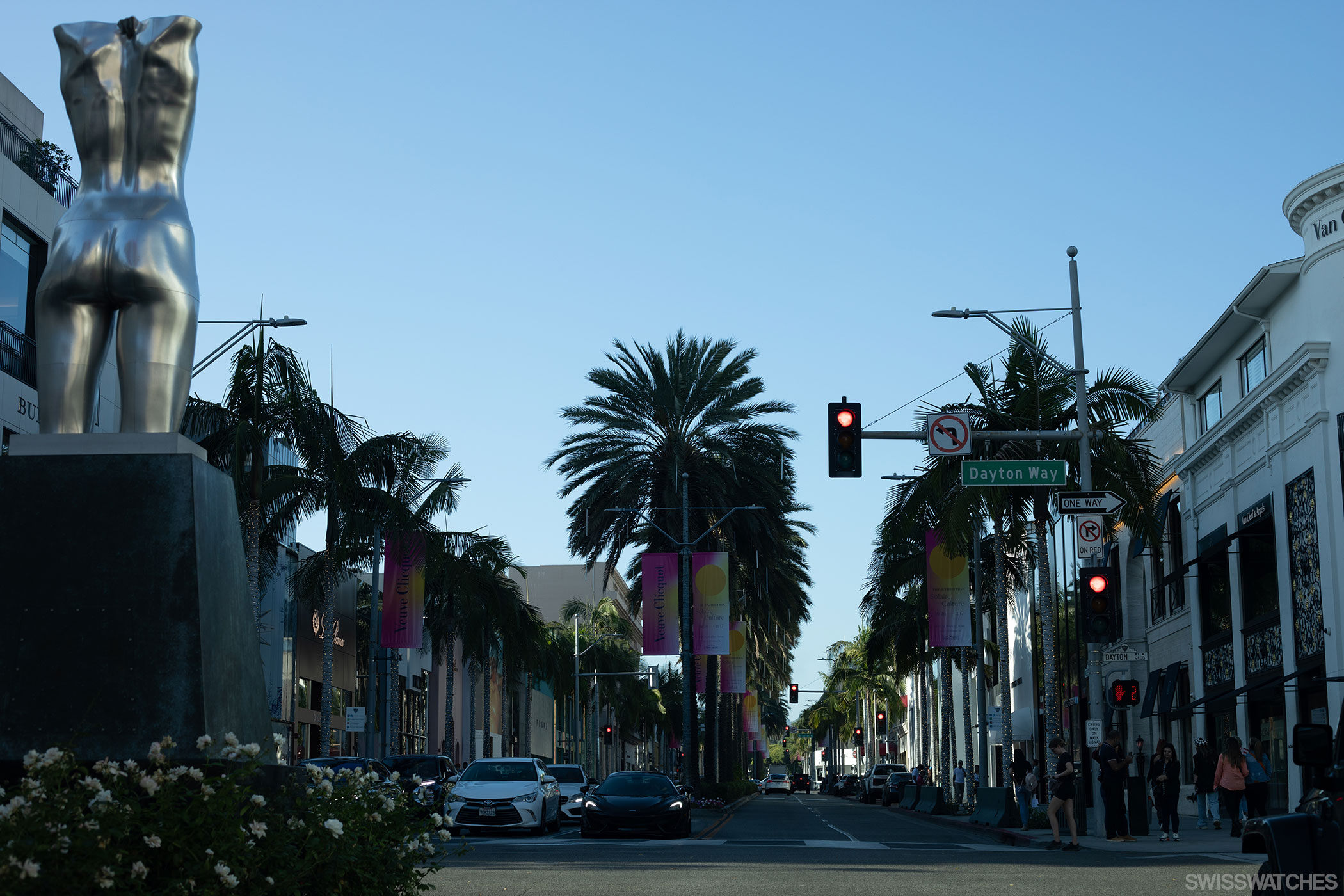
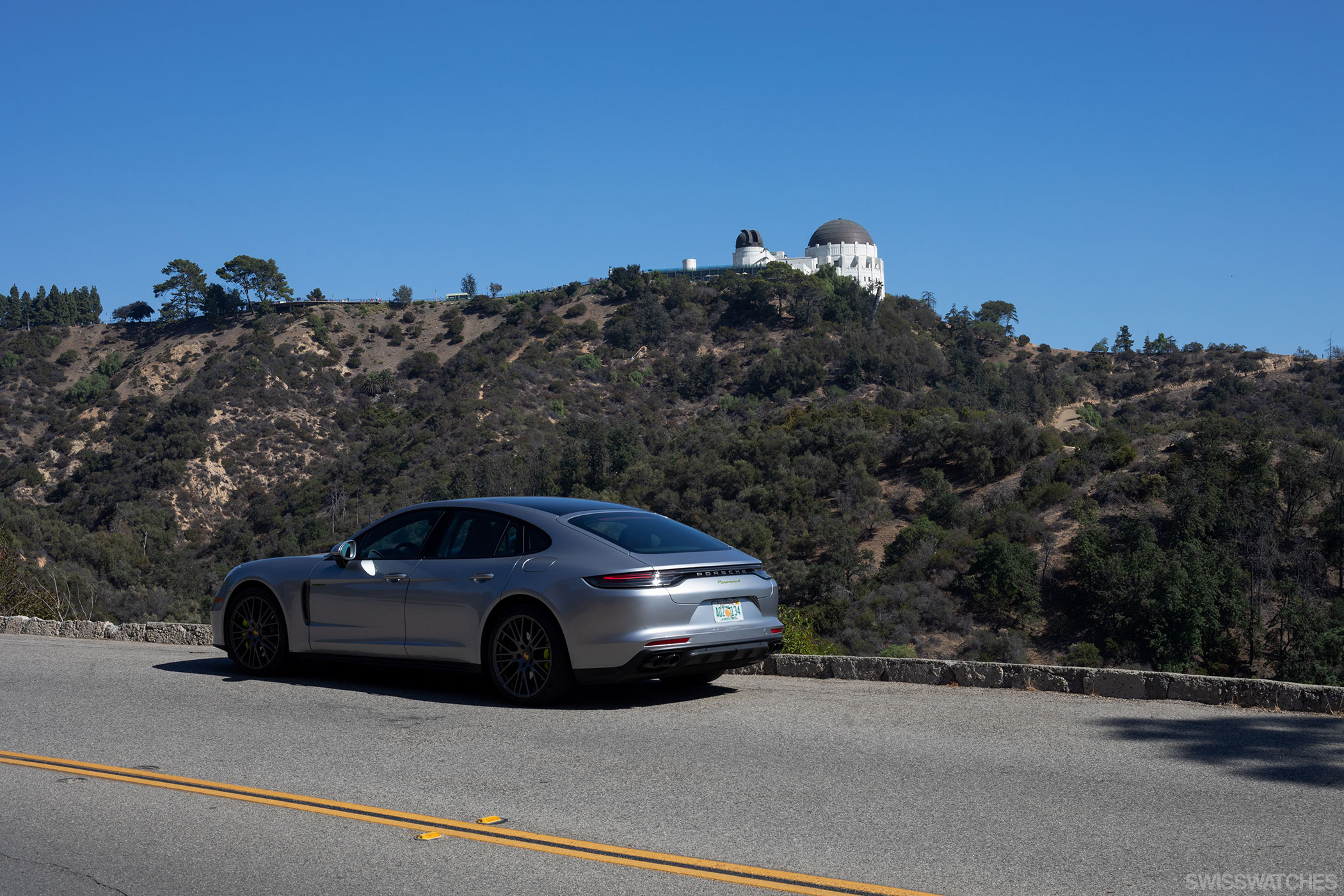
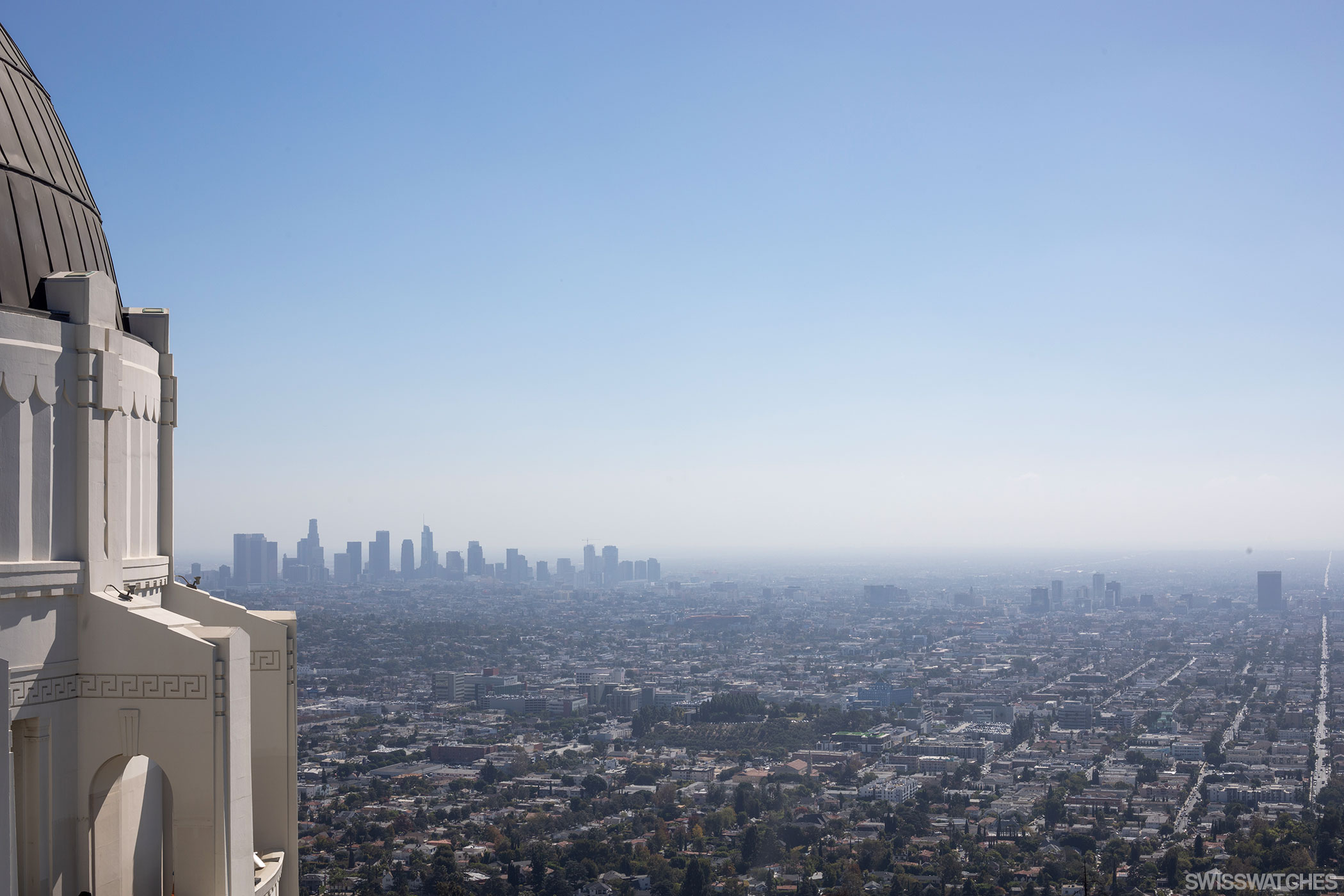
Day 2: The American Riviera
27.10.2022
PST – 07:08 | UTC – 15:08 | CEST – 16:08
On the second day, I leave early to reach my next destination; Santa Barbara. I’m impressed by the coastal town that looms against the dramatic backdrop of the Santa Ynez Mountains. Exploring my way down State Street, I pass numerous local businesses run by members of the Chumash tribe, who have lived in the area for centuries. White stucco and red tile roofs increasingly adorn the city’s houses, which date back to the area’s Spanish colonial era. The picturesque beaches and luxurious hotels lend Santa Barbara the nickname ‘American Riviera’, and are generally considered a haven for people who want to escape the hustle and bustle of L.A. for a short while.
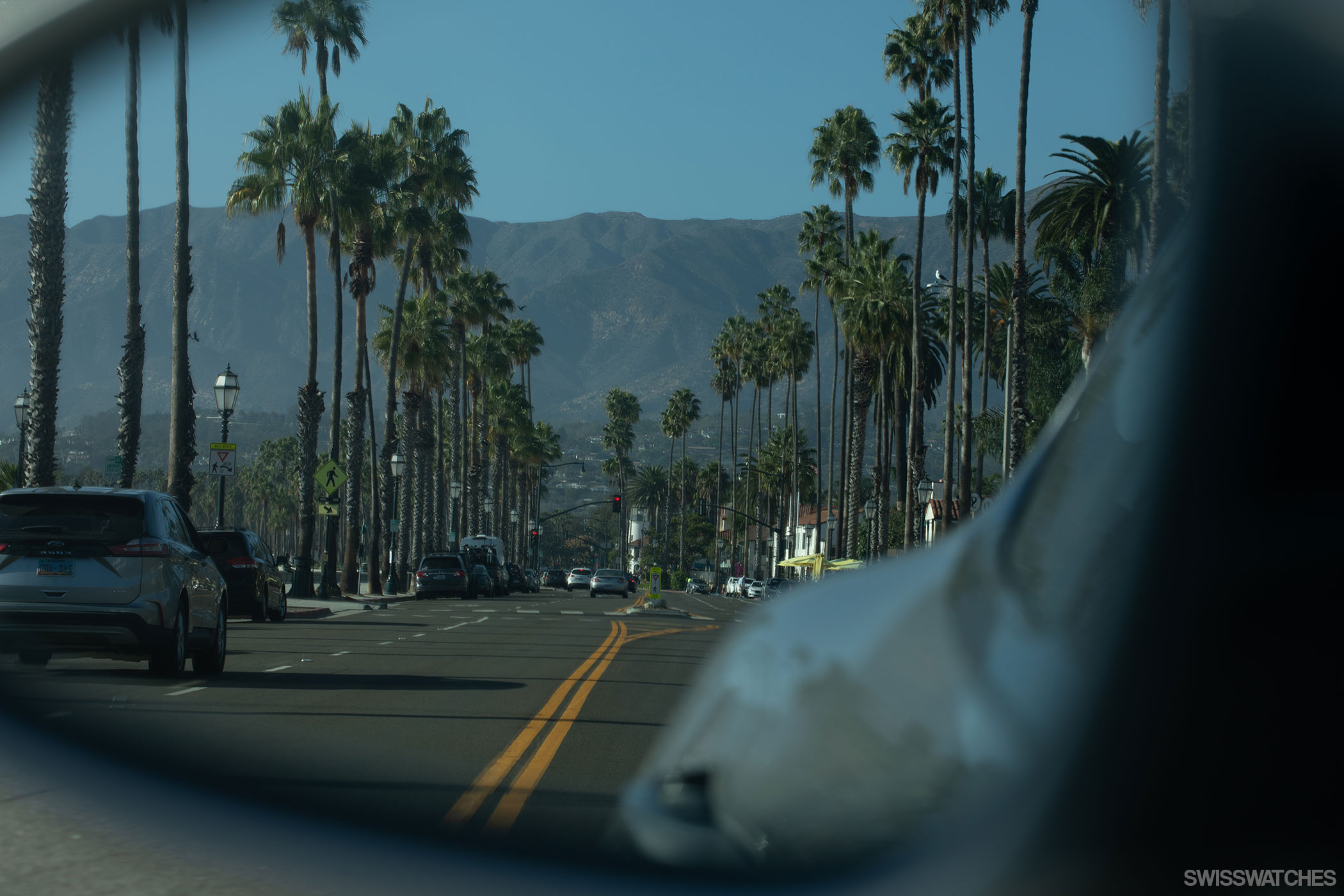
My faithful companion: Porsche Design 1919 Globetimer UTC
Ferdinand Alexander Porsche believed early on that form should not follow function, but that the two should meet at eye level. Just as Porsche does with its cars, Porsche Design also follows this guiding principle, which the watchmakers ensure in the company’s own manufacture in Solothurn, Switzerland. Here, each piece is handcrafted with great precision. At Porsche Design, this specifically means the manual assembly of the entire watch, including setting by hand. Porsche Design develops all the necessary watch parts in its in-house design department in Solothurn, in close cooperation with external Swiss component manufacturers.
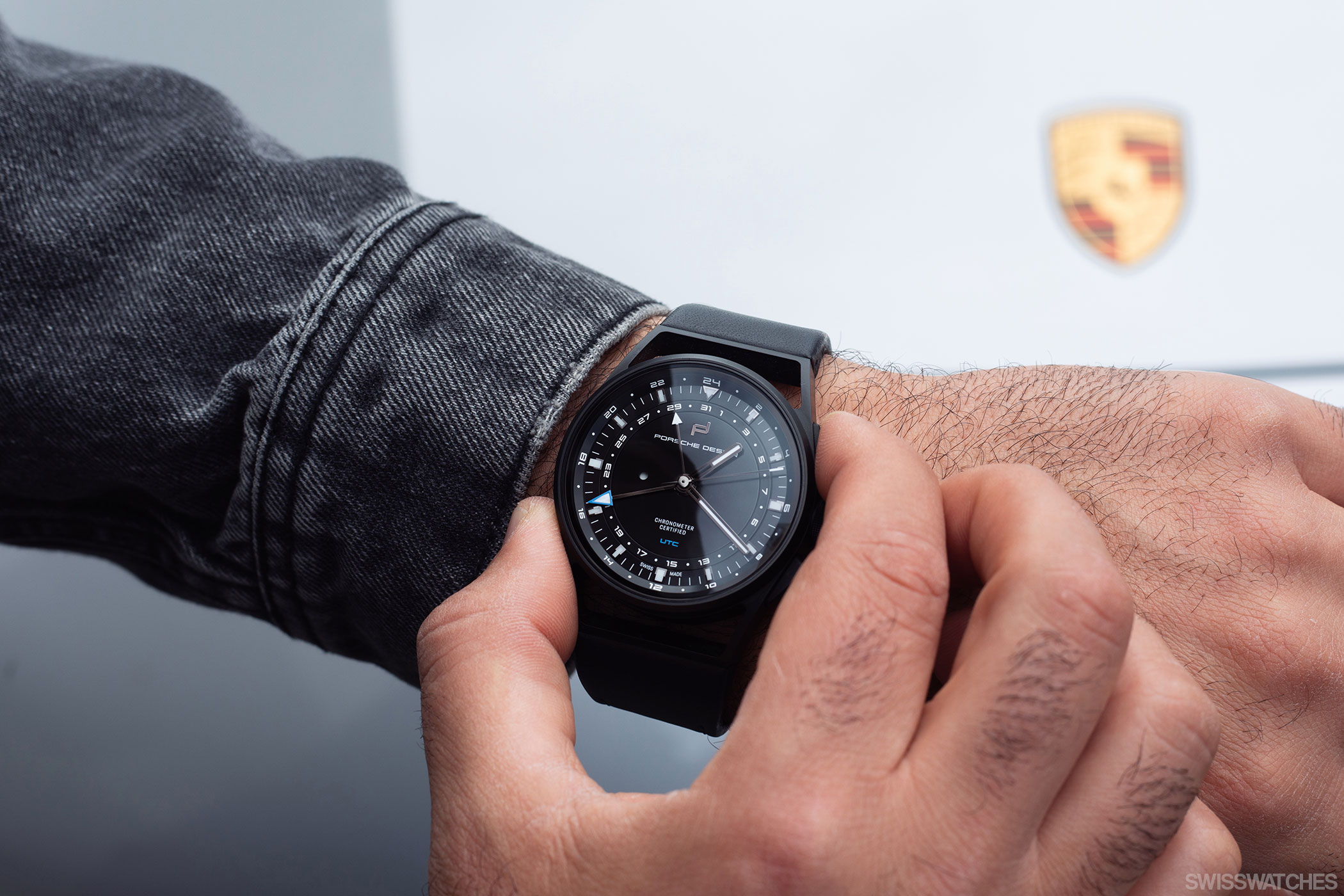
When it comes to materials, Porsche Design takes inspiration from its motorised relation, Porsche. The use of titanium for its watches is meant to transfer the lightweight construction of cars to the wrist. So how exactly did the Porsche Design 1919 Globetimer UTC perform as a faithful companion on my journey, and could it live up to the quality I was aiming for?

The UTC display
First of all, you have to understand how a UTC display differs from a watch with GMT function in the first place. While GMT is based on the mean solar day, UTC measures time based on the SI second and is therefore an ‘atomic time’. Thus, the main difference is due to the fact that Greenwich Mean Time (GMT) is a time zone, whereas Coordinated Universal Time (UTC) is a time standard for calculating local times in time zones worldwide. For mechanical watches, the UTC display differs from the GMT display in that the mechanism is also able to accommodate the date change when the wearer wants to switch between two times or time zones. In the case of the Porsche Design 1919 Globetimer UTC, an innovative switching mechanism allows the current time zone to be adjusted via a pusher in one hour intervals, without losing the exact time setting. This eliminates the need for adjustment via the crown, as is usual with watches with GMT function.
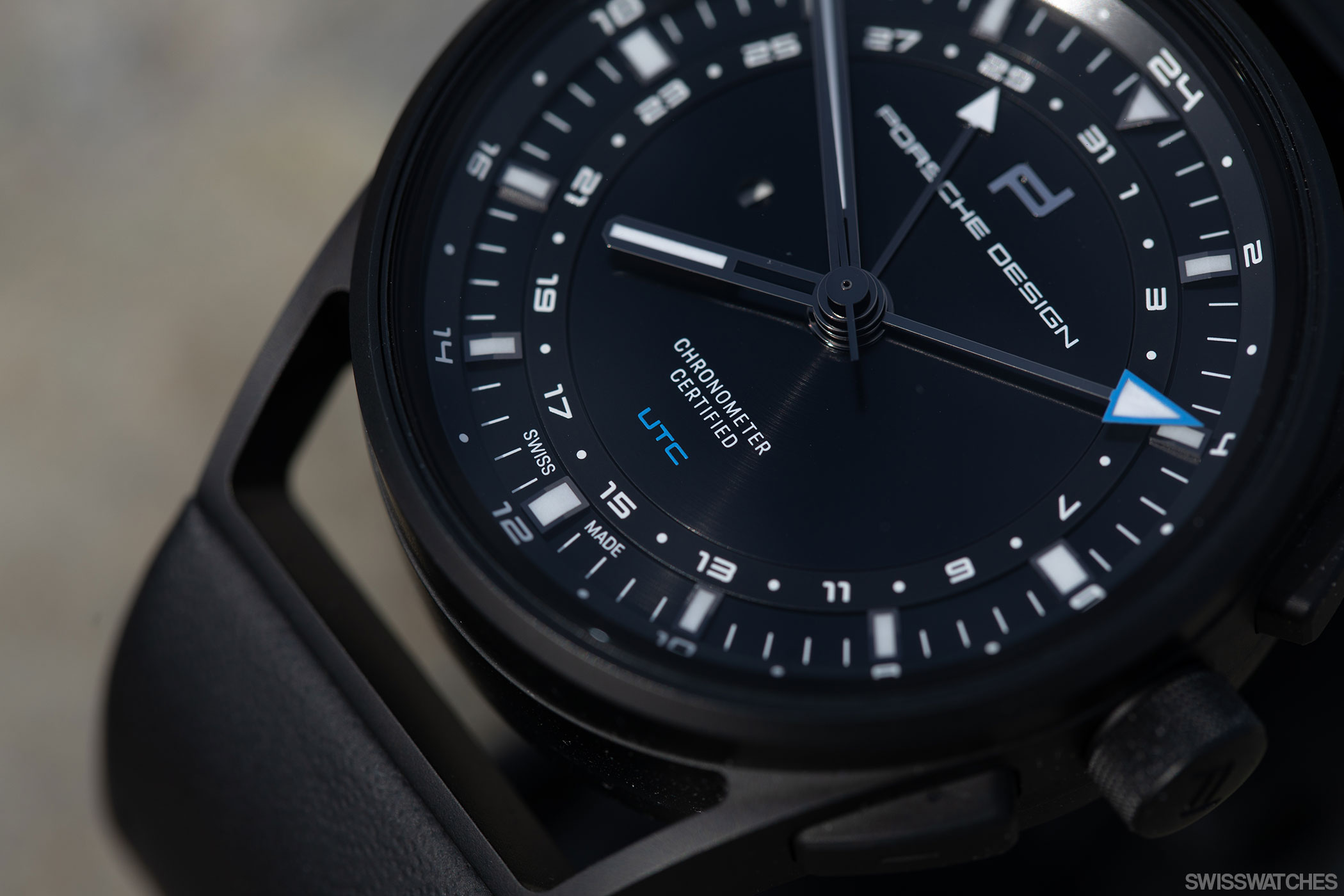
Let’s now look at what Porsche Design has done really well with the Globetimer, because the novel approach that Porsche Design has provided to the UTC function is ingenious. When I had to adjust the time of the second time zone during the time change from summer to winter time in Germany, I was able to jump the hour hand back and forth with ease, using the pushers on the edge of the case. There was no need to unscrew, turn, and screw it back in again via the crown – pressing it once is enough to set the time back one hour.
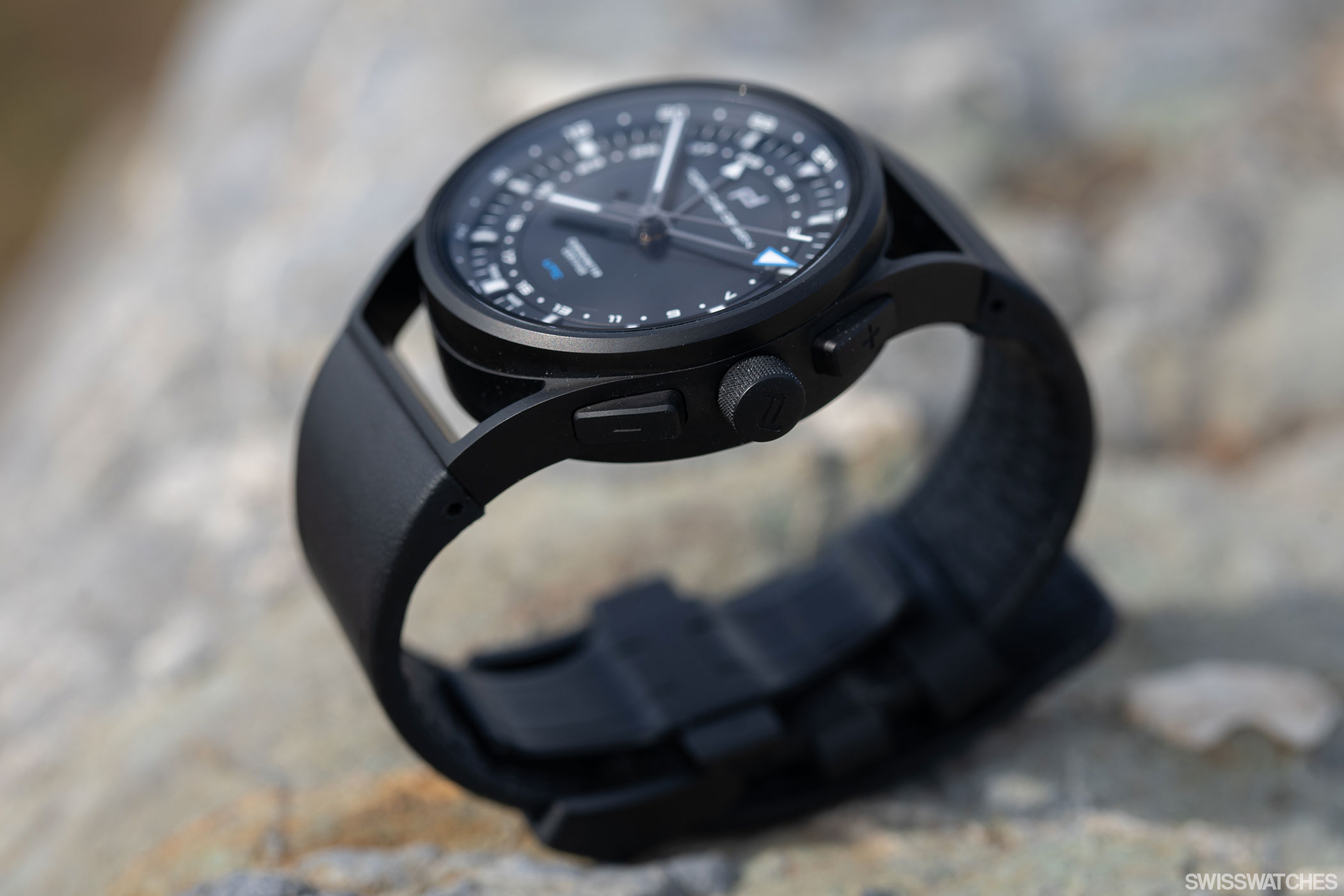
Nevertheless, the dial remains the absolute highlight of this watch for me. It masters the difficult task of presenting a lot of information easily and comprehensibly. A simple glance at the long blue hour hand pointing to the outer 24-hour scale is enough to spot the second time zone. Meanwhile, the traditional minute and hour hands are responsible for displaying the local time. The day indicator, found at 9 o’clock, is also cleverly done, presenting itself alternately in black or white to indicate day or night. Another eye-catching feature of the dial is the date ring, which also comes with its own hand.
Now let’s talk about the 42 mm case. The design of the open lugs immediately catches one’s attention – a good decision? Yes and no. Because what presents itself as a modern and aesthetic design decision that definitely appeals to me turns out to be a problem when it comes to the wearing experience. Because of this design, the watch measures a whopping 50.8mm from lug to lug. The result is a watch that does feel a bit bulky and not exactly ergonomic due to the inflexible construction, as the wrist is not completely encased. One solution to this would certainly be to reduce the case diameter from 42 mm to 40 mm so that the lugs sit over the wrist better.
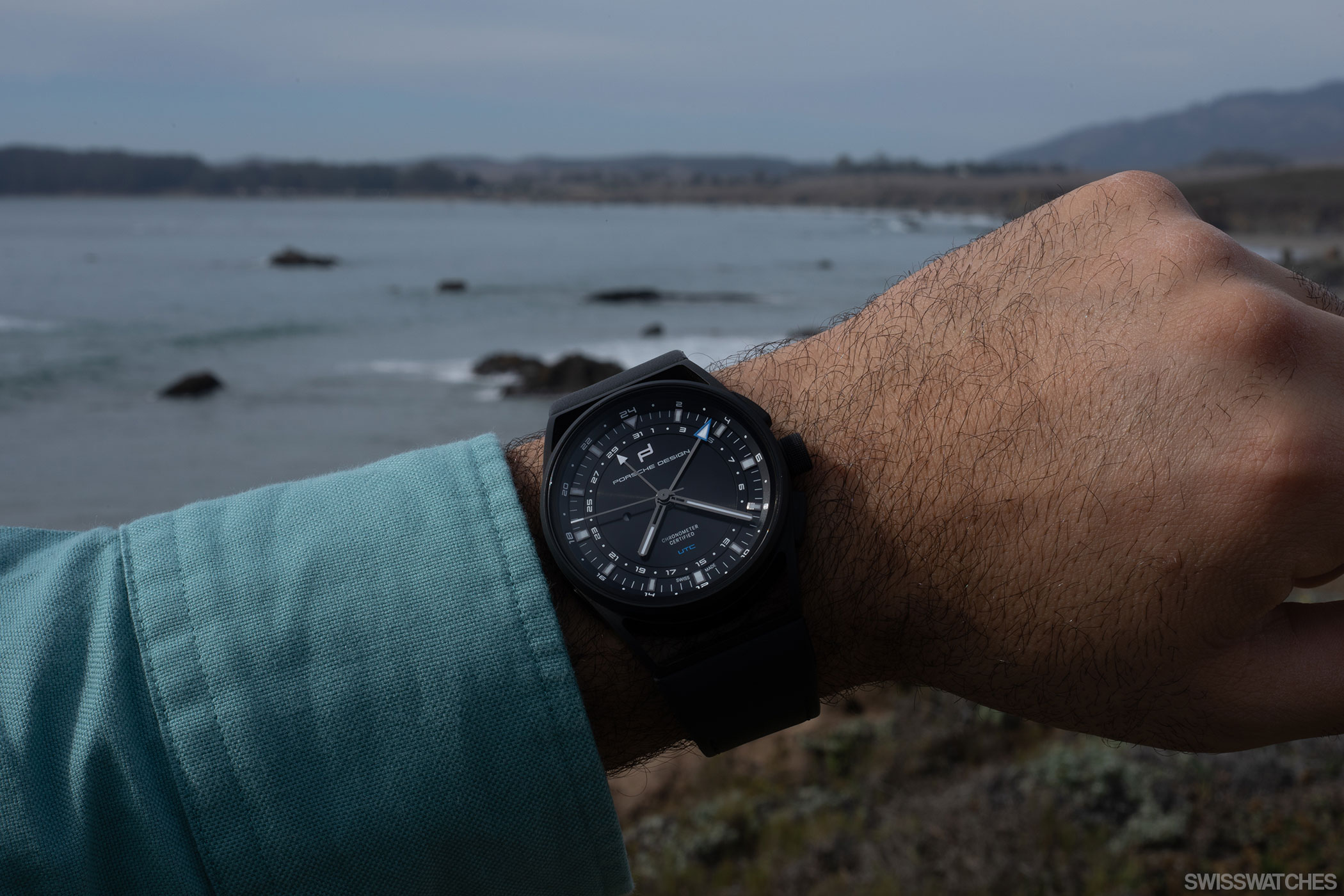
Day 3: The Big Sur roads
28.10.2022
PST – 07:23 | UTC – 15:23 | CEST – 16:23
The third day of my trip along the Pacific coast was to be the most exciting day of my trip. In the morning, I had already covered a considerable distance by car, passing through several towns and villages. Time for a break, and the rugged coastline of San Simeon seemed to be the perfect place for it. In addition to seals on the beach, the occasional zebra can be spotted in the hills here. Yes, you read that right. Zebras are actually a common sight for motorists driving past Hearst Castle between San Simeon and Ragged Point. While obviously native to Africa, the magnificently striped animals that have ended up here result from William Randolph Hearst’s private zoo.
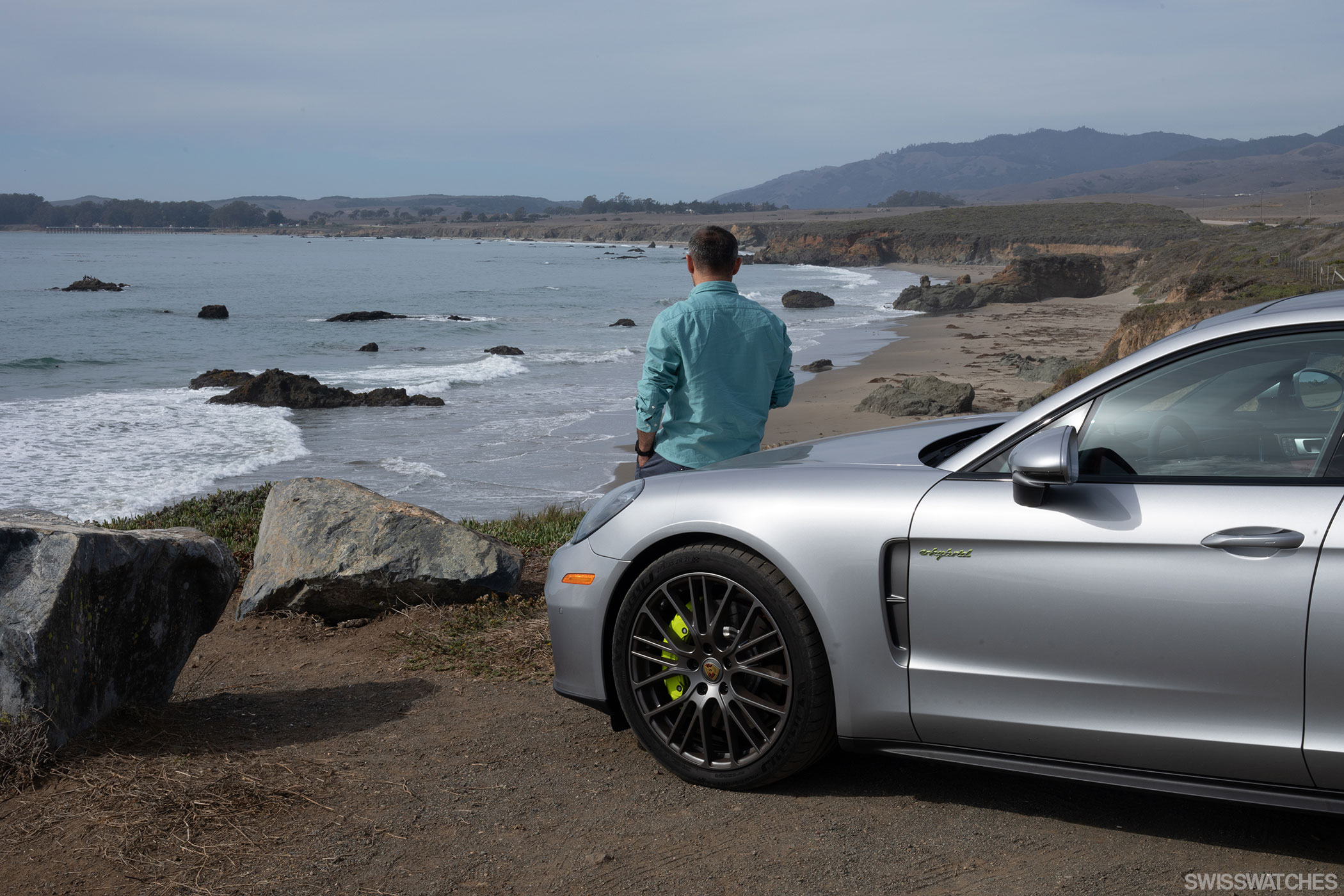
PST – 10:23 | UTC – 18:23 | CEST – 19:23
My next destination is a place that has been on my bucket list for years; Big Sur. It’s here, on the sheer endless winding roads of Big Sur, from which I get a direct view of the Pacific Ocean all the way to the mountain peaks, that the Porsche Panamera 4 E-Hybrid can show its full potential. Considered one of the most scenic stretches of highway in America, the Big Sur section of Highway 1 runs for about 90 miles (approx. 145 km) between Carmel Valley and San Simeon, and is probably one of the main reasons people drive along the Pacific Coast in the first place.
The moment has come to press the rotary knob on the steering wheel, which has sat so seductively in front of me the whole time I’ve been driving. It switches on the Sport Plus mode, which suddenly boosts the car’s performance. As soon as I press the button, I’m greeted by the powerful roar of the V6 engine. I feel the suspension tighten as the Panamera‘s steering become more direct, and the dual-clutch box glides seamlessly through its eight gears, propelling me powerfully through the impressive landscape of Big Sur. It’s a feeling that makes me forget that I’m sitting in a car with a curb weight of
2,285 kg.
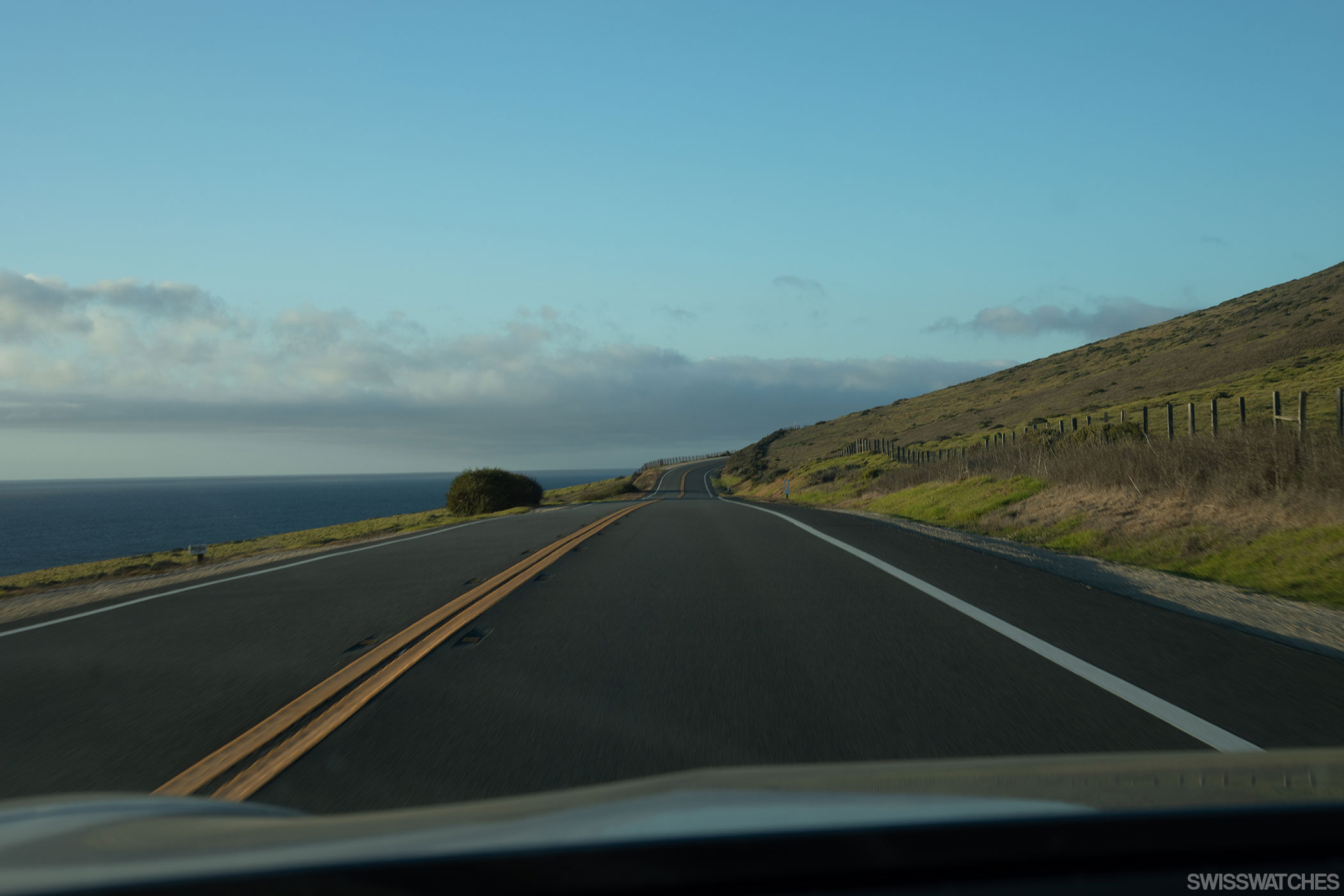
PST – 12:30 | UTC – 20:30 | CEST – 21:30
In order to let the landscape of Big Sur exert its powerful effect upon me, I pause for a moment at a coastal section. In retrospect, it was this emotional moment, standing on the rocky outcrop and gazing thoughtfully at the ocean, that would emerge as the highlight of my trip. A journey along the Pacific coast, culminating in the streets of Big Sur, where man, nature, horology and machinery come together in harmony.
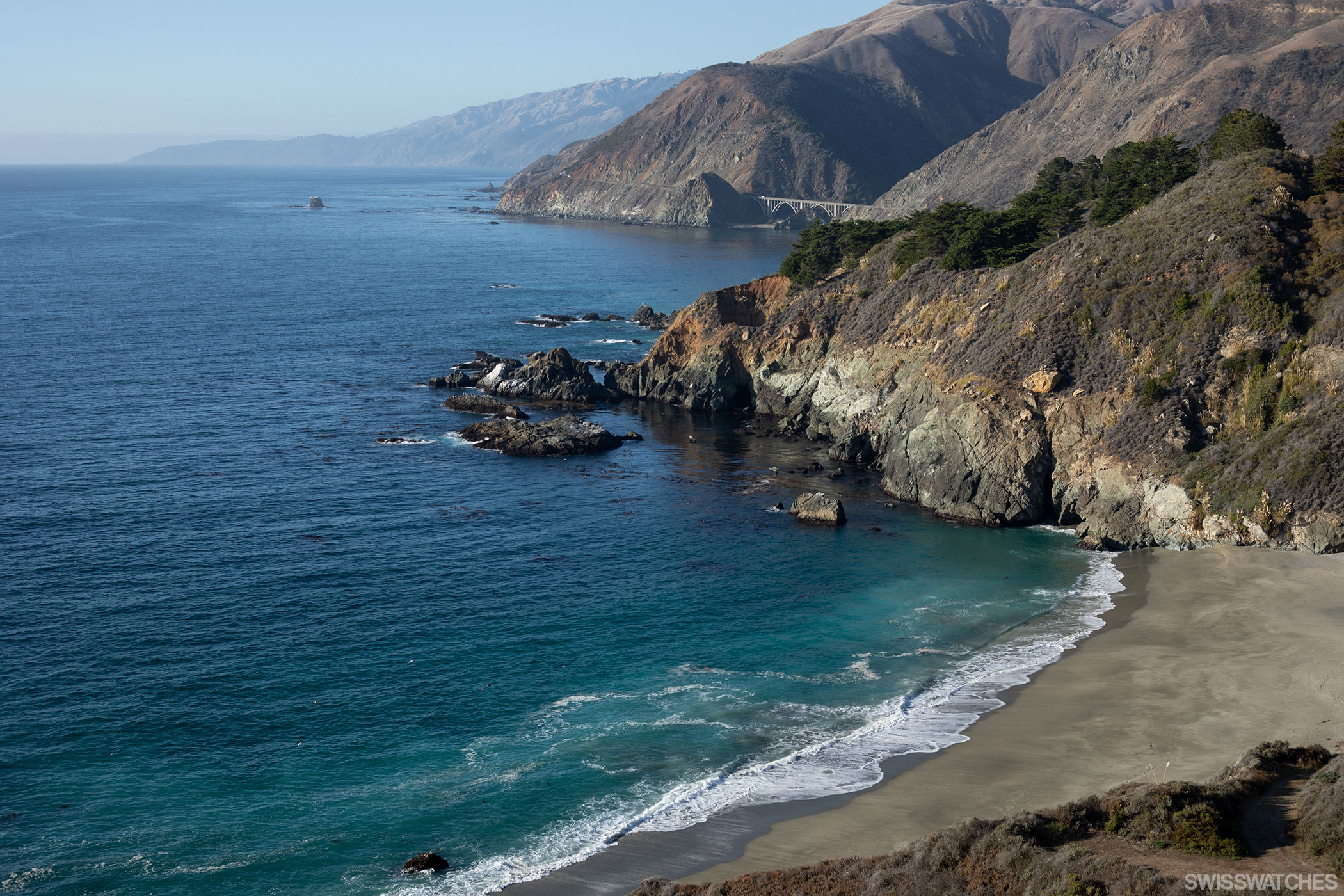
PST – 14:32 | UTC – 22:32 | CEST – 23:32
I then make my way to Carmel by the Sea, 25.9 miles (41.7 km) away. Here I stop for a short walk on the beach, during which I note the natural beauty of the beach and its thriving wildlife appreciatively.
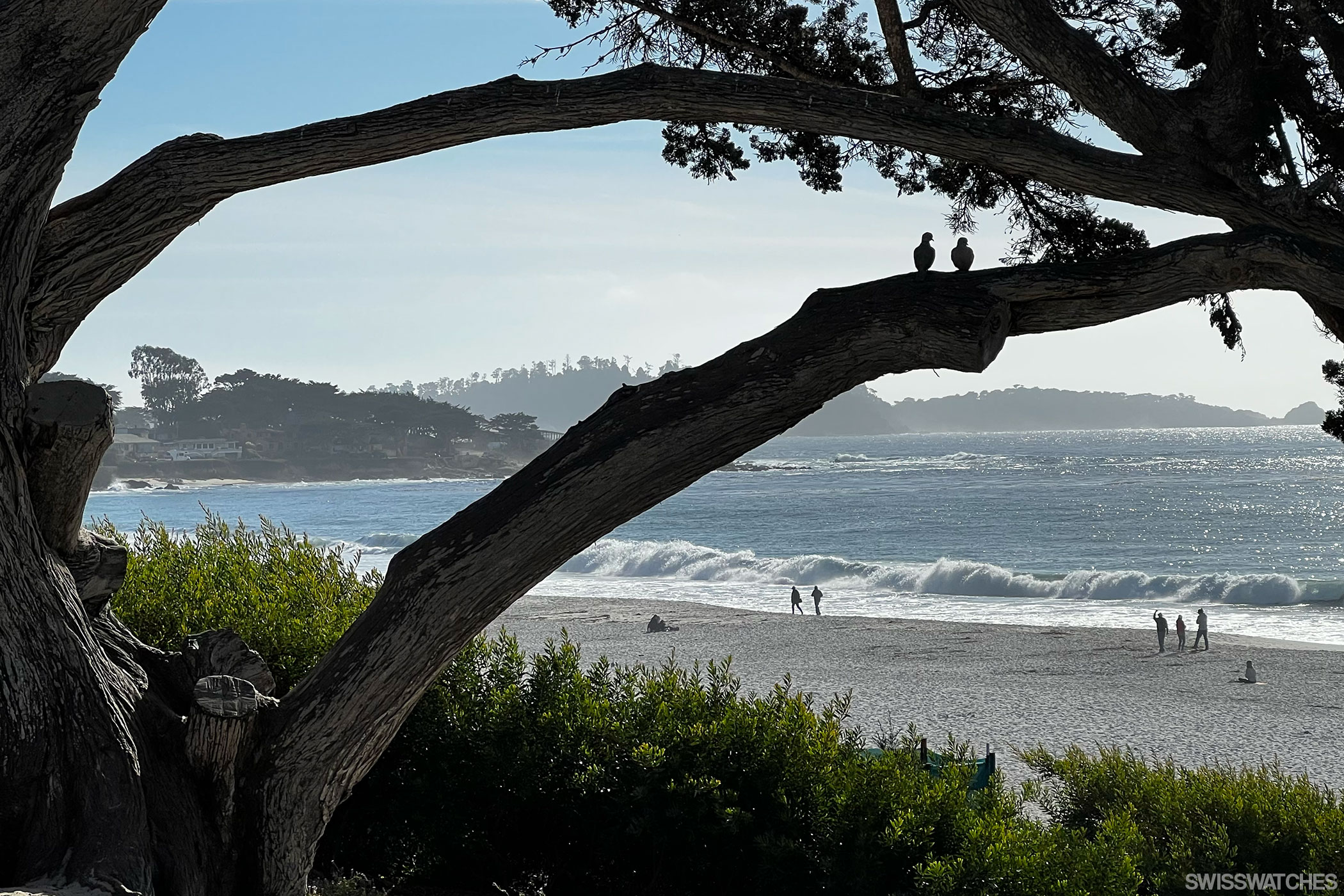

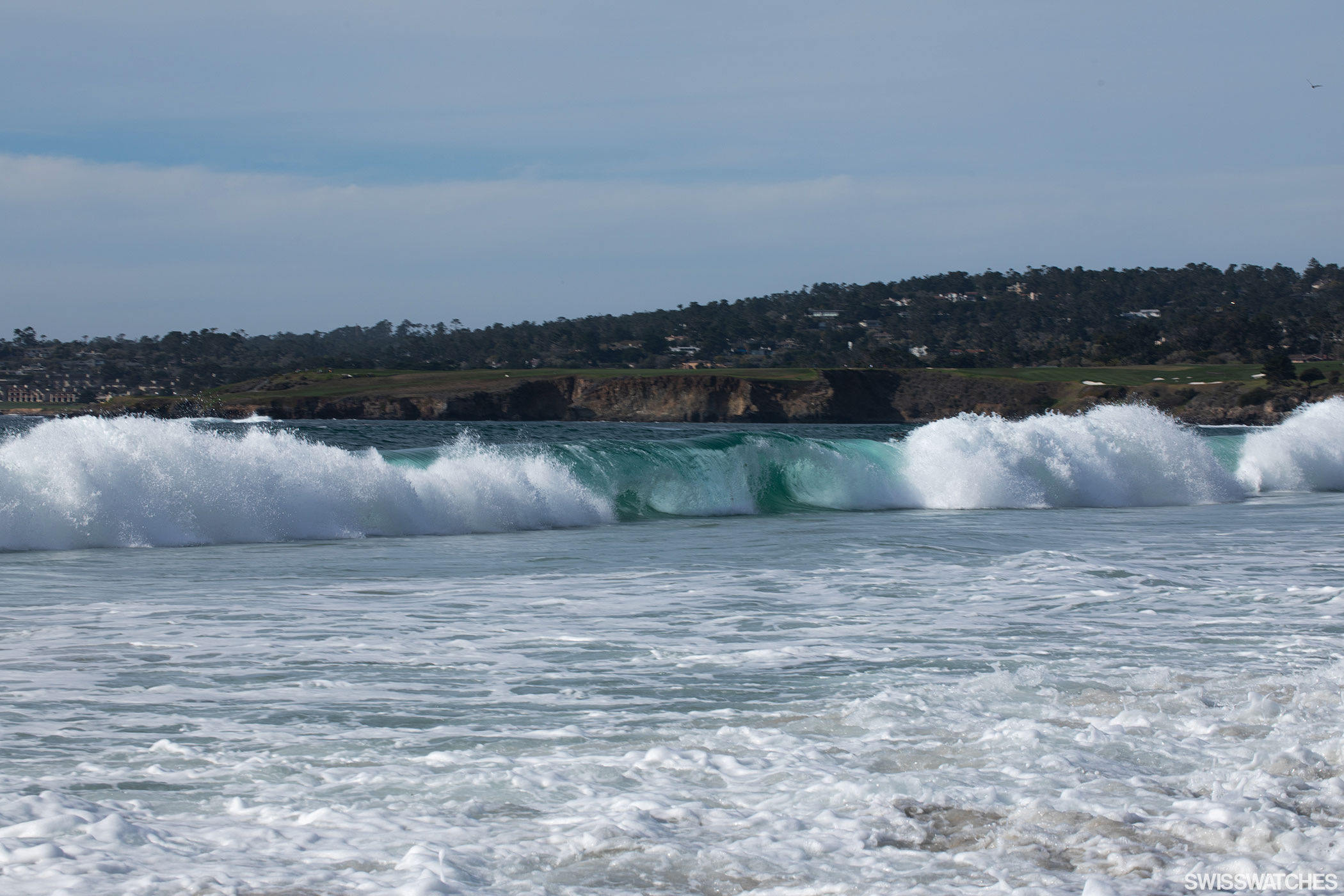
PST – 18:32 | UTC – 02:32 | CEST – 03:32
In the evening, I’m drawn to the ‘crown jewel of the Central Coast’, Monterey. Monterey is a coastal town in Monterey County, 185 kilometers north of San Francisco and about 560 kilometers south of Los Angeles. On the town’s waterfront, I find the Old Fisherman’s Grotto Monterey Restaurant, where I have dinner. The family-run small restaurant was founded in the 1950s by Sabu Shake and established itself as one of the most renowned addresses in the region for seafood. Sabu Shake sourced its produce directly from local fishermen and was known for handing out his clam chowder to passers-by in front of his restaurant.
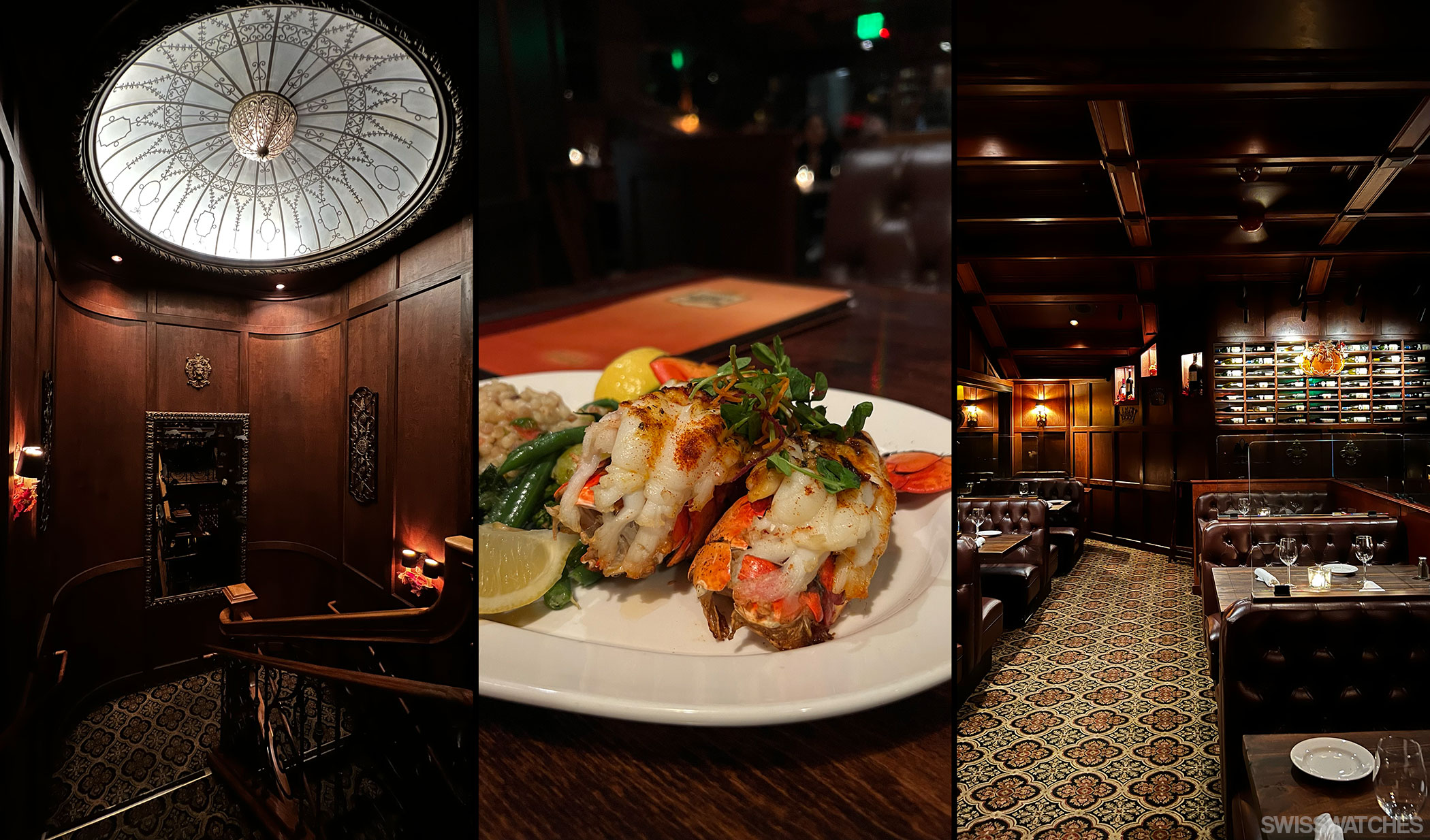
Old Fisherman’s Grotto – Monterey
After an excellent dinner, I stroll along the harbour and discover a little house displaying information about whale watching. I resolve to be there very early the next day so as not to miss the 9:00 a.m. departure.
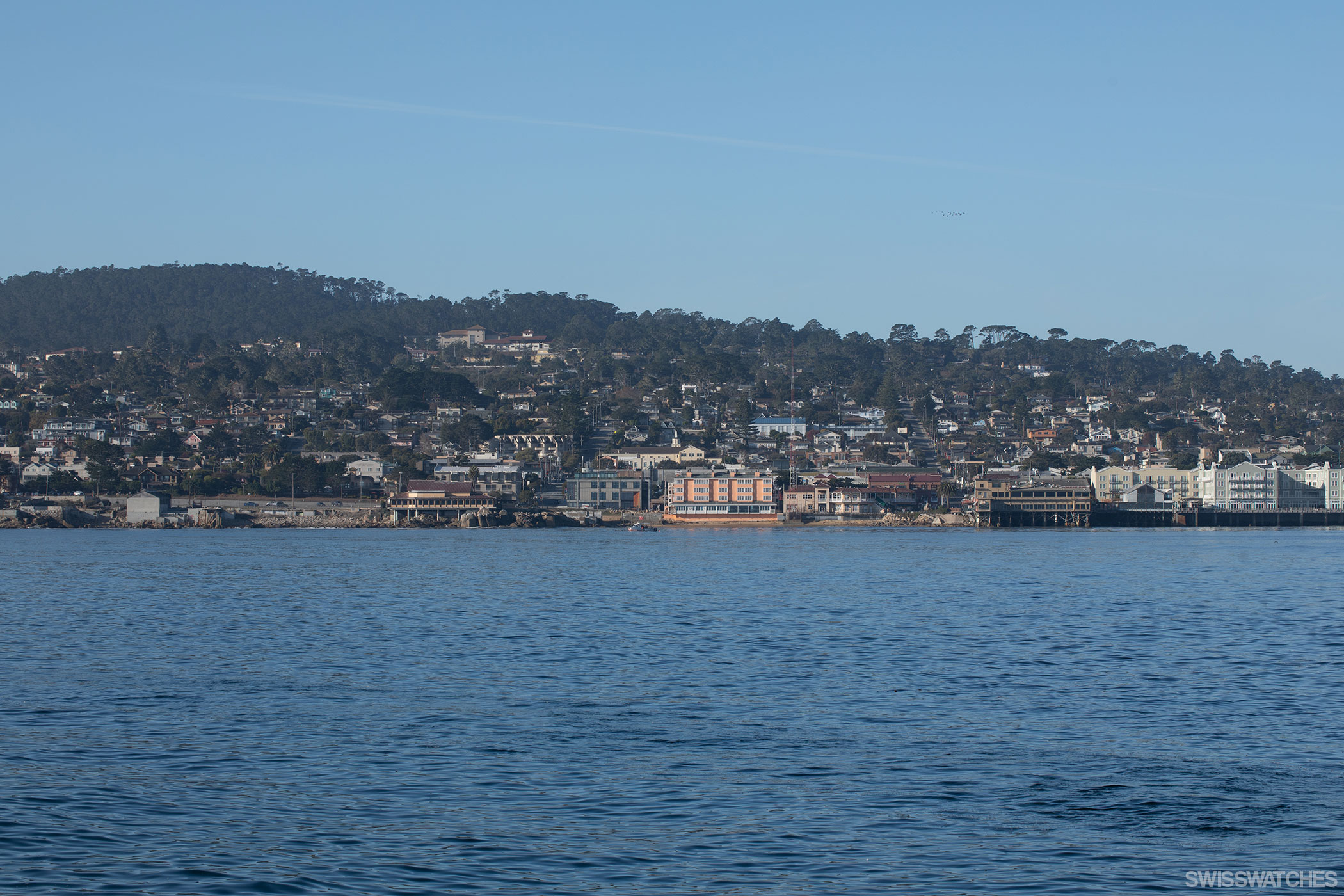
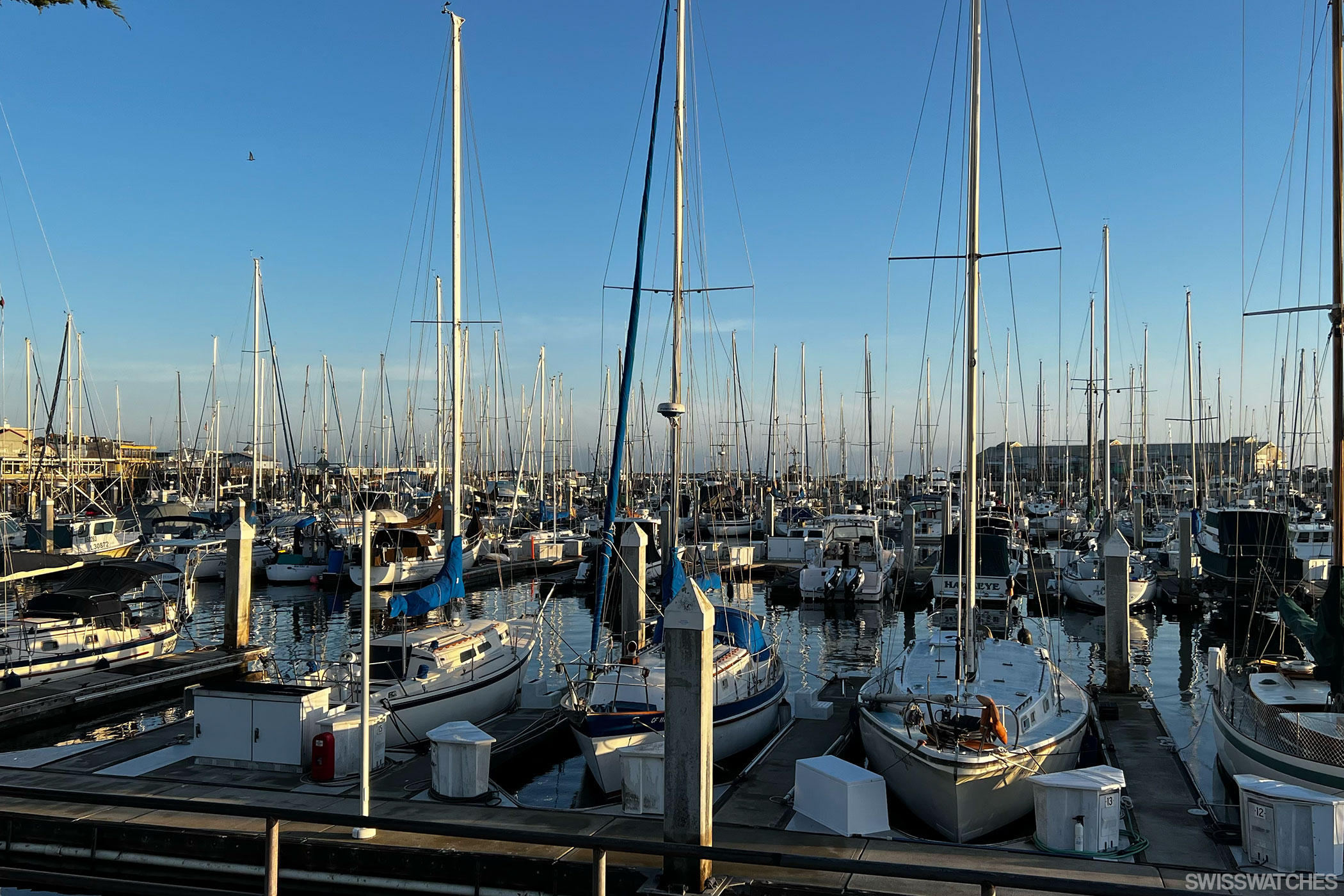
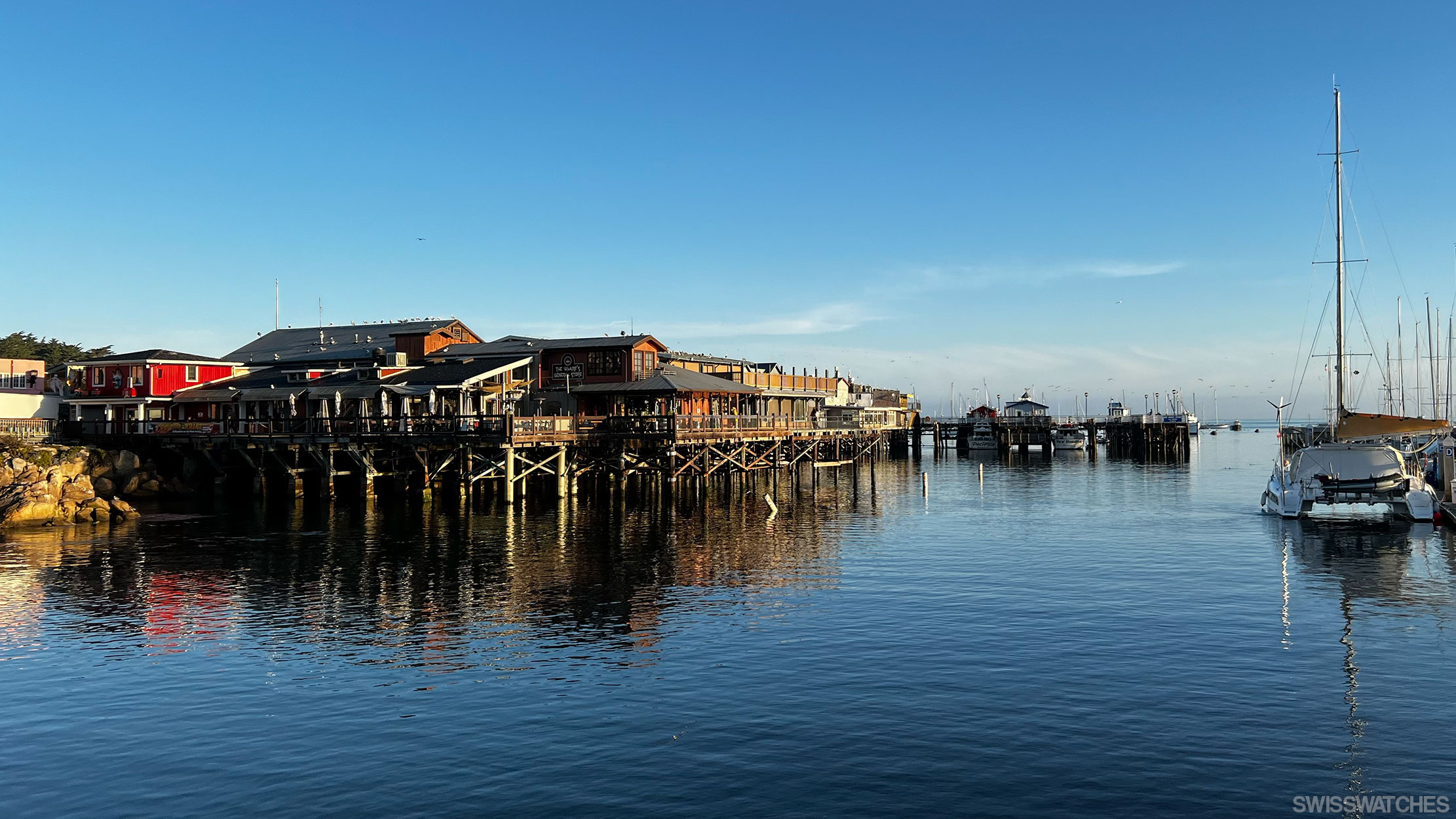
29.10.2022
PST – 08:00 | UTC – 16:00 | CEST – 17:00
The next morning, I check out of my motel by 8 o’clock, walk to the harbour and book a ticket for ‘Whale Watching’ for 92 dollars. At 9.00 o’clock on the dot, we head out to sea. As soon as we set out, the first whales show up. Humpback whales are one of the most common whale species that I get to see during out in Monterey Bay. They migrate every spring from their wintering grounds in the waters of Mexico/Baja California, heading towards Alaska. However, you can’t always catch a glimpse of the whales. Peak season is often between late October and April, when they circle the Gulf of California before crossing California coastal waters – so I came at the perfect time.
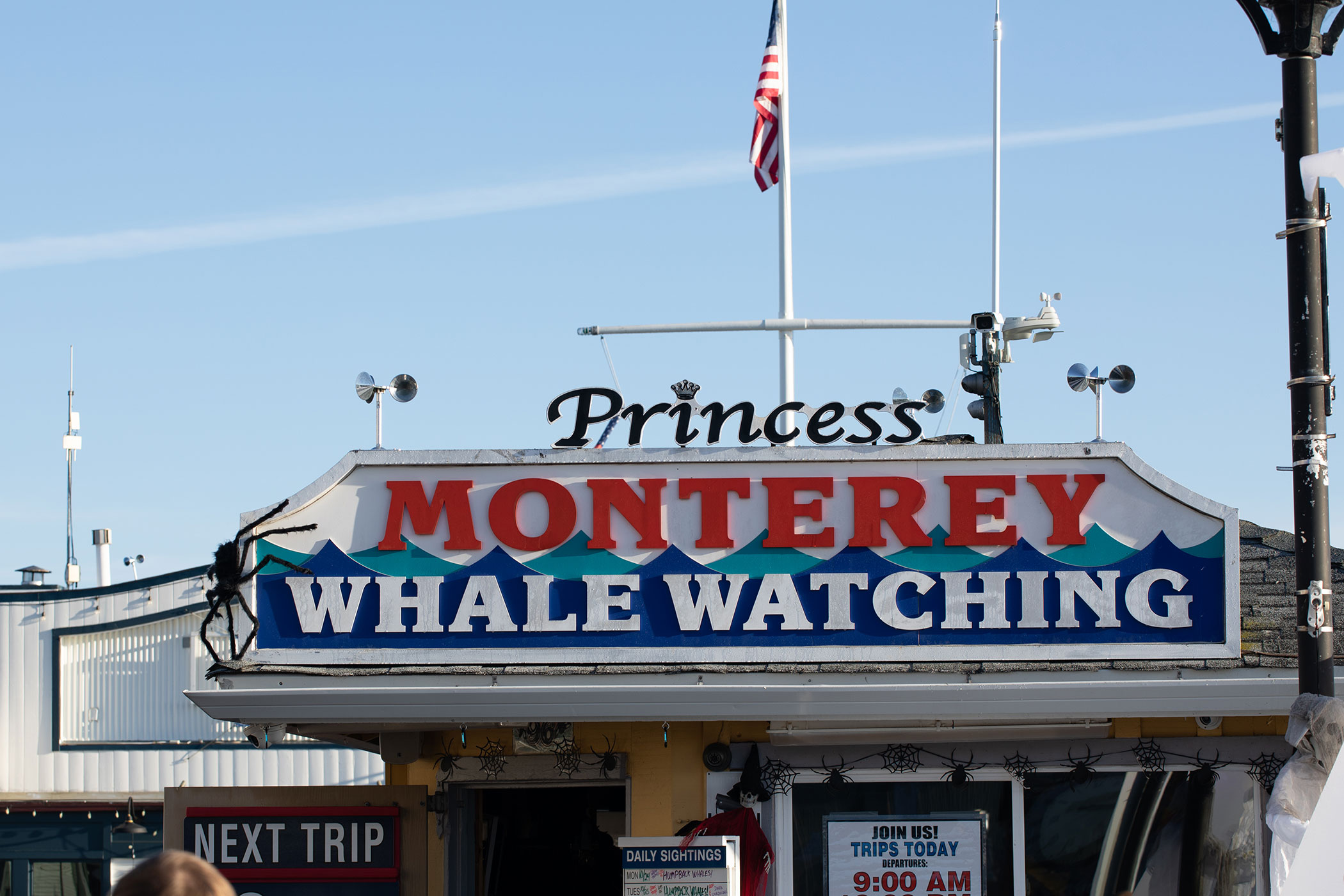
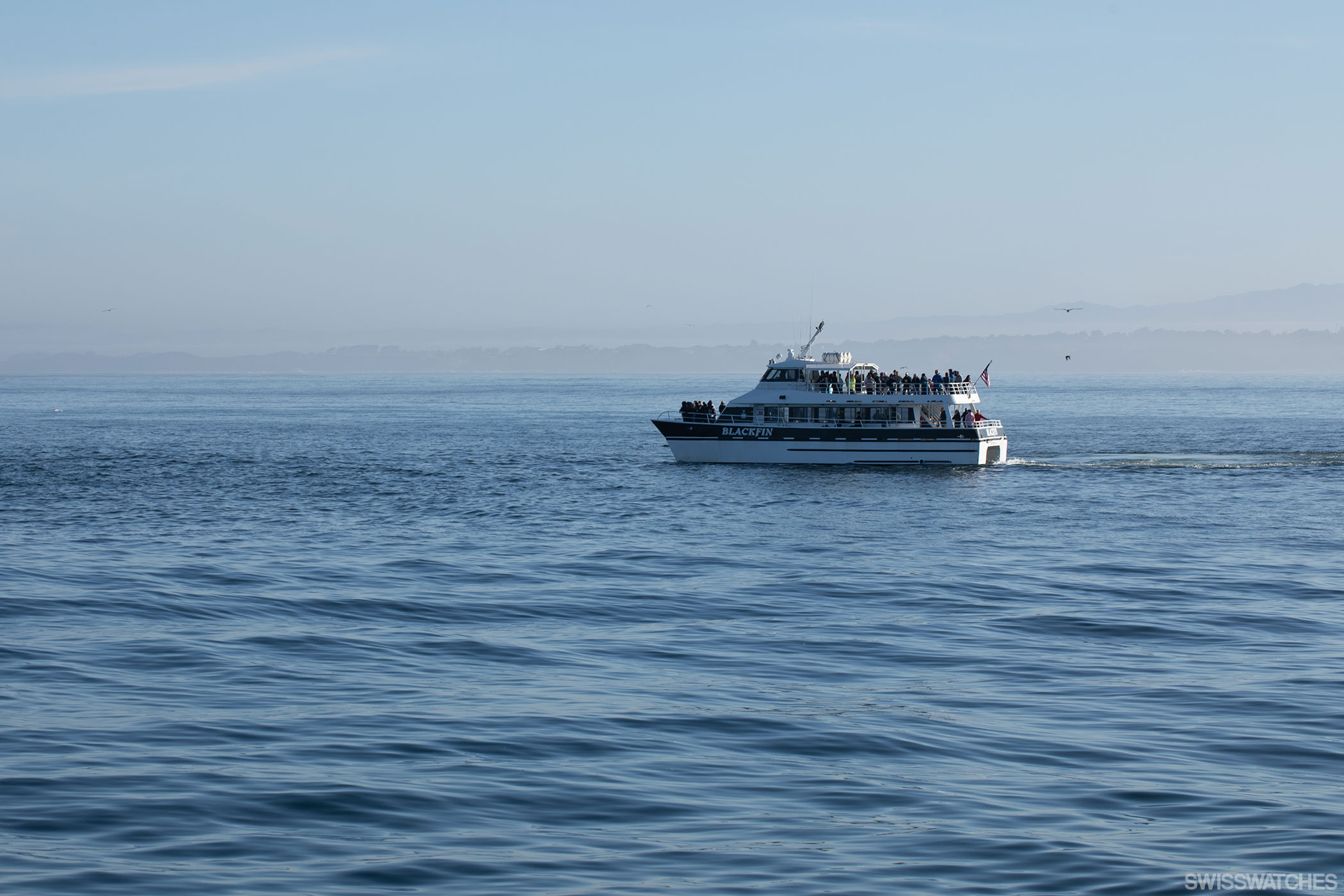
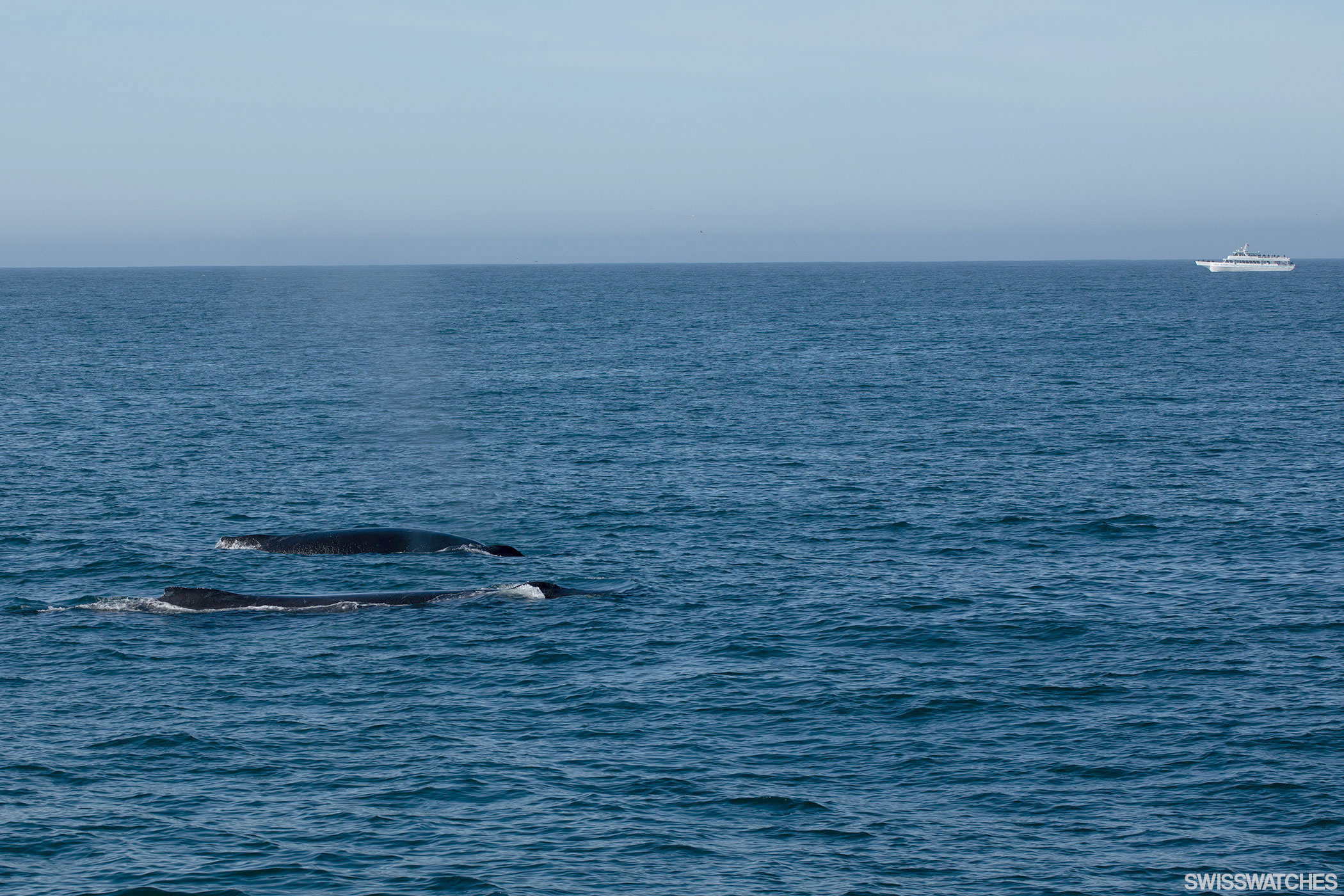
It is noon by the time we return to the harbour. I make my way downtown to the Monterey Bay Aquarium, built in 1984 and one of the largest public display aquariums in the world. It is best known for its 17-meter-long and five-meter-high acrylic window overlooking the largest aquarium. The Monterey Bay Aquarium is home to some 35,000 marine animals consisting of 550 species, from nudibranchs to starfish and jellyfish to sharks and penguins. In the late afternoon, I leave Monterey behind and continue my journey towards San Francisco via Scott Creek Beach.
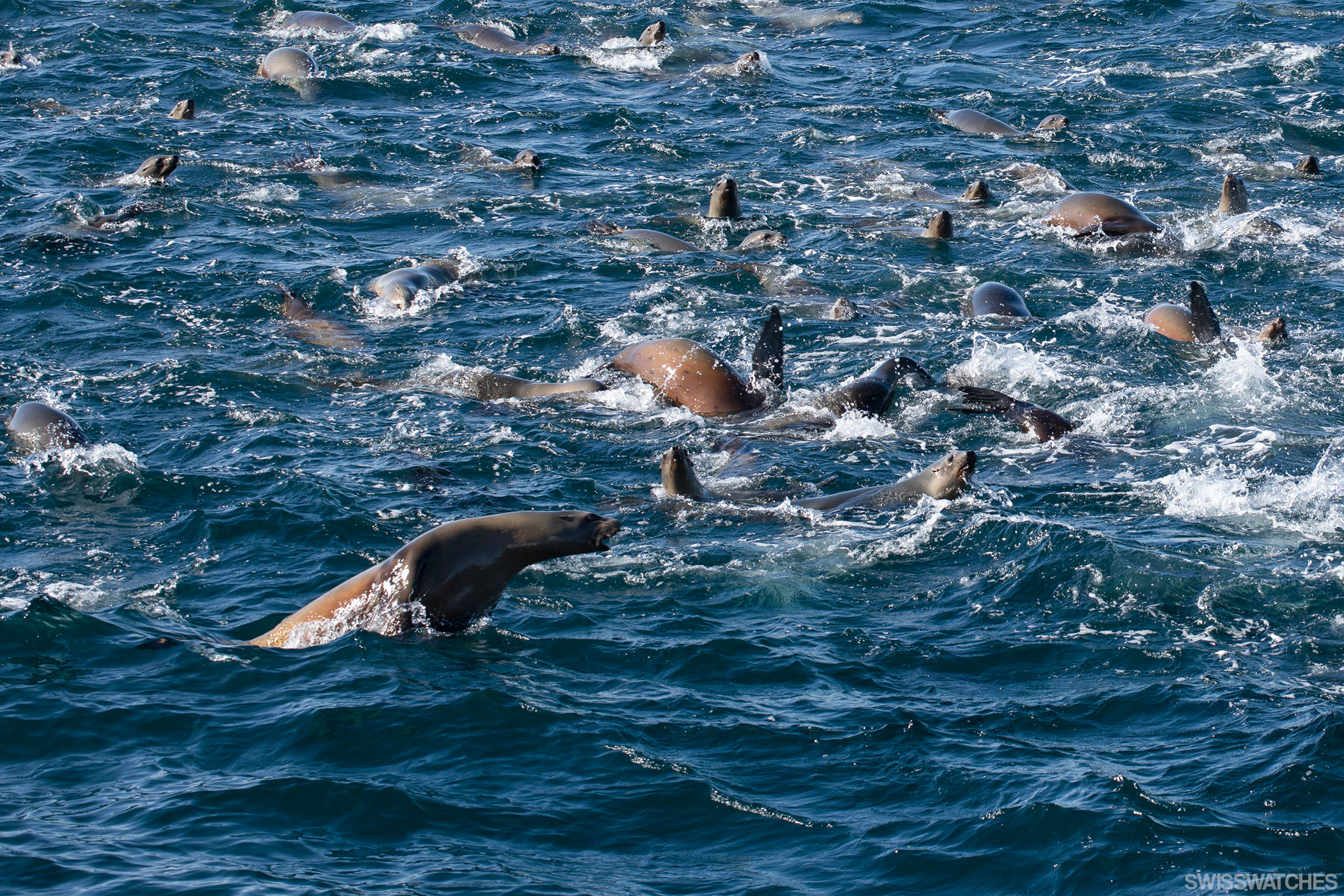
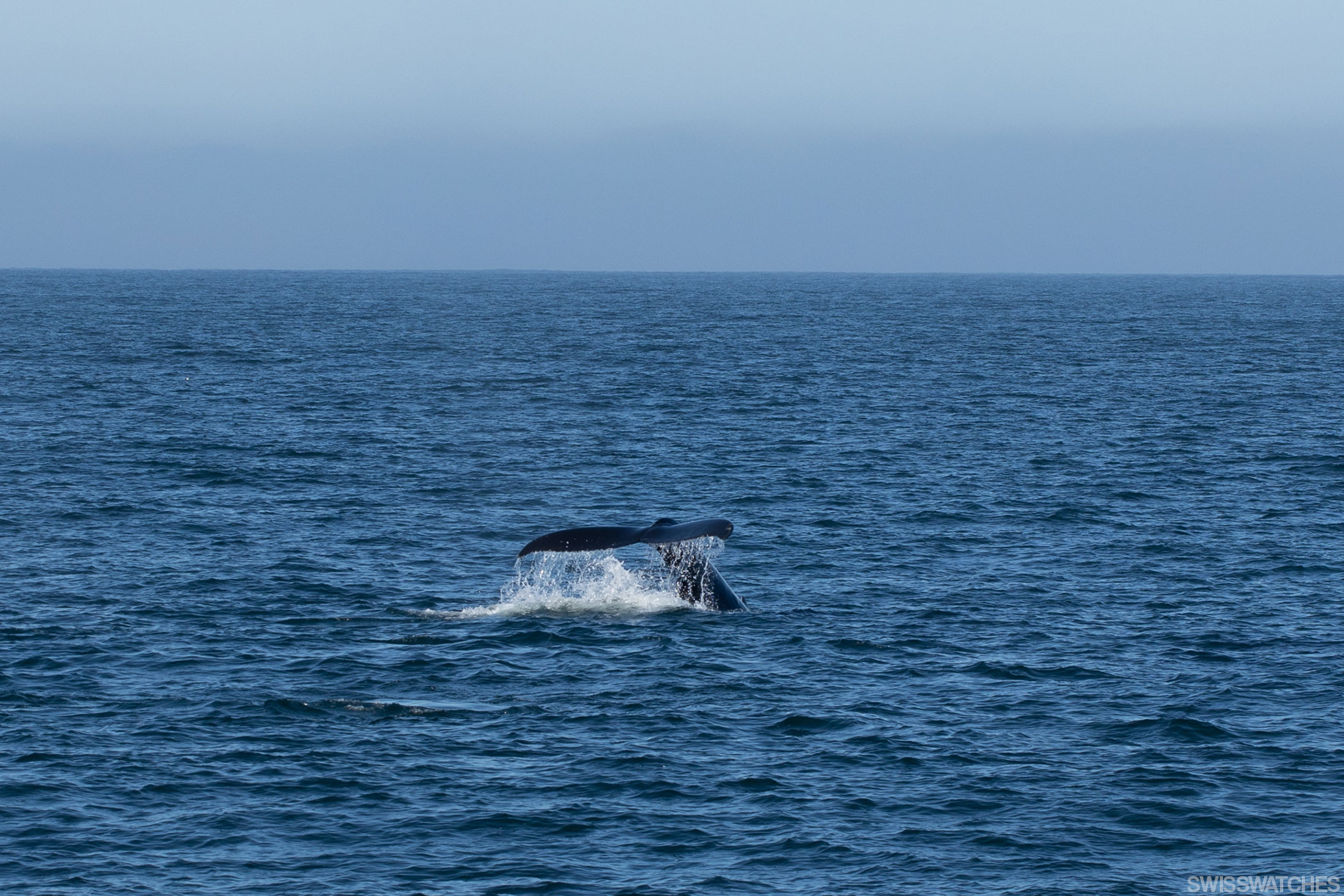
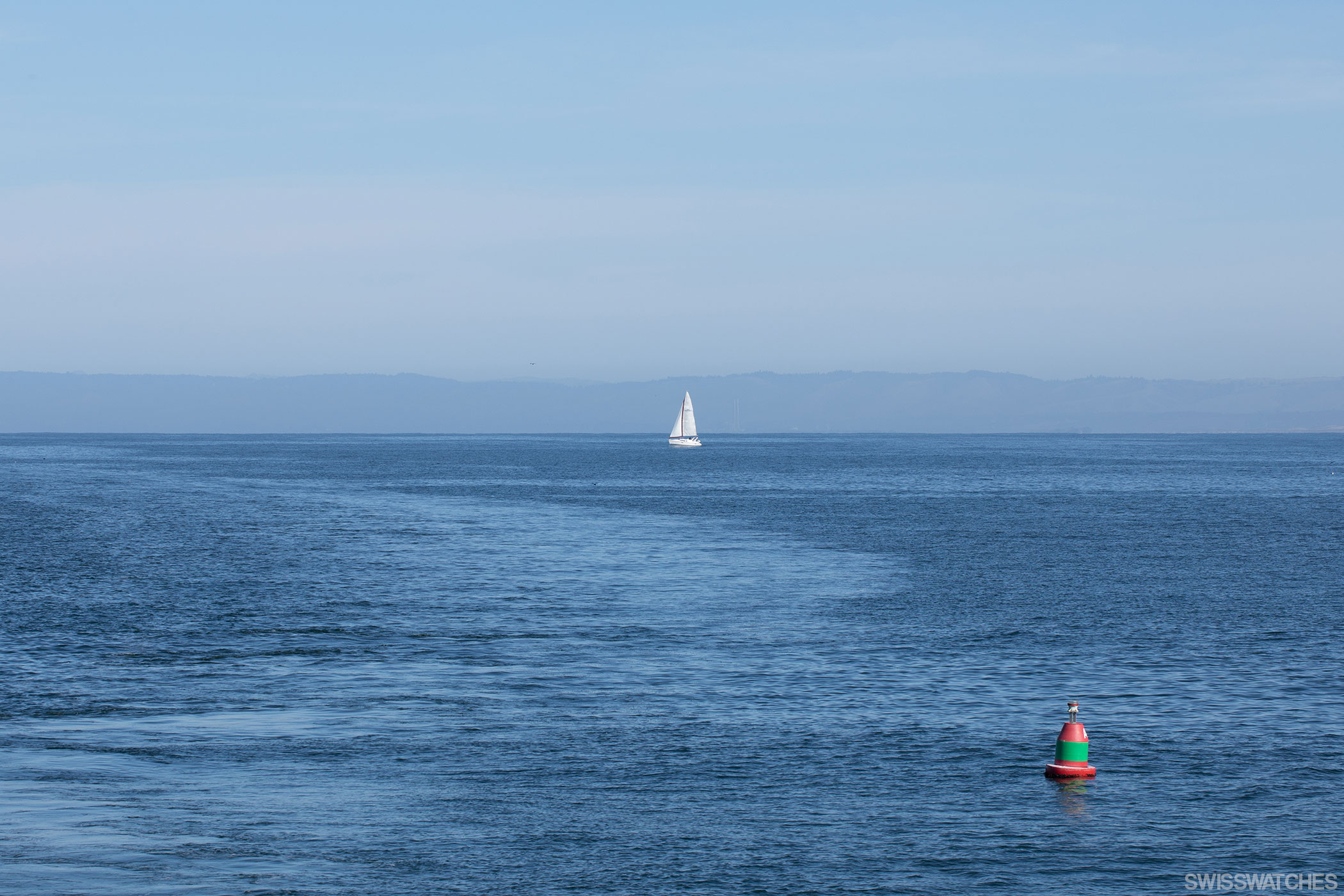
PST – 18:10 | UTC – 02:10 | CEST – 03:10
Shortly before sunset, I arrive at Scott Creek Beach. While the kitesurfers glide into the sunset and the curves of the Panamera catch the last rays of the sun, I soak in possibly the most atmospheric views of my trip.
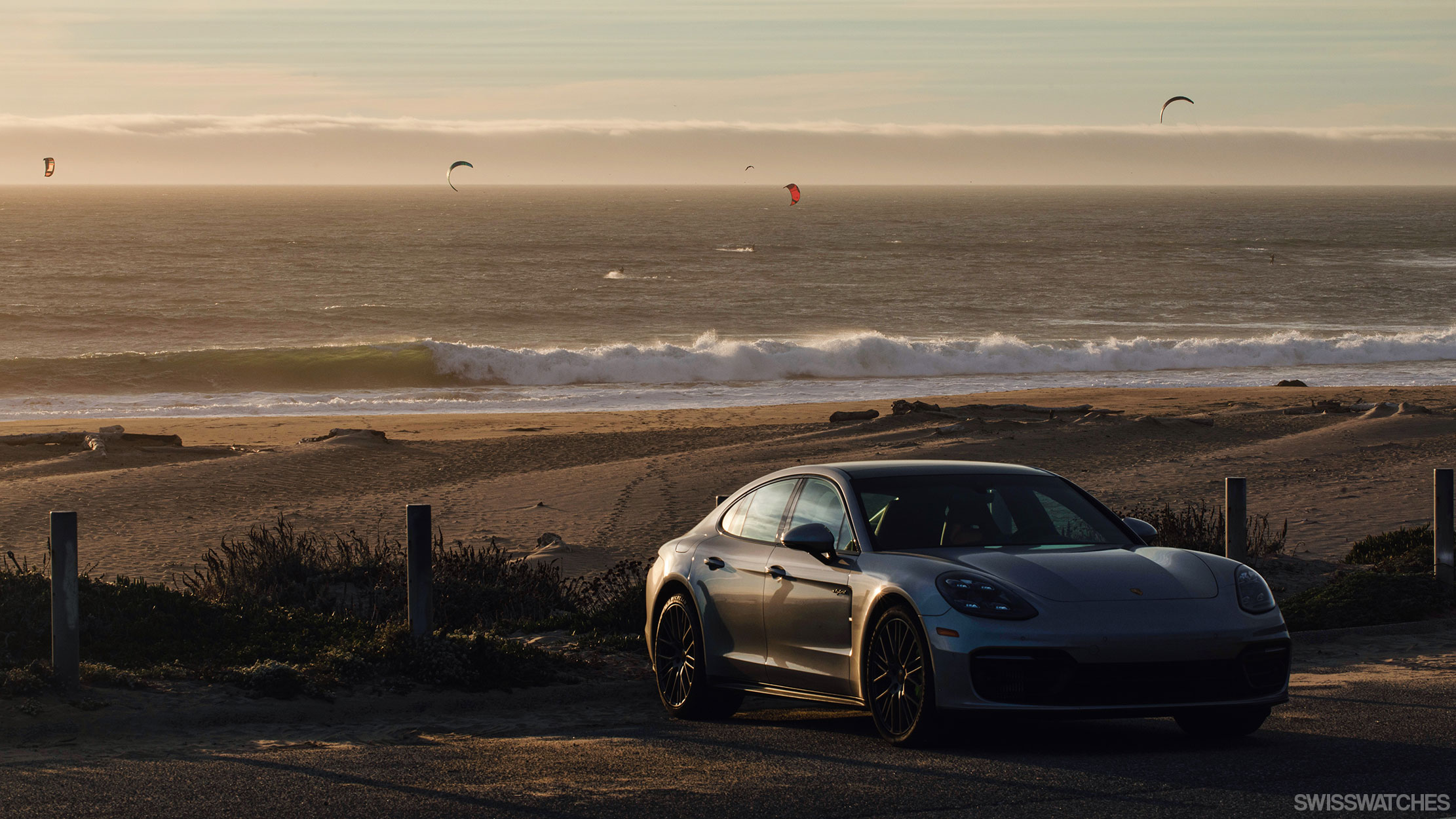
PST – 21:30 | UTC – 05:30 | CEST – 06:30
I arrive in San Francisco late in the evening. Since today is Halloween, the city is full of costumed people. Out of the Halloween hustle and bustle, I find a table at Harri’s, directly on Market Street near Union Square. Harri’s serves the best angus steak on the West Coast. The restaurant exudes an atmosphere of traditional elegance and charm, where locals and tourists alike can experience a time long gone. I order the best ribeye steak of my life up to this day and a glass of 2015 Cabernet Sauvignon from the nearby Napa Valley – an absolute recommendation.
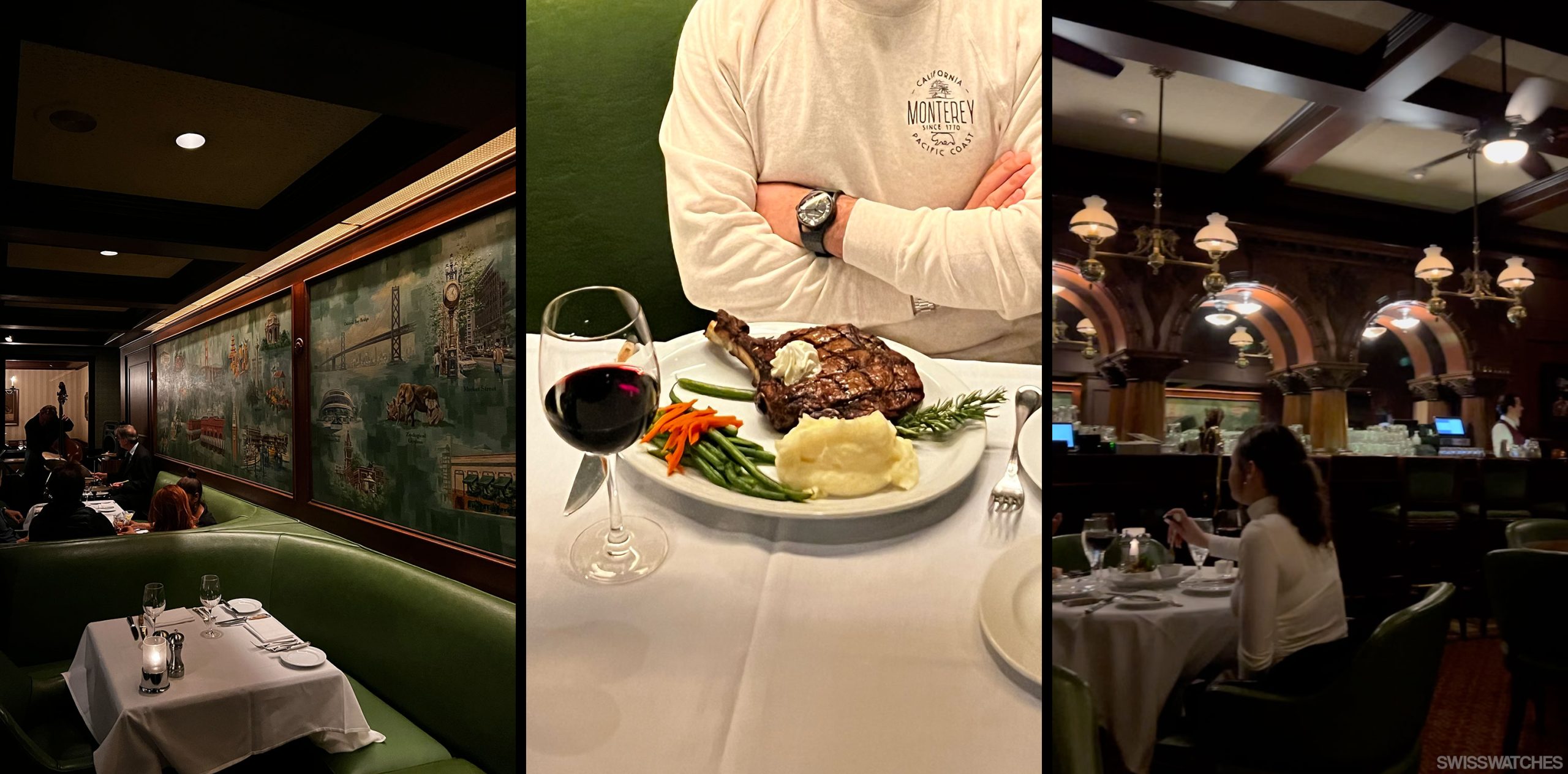
Harris‘ Restaurant – The San Francisco Steakhouse
Day 4: San Francisco
30.10.2022
PST – 07:10 | UTC – 15:10 | CET – 15:10
The time changeover to winter time took place in the night to 30.10.2022 (therefore UTC = CET and no longer CEST).
On the fourth and final day I want to explore San Francisco, the last destination of my long journey. But I have a problem: far too little time and far too much to discover. So what must you do if you want to see the highlights of a city in the shortest possible time? A city tour. The trip starts with a stop at the famous Fisherman’s Wharf, where I stroll along the busy harbour to Pier 39 and peruse numerous stores, galleries and live music.
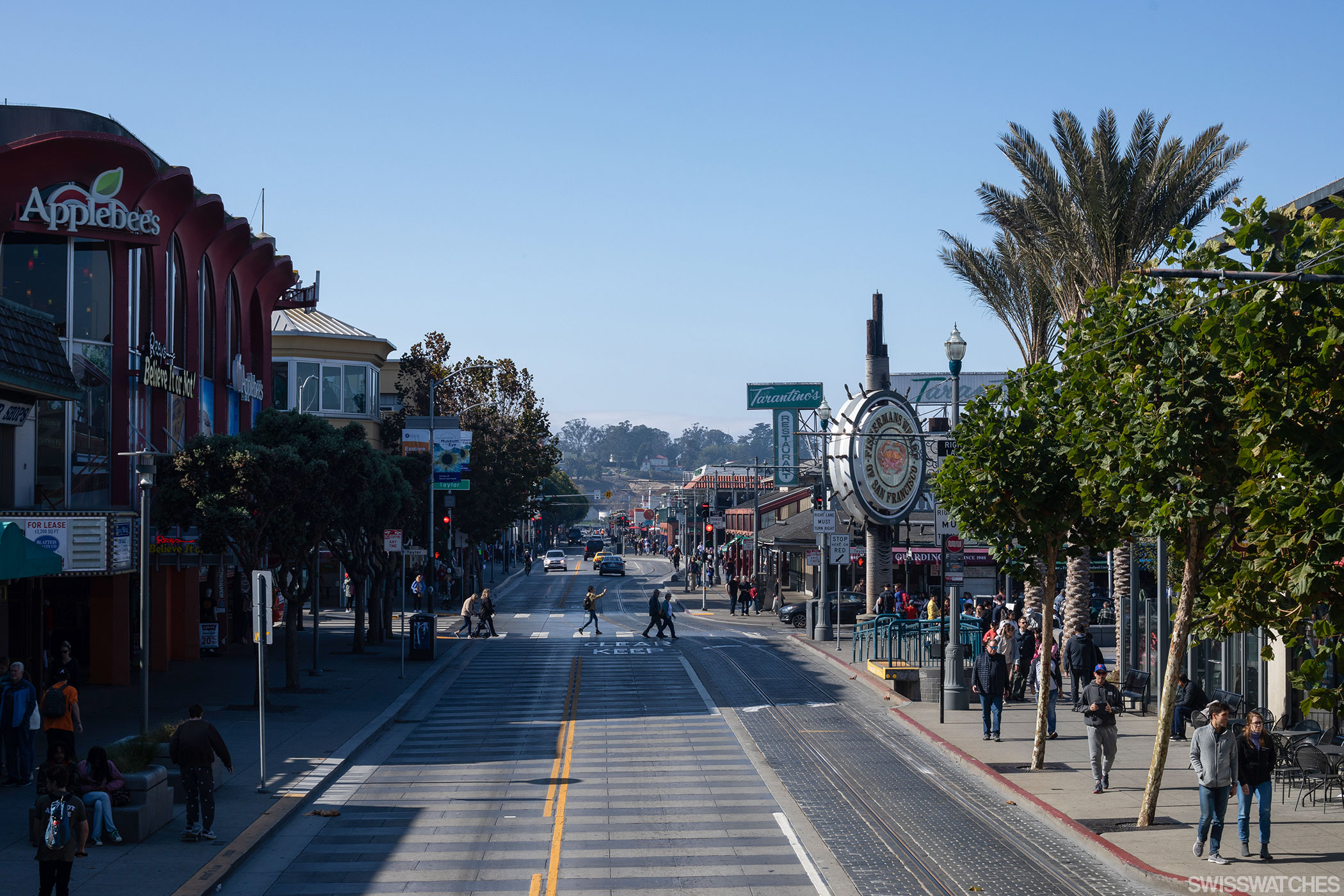
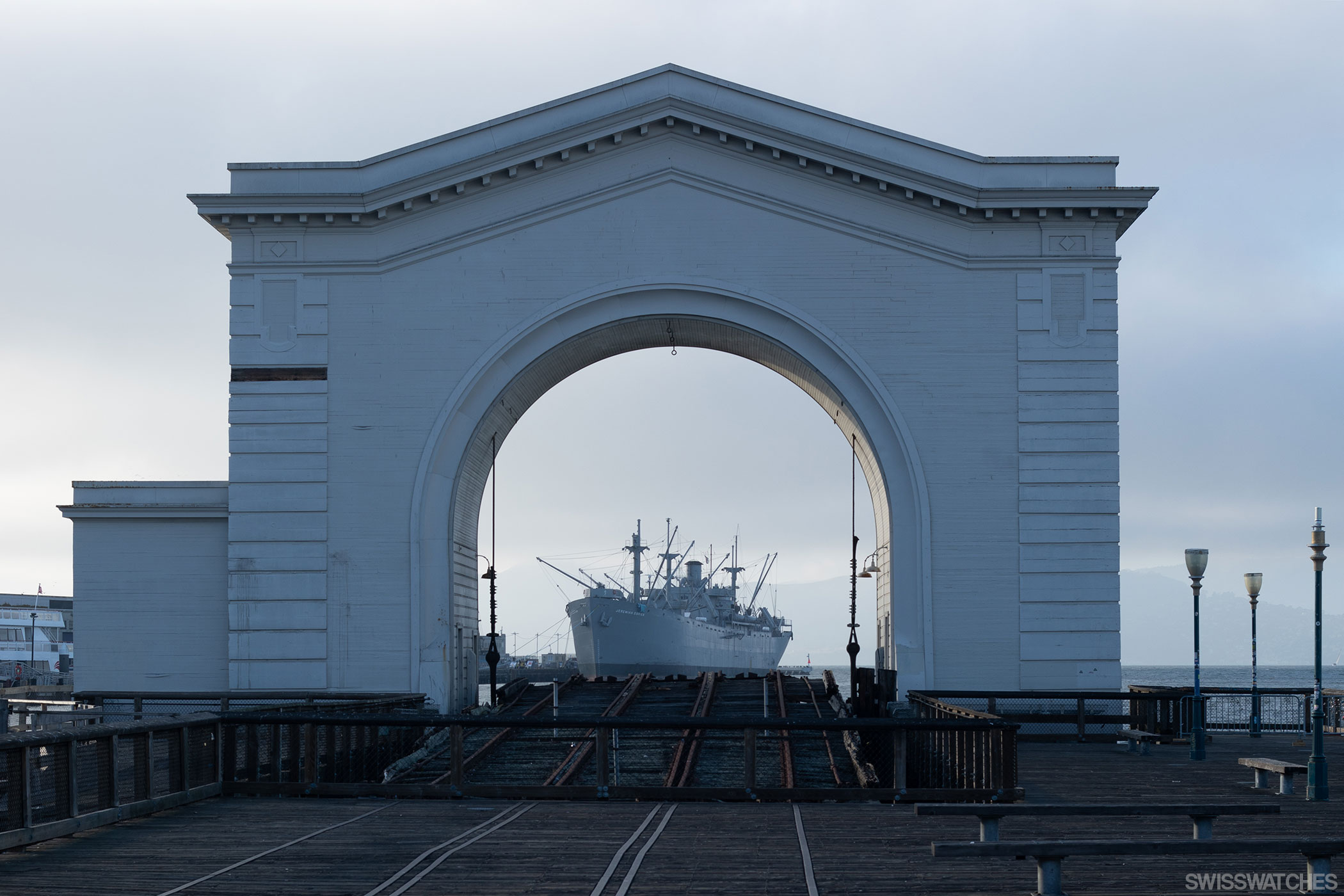
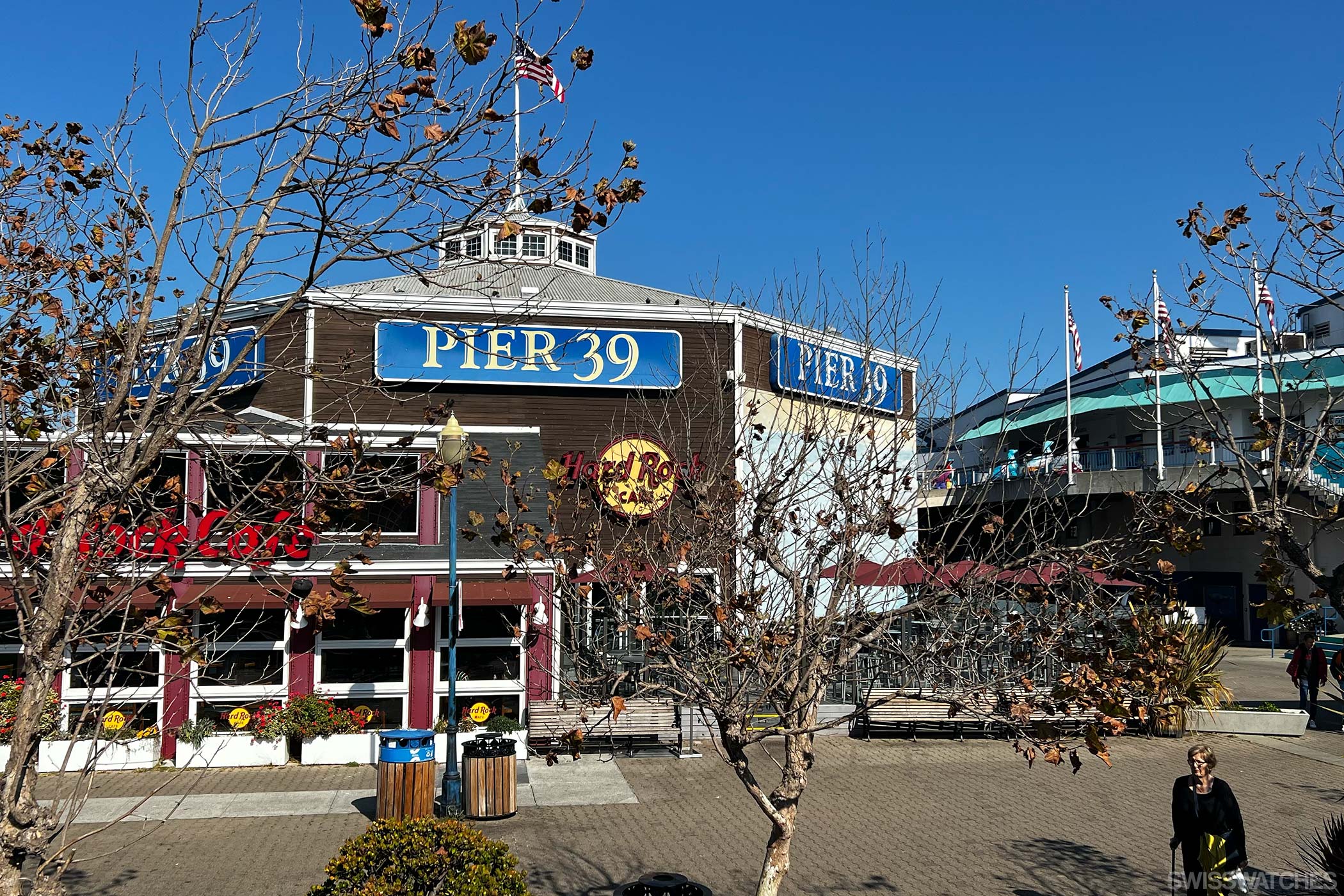
Hopping back on the bus, I make my way to the Golden Gate Bridge, San Francisco’s landmark, which completely disappears in the fog around noon and is barely visible from the platform where we make our stop.
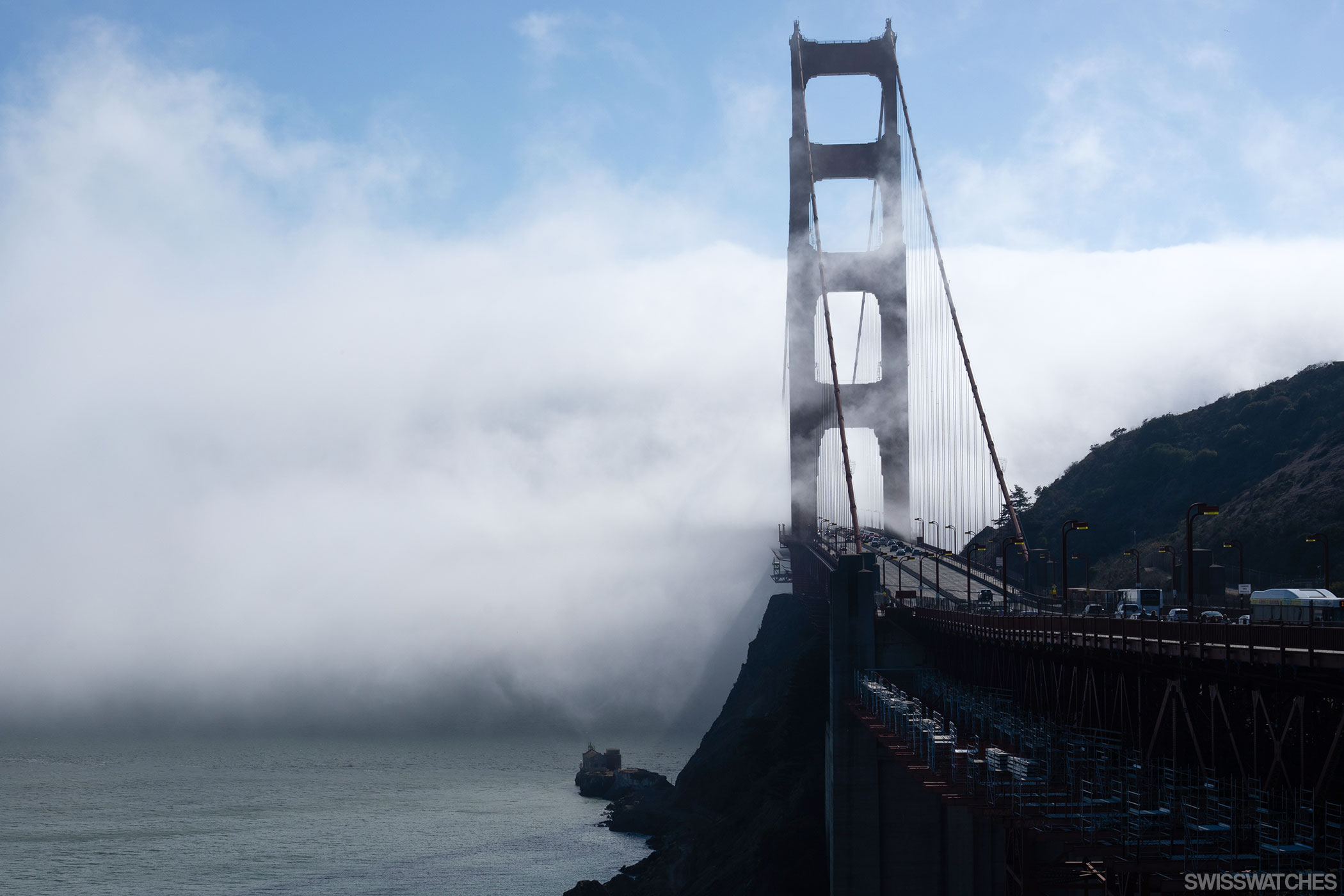
So on we go to Little Italy, aka North Beach, San Francisco’s oldest residential area, also known for its delicious Italian cuisine. Embarking onto the historic Tram Muni is an absolute must to explore the city’s iconic but steep hills. I continue on it to Union Square, the city’s central square.
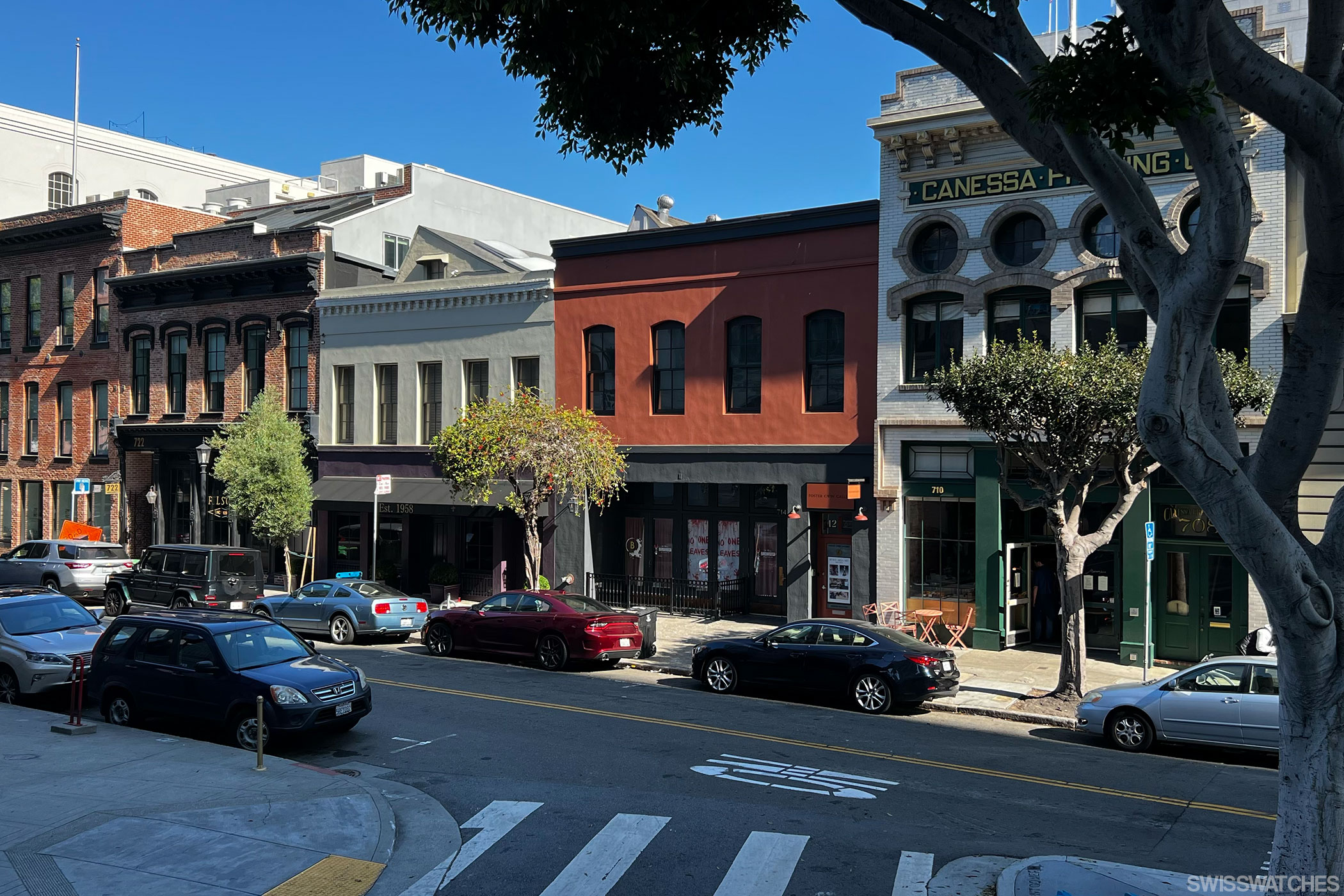
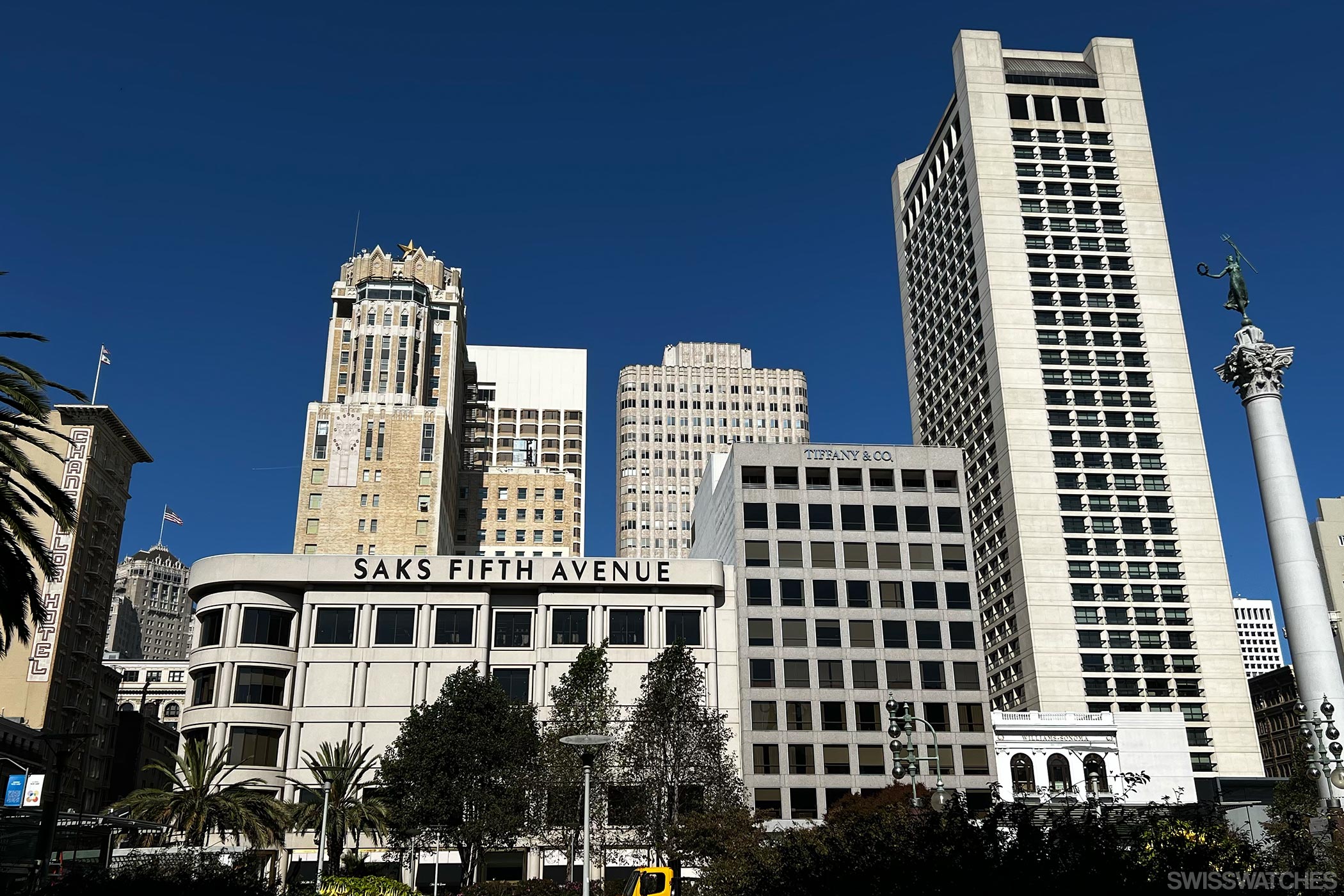
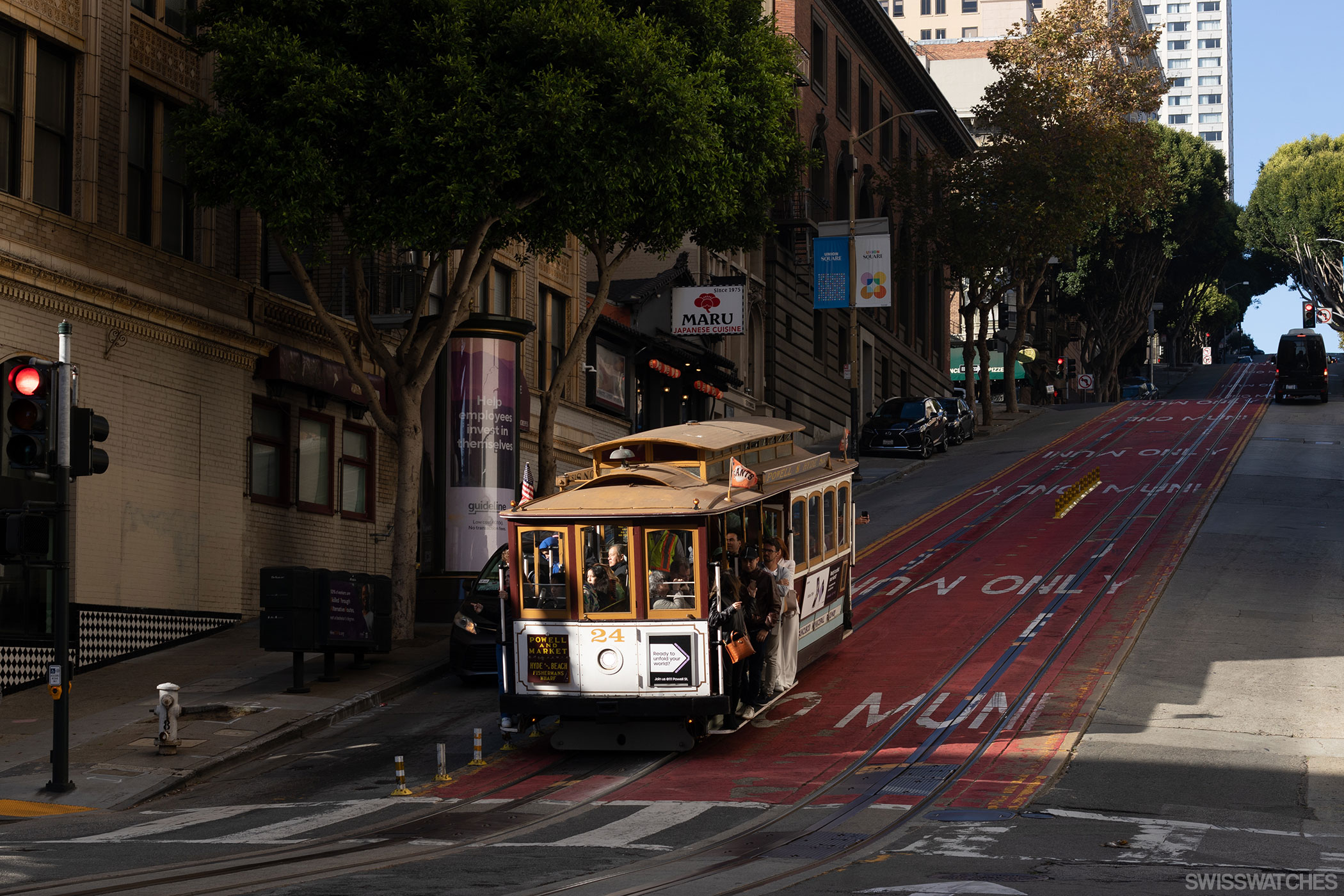
PST – 17:45 | UTC – 01:45 | CET – 01:45
I don’t want to leave San Francisco without seeing the bridge at least once in its full glory without fog. So, I drive with the Porsche shortly before sunset, and then to Baker Beach, from where you get an impressive, unrestricted view of the bridge. Against the fiery sunset, the bridge presents itself particularly imposingly.
PST – 21:00 | UTC – 05:00 | CET – 05:00
After a short dinner, I put my Panamera back on the road and drive through the night from San Francisco to Los Angeles (about 420 miles / 675 kilometers), because the next day I must head back to Germany.
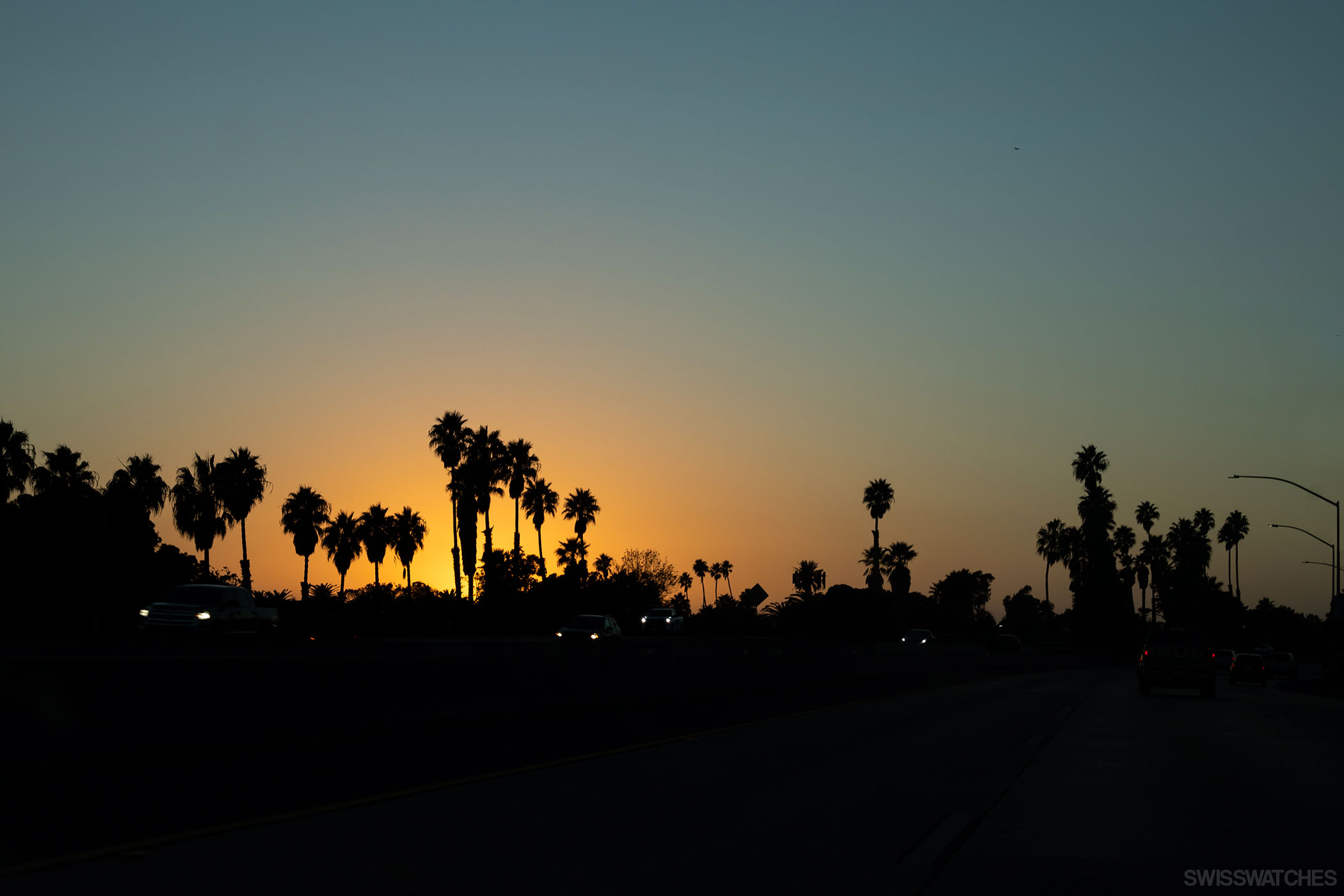
Too little time for landscape, car and watch
One thing is clear: to discover everything, you would need three times as much time as I had. The absolute highlight of my trip was the wild and beautiful landscape of the coast. It impressed me so much that it burned itself into my memory, even without photos. Without a doubt, the Big Sur is truly amazing and pretty hard to describe in words – you have to experience it for yourself to fully appreciate it. If you ever have the opportunity to travel the West Coast, be sure to include this section.
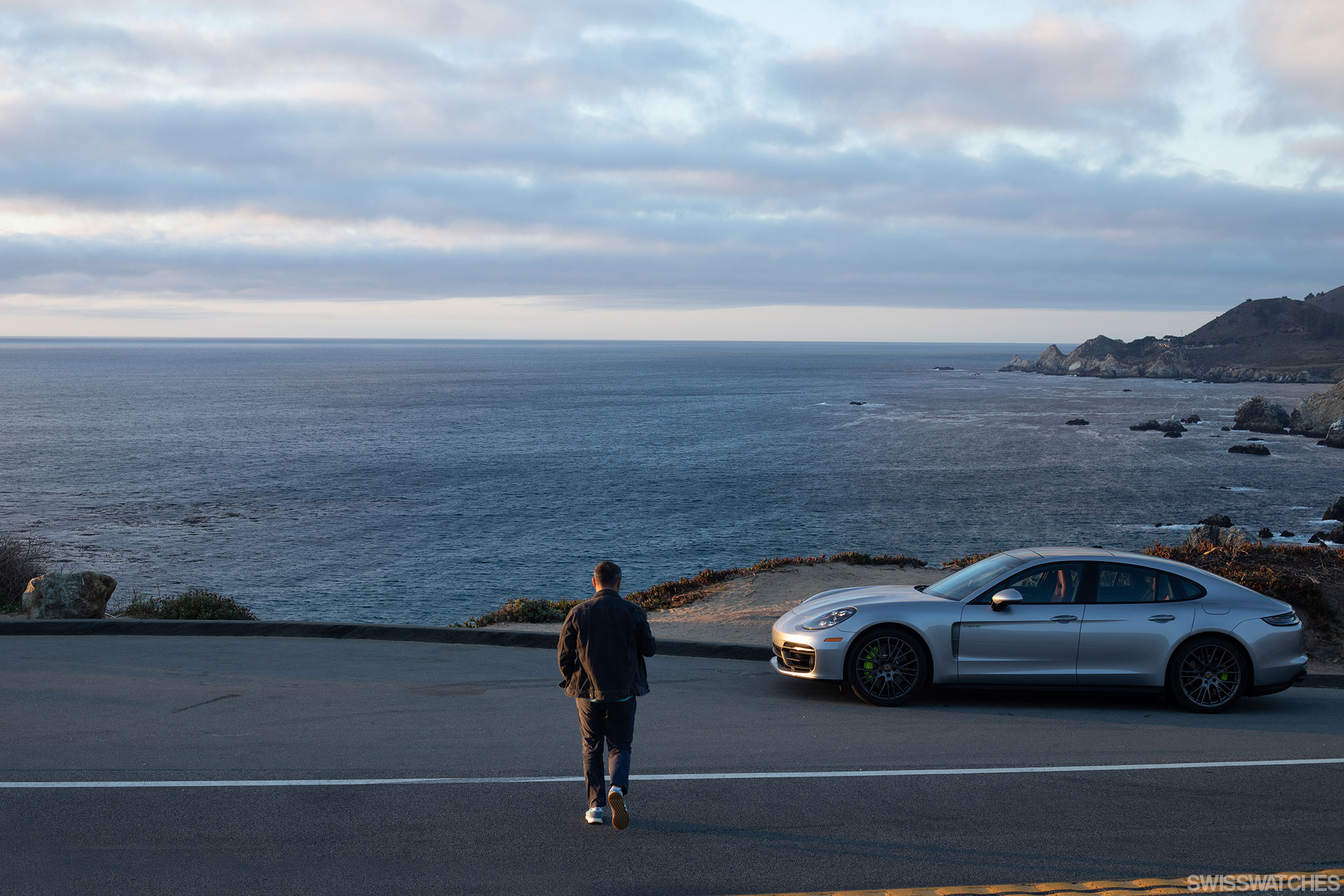
The city I liked the least was LA. I’ve been to US metropolises like New York before and experienced a wide range of cultures, but for some reason L.A. intrigued me the least. Despite being one of the richest cities in the world, it still struggles with lack of cleanliness, homelessness, drug addiction and other problems. Still, there is something magical about L.A. – perhaps because of its proximity to Hollywood and Beverly Hills – that attracts so many people.
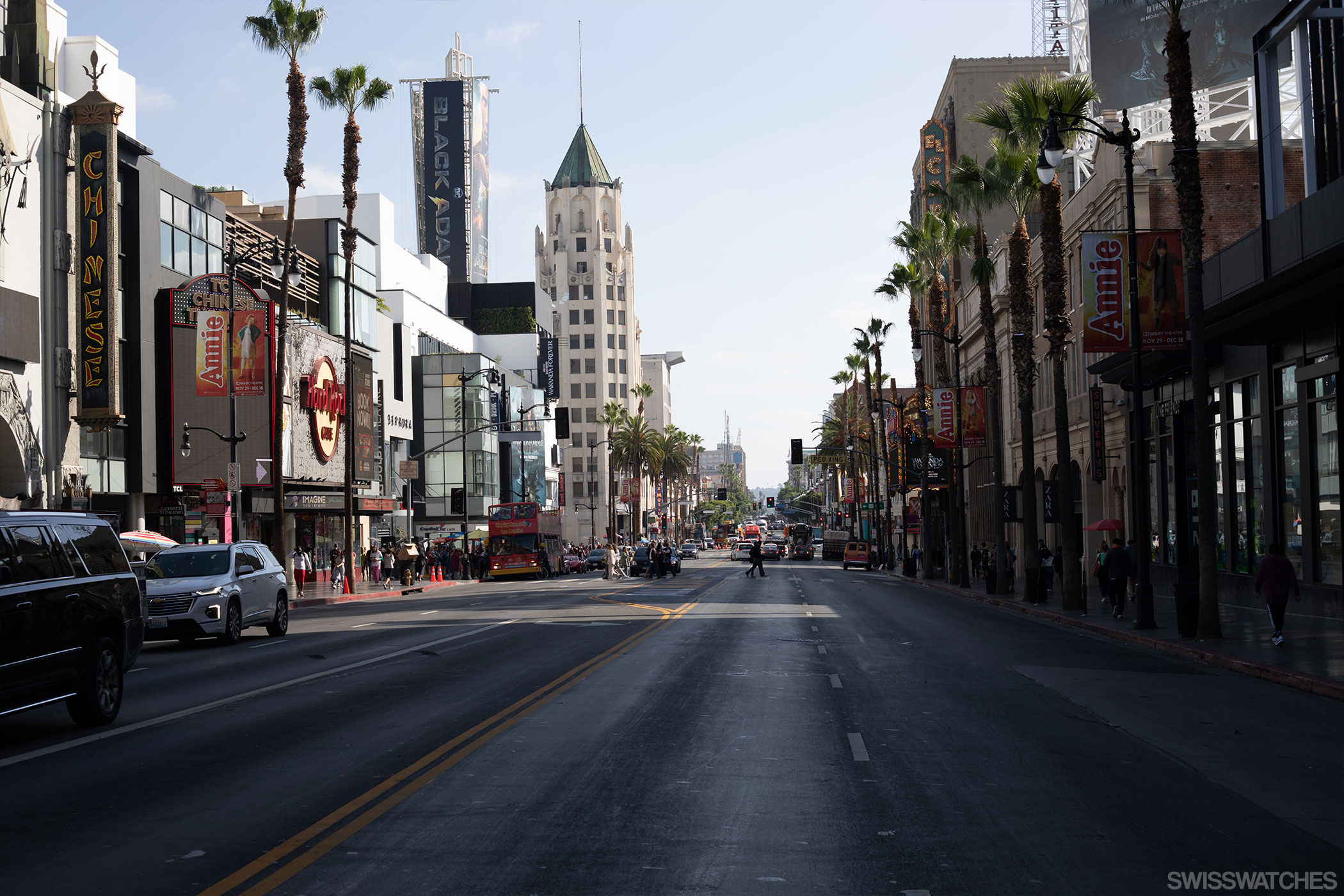
San Francisco, another highlight, is very picturesque and, compared to American cities, a small but fine city. However, it is also quite expensive. The history of the city, which until 1848 (the time of the California Gold Rush) was a modest and initially almost deserted village, is fascinating. After the discovery of gold, San Francisco grew rapidly and by 1870 had nearly 150,000 residents. To really experience it, 24 hours was far too little. I would definitely do this trip again with friends, and with at least two weeks to spare.
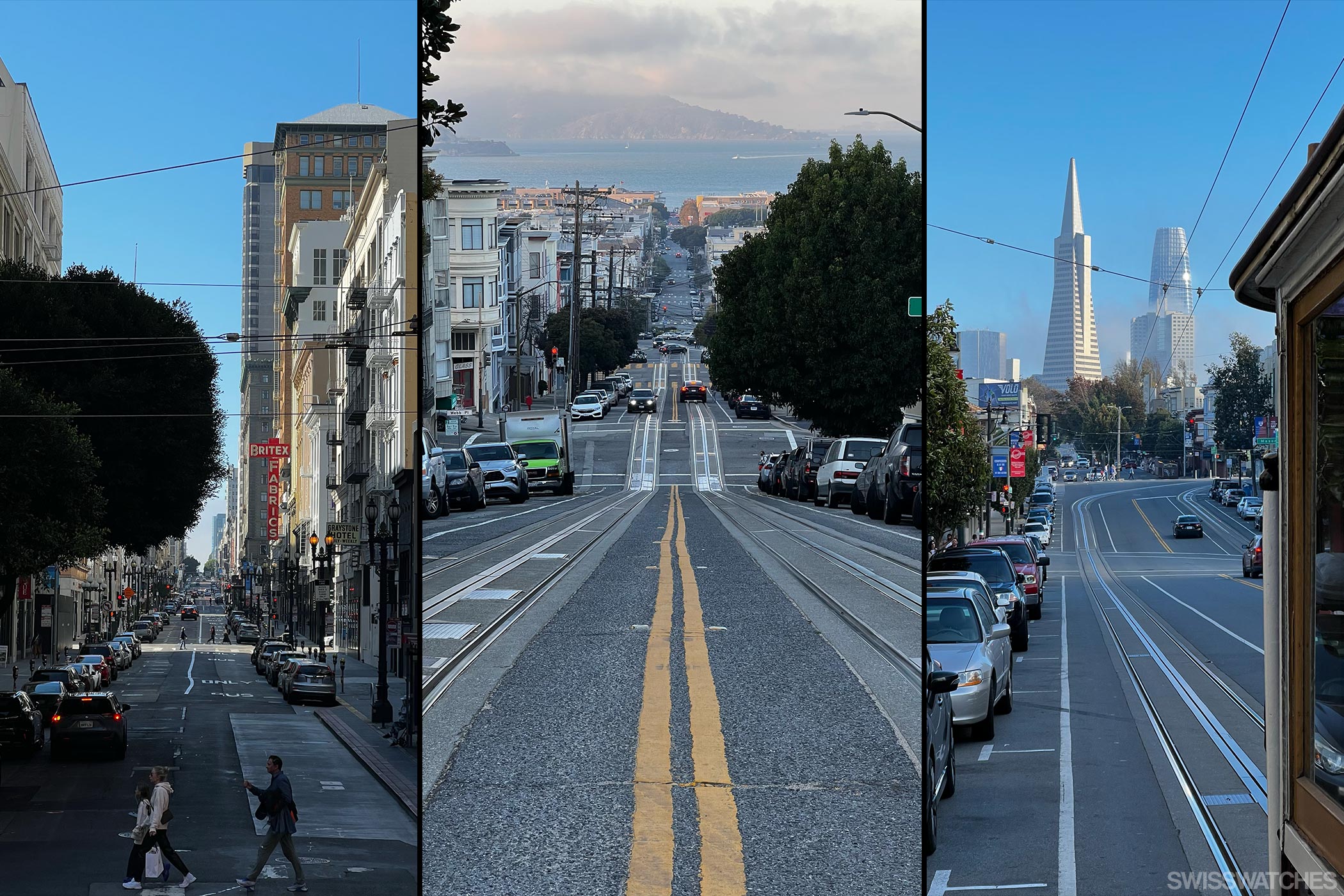
And my faithful watch companion? The Porsche Design 1919 Globetimer UTC is a very successful timepiece, both in terms of design and function, as well as in terms of craftsmanship. Thanks to the lightweight construction, you get used to the feel after 1-2 days and quickly forget that you are wearing a watch at all, although the ergonomics of this timepiece still leave room for improvement. Last year, the brand proved with the Porsche Design Chronograph 1 that they know how to build very wearable watches. I was allowed to try that out, too, and the ergonomics of the watch with its 40.8 mm diameter is almost perfectly executed. Still, it’s a mere trifling point, dwarfed by such an unforgettable journey.
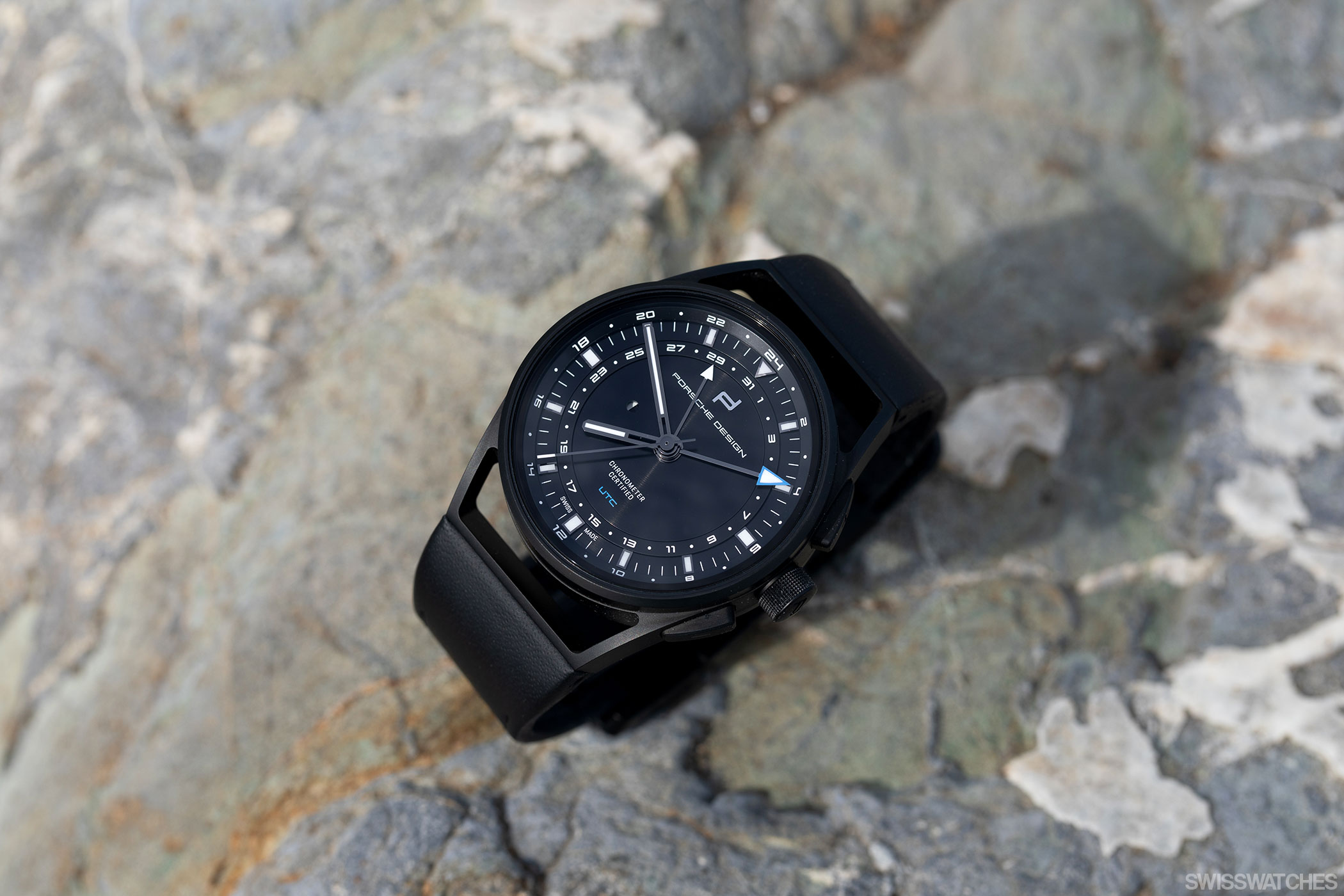
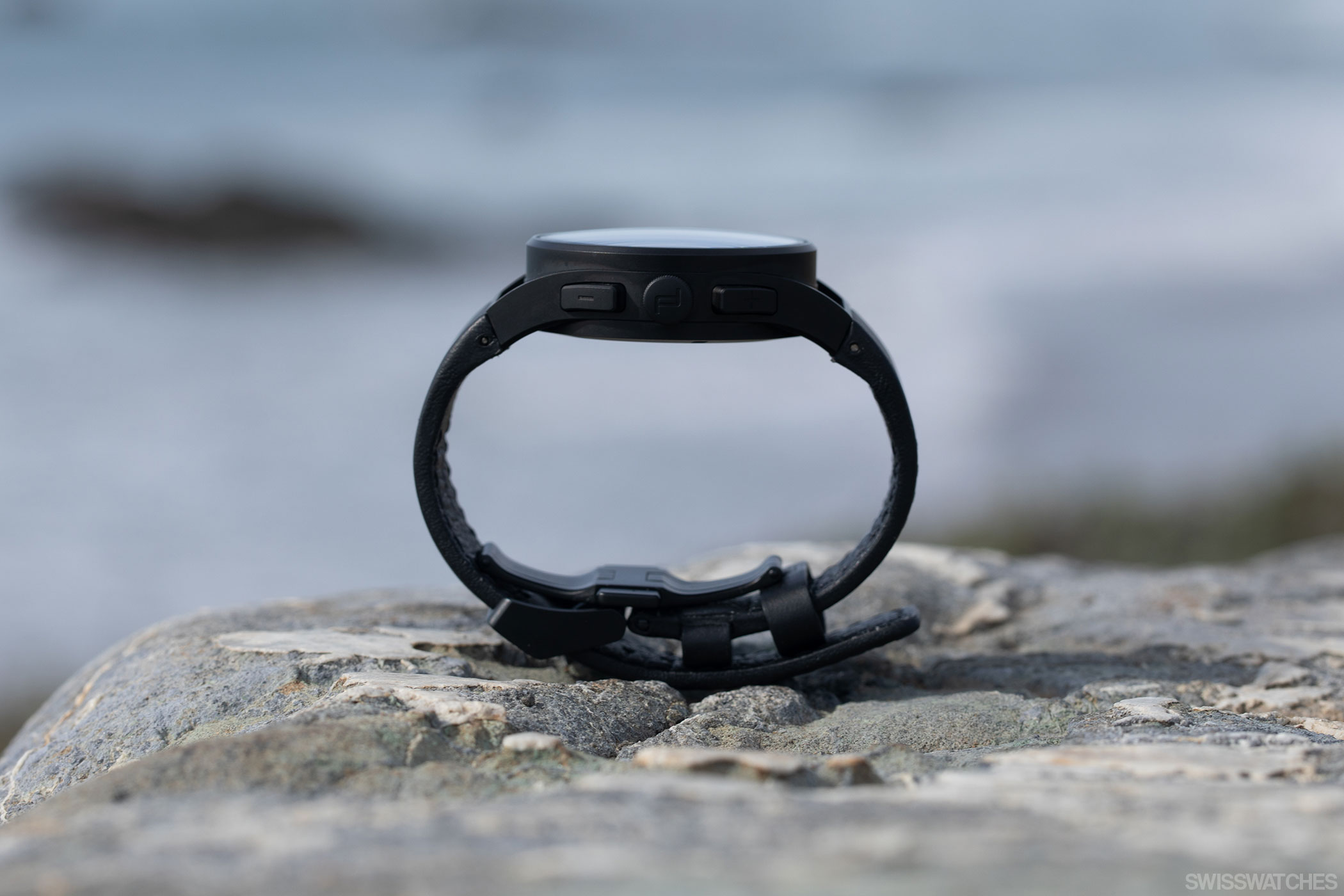
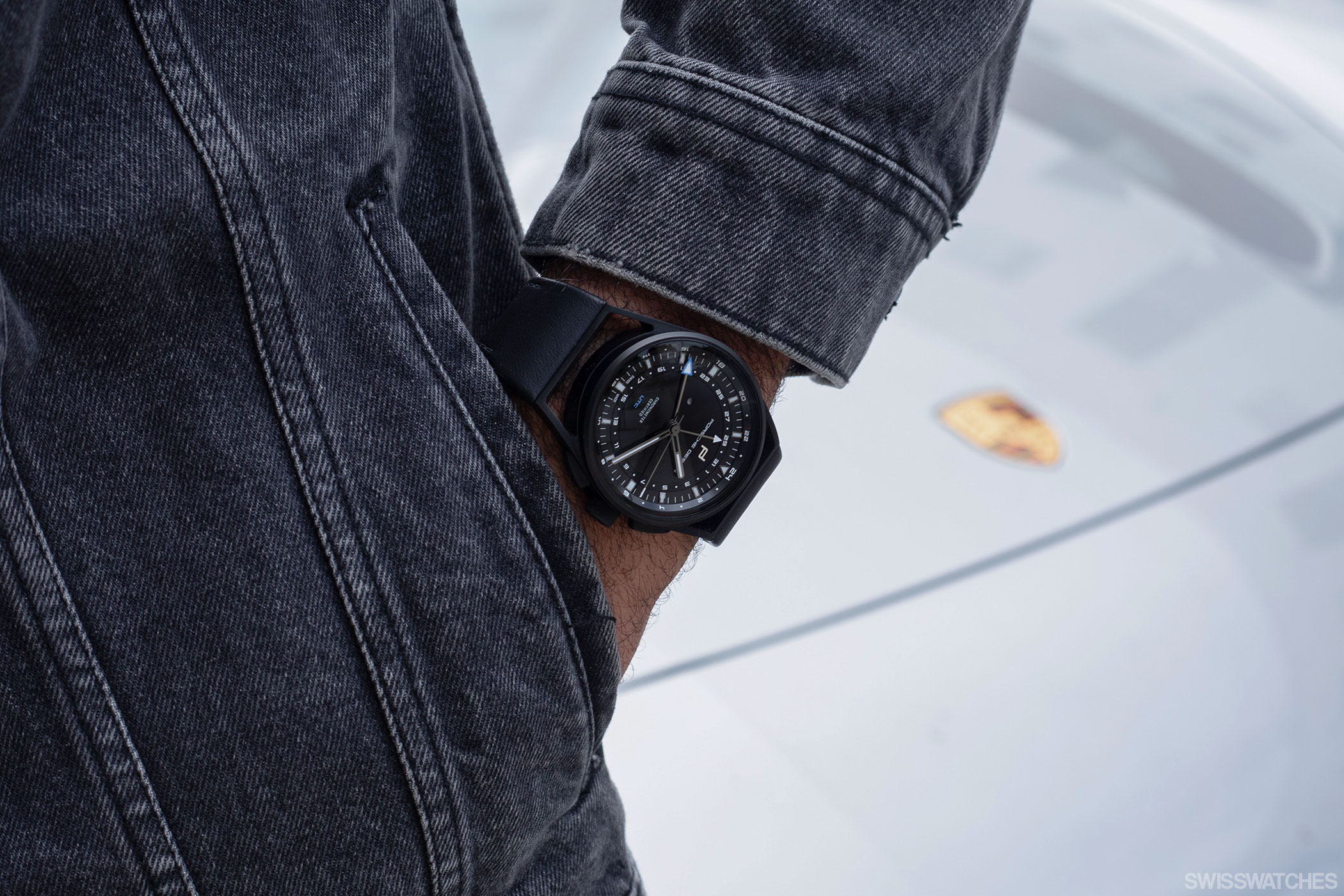
Panamera 4 E-Hybrid:
combined fuel consumption 2.5 l/100 km; CO2 emissions 56 g/km; energy consumption 15.9 kWh/100 km
Important time zones for the trip
| — UTC – Coordinated Universal Time UTC or coordinated universal time is the universal time used today and is determined by means of atomic time. |
| — CET – Central European Time CET stands for Central European Time (CET) and is the time zone referring to the 15th degree of longitude east. The difference to UTC is +1 hour. |
| — CEST – Central European Summer Time CEST stands for Central European Summer Time (CEST), which replaces CET during the summer half-year in Europe. The difference to UTC is +2 hours. |
| — PST – Pacific Standard Time PST stands for Pacific Standard Time and applies only to individual regions on the American west coast. It runs along the Pacific coast from Vancouver, Canada, to Seattle, San Francisco, Los Angeles, San Diego and Baja California, Mexico. The difference to UTC is -8 hours. |
